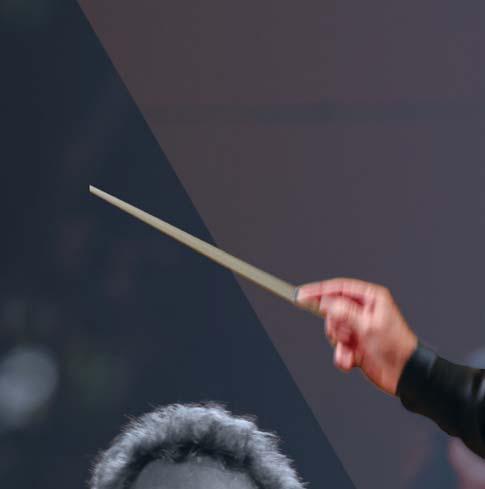

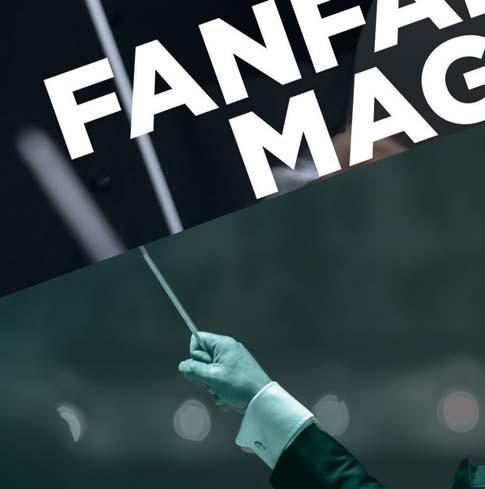
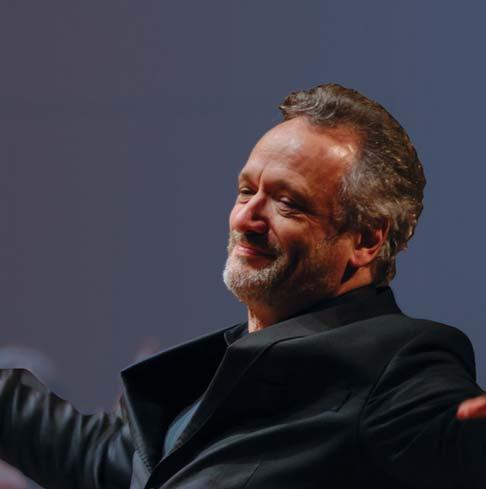

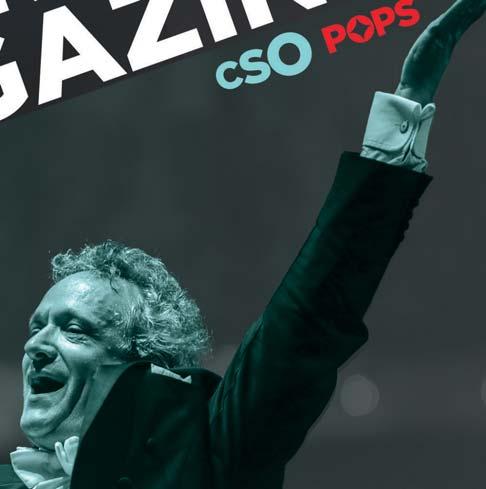

APR/MAY2024 From Lumenocity to Grand Finale
Oxford proudly supports the Cincinnati Symphony Orchestra.

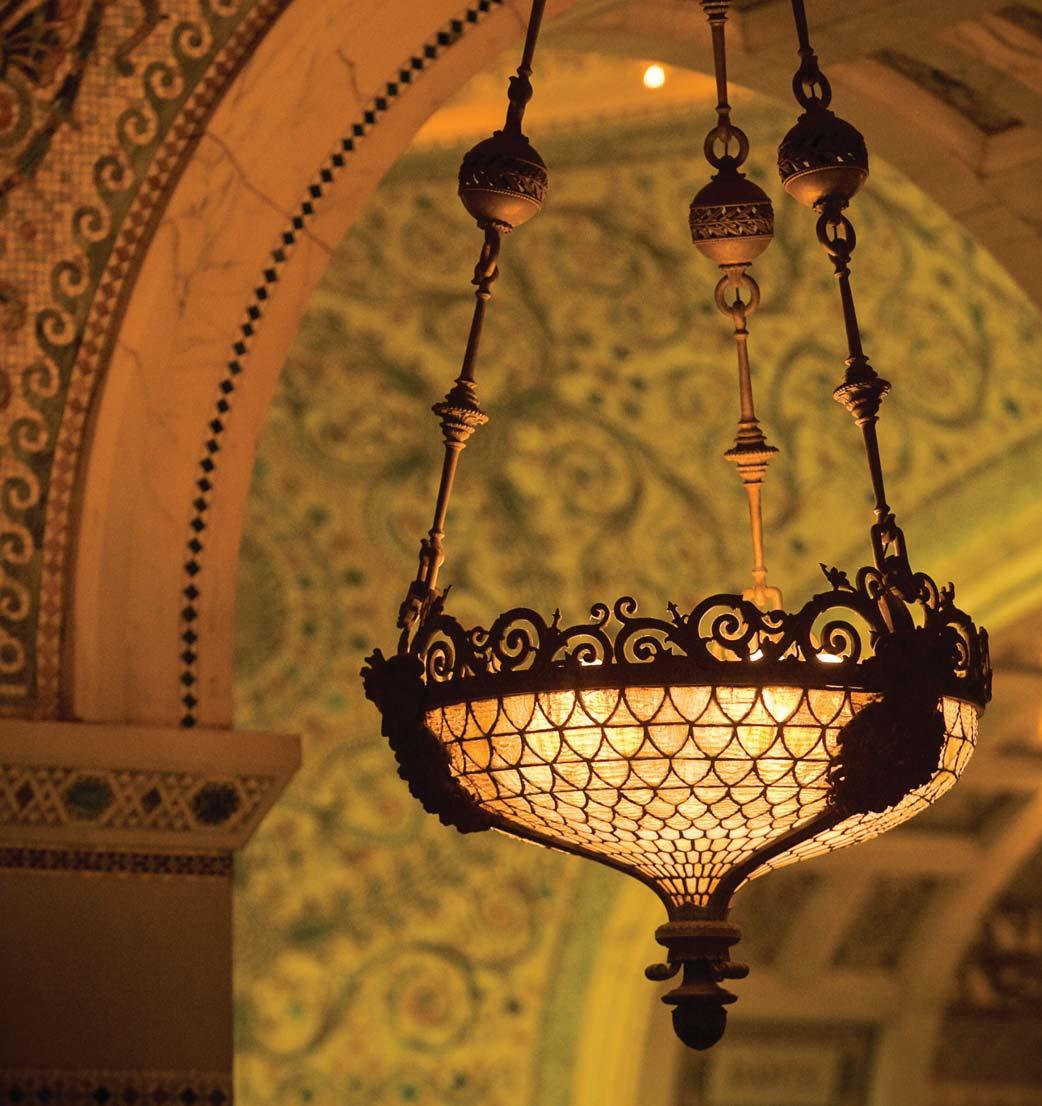
Oxford is independent and unbiased — and always will be. We are committed to providing multi-generational estate planning advice and forward-thinking investment solutions to families and institutions.
ATLANTA CHICAGO CINCINNATI GRAND RAPIDS INDIANAPOLIS MINNEAPOLIS PALM BEACH
513.246.0800 WWW.OFGLTD.COM/CSO
Oxford is an investment advisor registered with the U.S. Securities and Exchange Commission. Registration does not imply a certain level of skill or training.
Welcome
WE BELIEVE MUSIC LIVES WITHIN US ALL

regardless of who we are or where we come from. We believe that music is a pathway to igniting our passions, discovering what moves us, deepening our curiosity and connecting us to our world and to each other.
DIVERSITY, EQUITY AND INCLUSION
The Cincinnati Symphony Orchestra and Cincinnati Pops Orchestra’s commitment to diversity, equity and inclusion is catalyzed by systemic injustice and inequality perpetuated by individuals and institutions. Our mission is to seek and share inspiration, and at its essence, the CSO exists to serve our community. Our entire community. Reflecting our community and the world around at every level—on stage, behind-thescenes, and in neighborhoods throughout the region—is essential to the CSO’s present and future and makes us a strong ensemble and institution.
LAND ACKNOWLEDGEMENT
The Cincinnati Symphony Orchestra and Cincinnati Pops acknowledges that Cincinnati Music Hall occupies land that has been the traditional land of the Hopewell, Adena, Myaamia (Miami), Shawandasse Tula (Shawanwaki/Shawnee), and Wahzhazhe Manzhan (Osage) peoples, who have continuously lived upon this land since time immemorial. We acknowledge that this land was unceded and stolen via methods of genocide and ethnic cleansing by colonizers.
We honor past, present and future Indigenous peoples.



6
Part V, the last installment of our seasonlong focus on Louis Langrée and his CSO tenure, delves into the meaning behind Langrée’s programmatic choices for his final concerts and the message he hopes the music brings to our audience (plus a listing of his premieres, commissions and recordings), pp. 6–13. Louis’ final concerts as Music Director are May 10–12.
16
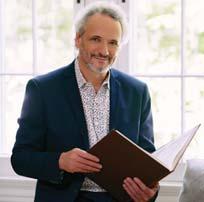
74
Series “Spotlight on Winds and
| Apr. 26–27: CSO Dvořák Symphony No. 8 | Apr. 28: CSYO Concert Orchestra (2 pm) and Philharmonic Orchestra (7 pm)| May 3–4: CSO Beethoven 7 & Dessner Premieres | May 10–12: CSO
ON THE COVER: CSO Music Director Louis Langrée.
Top: Langrée conducting Leonard Bernstein’s Symphonic Suite from On the Waterfront(Credit: JP Leong). Middle: Langrée conducting the CSO during Lumenocity 2013 (Credit: Mark Lyons).
Bottom: Langrée conducts the CSO at the 2017 Open House for the newly renovated Music Hall (Credit: Mark Lyons)


“Each year, we strive to tell new and different stories, getting into the glorious details and nuanced connections that make the Black experience so meaningful to everyone,” says JMR of Classical Roots concerts With special guest producer/rapper Hi-Tek, the Classical Roots Community Choir and other artists with Cincinnati connections, this year’s concert offers a convergence of music and words—poetry, gospel, hip-hop, and orchestral and choral works, pp. 16–18.
20
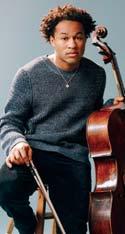
Sheku Kanneh-Mason, newly named the 2024 MAC Music Innovator, debuts with the CSO, along with rising young conductor Katharina Wincor. They share their thoughts on the program they’ll present, including Kanneh-Mason’s performance of Shostakovich’s Cello Concerto No. 1, pp. 20–21.


MAY 2024 All contents © 2023–24. Contents cannot be reproduced in any manner, whole or in part, without written permission from the Cincinnati Symphony Orchestra and Cincinnati Pops. CONTENTS 4 Directors & Advisors 5 Welcome from the President & CEO 6 Louis Langrée, Part V: Louis’ Grand Finale 12 Louis Langrée: A Legacy of Premieres, Commissions and Recordings 16 Classical Roots: Poetry, Verse, Rhyme and Reason 19 Save the Dates: 2024 Brady Block Parties 20 CSO Feature: Sheku Kanneh-Mason and Katharina Wincor: Young Blazing Careers 22 Spotlight: Honoring Retiring Orchestra Musicians 24 Spotlight: Why We Give 26 Orchestra Roster 27 Artistic Leadership: Louis Langrée, John Morris Russell 28 Guest Artist Biographies 40 Concerts and CSO Program Notes: Apr. 19: Classical Roots | Apr. 20–21:
Hadelich & Holland|
25:
Louis’ Grand Finale
APRIL/
CSO
Apr.
Winstead Chamber
Strings”
Financial Support
Administration
80
2 | 2023–24 SEASON

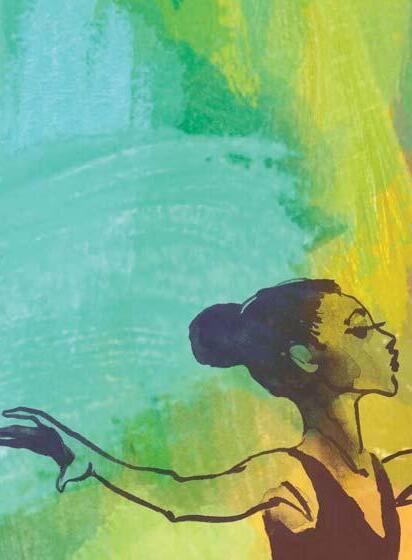








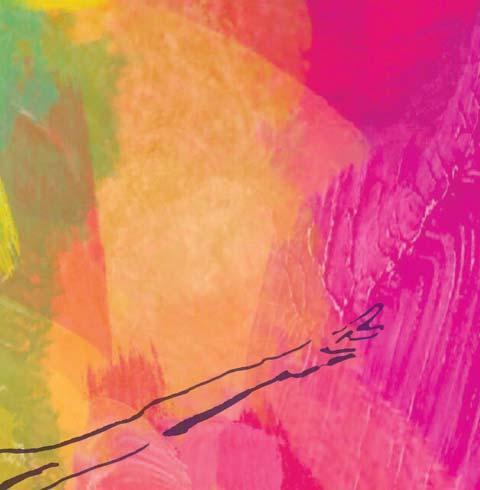



A proud sponsor of the musical arts























BOARD OF DIRECTORS
Officers
Dianne Rosenberg, Chair
Robert W. McDonald, Immediate Past Chair
CINCINNATI SYMPHONY
ORCHESTRA & CINCINNATI POPS
Music Hall, 1241 Elm Street, Cincinnati, OH 45202
Box Office: 513.381.3300 hello@cincinnatisymphony.org
Group Sales: 513.864.0196 groupsales@cincinnatisymphony.org
TTY/TDD: Use TTY/TDD Relay Service 7-1-1
cincinnatisymphony.org cincinnatipops.org
FANFARE MAGAZINE STAFF: Managing Editor
Tyler Secor
Senior Editor/Layout
Teri McKibben
Graphic Design
Stephanie Lazorchak
CINCINNATIMAGAZINE: Advertising and Publishing Partners for Fanfare Magazine
Publisher
Ivy Bayer
Production Director & IT Systems
Administrator
Vu Luong
Advertising Designer
Sophie Kallis
Account Representatives
Laura Bowling, Maggie Wint Goecke, Hilary Linnenberg, Chris Ohmer, Julie Poyer, Joe Hoffecker
Operations Director
Missy Beiting
Business Coordinator
Erica Birkle
Advertising and Business Offices 1818 Race Street, Suite 301 Cincinnati, OH 45202 | 513.421.4300
Subscriptions: 1.800.846.4333 cincinnatimagazine.com

You are welcome to take this copy of Fanfare Magazine home with you as a souvenir of your concert experience. Alternatively, please share it with a friend or leave it with an usher for recycling. Thank you!
Sue McPartlin, Treasurer and Vice-Chair of Finance
Gerron McKnight, Esq., Secretary
Timothy Giglio and Kari Ullman, Vice-Chairs of Volunteerism
Anne E. Mulder, Vice-Chair of Community Engagement
Charla B. Weiss, Vice-Chair of Institutional Advancement
Melanie Healey, Vice-Chair of Leadership Development
Directors
Dorie Akers
Heather Apple
Michael P. Bergan
Evin Blomberg
Kate C. Brown
Ralph P. Brown, DVM
Trish Bryan*
Otto M. Budig, Jr.*
Andria Carter
Andrea Costa
Adrian Cunningham
Gabe Davis
Dr. Maria Espinola
Mrs. Charles Fleischmann III*
Lawrence Hamby
Delores Hargrove-Young
Francie S. Hiltz*
Joseph W. Hirschhorn*
Lisa Diane Kelly
Edna Keown
Florence Koetters
Jonathan Kregor
Peter E. Landgren
John Lanni
Shannon Lawson
Spencer Liles*
Will Lindner
Holly Mazzocca
James P. Minutolo
Laura Mitchell
Lisa Lennon Norman
Bradford E. Phillips, III
Aik Khai Pung
James B. Reynolds*
Jack Rouse*
Lisa M. Sampson
Patrick Schleker
Valarie Sheppard
Stephanie A. Smith
Albert Smitherman
David R. Valz
Randolph L. Wadsworth, Jr.*
*Director Emeritus
BOARD OF DIRECTORS DIVERSITY, EQUITY & INCLUSION (DE&I) COMMITTEE, COMMUNITY ADVISORY COUNCIL and MULTICULTURAL AWARENESS COUNCIL
In May 2020, the CSO created a 10-point DEI Action Plan to prioritize the Orchestra’s work to better represent and serve the entirety of the Cincinnati community. Action items included the continued amplification of BIPOC artists on stage and in education programs; a review of hiring and compensation practices; organization-wide implicit bias training; increased mentorship opportunities; and the creation of a standing CSO Community Advisory Council (CAC) to strengthen ties to the community. We thank our many partners on the CAC and on our standing DE&I committee who are helping us with this important work.
CSO Board of Directors
DE&I Committee
Charla B. Weiss, Lead
Heather Apple
Ralph Brown
Andria Carter (MAC)
Adrian Cunningham
Maria Espinola
Delores Hargrove-Young
Lisa Kelly
David Kirk*
Gerron McKnight
Lisa Lennon Norman
Jack Rouse
Lisa Sampson
Stephanie Smith
*Community Volunteer
Primary Staff Liaison: Harold Brown
Other Staff: Kyle Wynk-Sivashankar
Community Advisory Council
Desiré Bennett, Design Impact
Daniel Betts, Cincinnati Recreation Commission
Jackie Taggart Boyd, Cincinnati Convention and Visitors Bureau/CincyUSA
Alexis Kidd, Seven Hills Neighborhood Houses
Candra Reeves, Urban League of Greater Southwestern Ohio
John P. Scott, Community Engagement
Partners
Billy Thomas, Cincy Nice
Staff: Key Crooms
Multicultural Awareness Council
Holly Bates
Susan Carlson
Andria Carter
Piper Davis
Kori Hill
Alverna Jenkins
Beverley Lamb
Kick Lee
Quiera Levy-Smith
RaeNosa Onwumelu
Yemi Oyediran
Aurelia “Candie” Simmons
Nakia Smith
Daphney Thomas
Staff: Key Crooms

4 | 2023–24 SEASON


Dear Friends of Music,
We’re at a very special moment in the history of the CSO, where we celebrate our Music Director Louis Langrée as he concludes his extraordinary 11-year tenure with us and assumes the role of Music Director Laureate.
We’re at a very special moment in the history of the CSO, where we celebrate our Music Director Louis Langrée as he concludes his extraordinary 11-year tenure with us and assumes the role of Music Director Laureate.
Since taking the helm as the 13th Music Director in 2013, Louis has championed bold programming and initiatives that have activated the commissioning of new music and brought new experiences, community-wide participation opportunities and global attention. He has commissioned a total of 65 new works during his tenure—more than any other Music Director in the Orchestra’s history—and conducted 31 premieres, expanding the extensive commissioning and premiering legacy of the CSO. He has led the Orchestra on successful European and Asian tours, as well as an appearance at Lincoln Center as part of the Great Performers series, and garnered two Grammy Award nominations for Best Orchestral Performance. He has presided over the Orchestra’s move from Music Hall during its major renovation, and, during the Covid-19 pandemic, catalyzed the Orchestra’s return to the stage in the fall of 2020 with a series of digitally streamed concerts that have garnered more than two million views to date.
Perhaps the most enduring of Louis’ achievements is within the Orchestra itself. During his tenure, Louis has appointed more than 40% of our Orchestra—an astounding 35 musicians, many of them in key leadership roles—which will undoubtedly underscore the sound of the ensemble for decades to come.
His achievements with the CSO alone are cause for a big celebration, but we also want to take a moment to celebrate Louis, his passion for creating and sharing music with as many people as possible, his thoughtful and humble way of living life, and the transformative impact he has had on our Orchestra and our community. This Orchestra—and the entire community of people who help run it—is forever changed by Louis. Therefore, we plan to share our deep gratitude and appreciation for Louis in the best way we know how—through music.
In addition to concerts with Louis spanning the final weeks of the season— Hadelich & Holland on April 20 & 21, Beethoven 7 & Dessner Premieres on May 3 & 4, CSO Proof: Wires on May 3, and the aptly named Louis’ Grand Finale May 10–12—we are pleased to announce our latest Fanfare Cincinnati release called American Dreams, a collection of American music that speaks to CSO history and celebrates excellent music-making with Louis. The album will be available across all streaming platforms beginning May 3, and a limited run of vinyl will be available for in-person purchases during the May CSO concerts.
We also share more about Louis and our Orchestra in the stories within Fanfare Magazine. Ken Smith shares his final story in our Louis Langrée series. This installment delves into the meaning behind Langrée’s programmatic choices for his final concerts and the message he hopes the music brings to our audience. Hannah Edgar writes about our 2024 MAC Music Innovator Sheku Kanneh-Mason and what the residency entails, as well as his CSO debut. Dr. A. Kori Hill writes about this year’s Classical Roots program, highlighting Black voices in poetry, verse, rhyme and reason. Kit Gladieux talks with Associate Principal Trumpet Douglas Lindsay and cellist Theodore Nelson ahead of their retirements. And as we wrap up our season at Music Hall, we’re pleased to announce the dates and locations for this summer’s Brady Block Parties, a series of free community events anchored by outdoor CSO concerts in neighborhoods across the region.
Our mission has been, and continues to be, service to the community through music. It is through music that we seek and share inspiration, and it is through music that we make the most meaningful impact. Thank you for joining us. We are heartened by your attendance and ongoing support of our Orchestra, and we look forward to seeing you again soon.

 Jonathan Martin
Jonathan Martin
Fanfare Magazine | 5 WELCOME FROM THE PRESIDENT AND CEO
©Roger Mastroianni
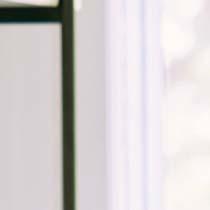
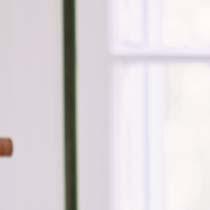
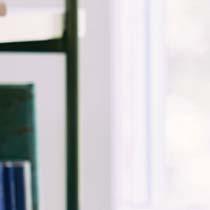
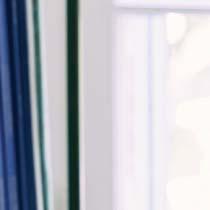
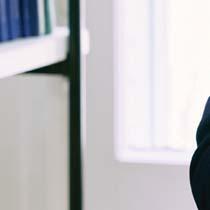



Louis’ Grand Finale


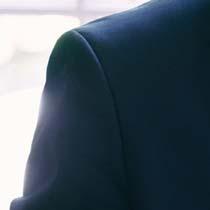


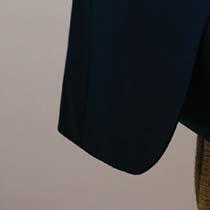

 by KEN SMITH
by KEN SMITH

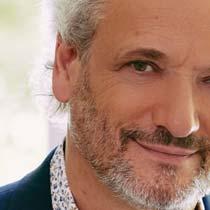

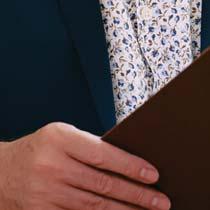



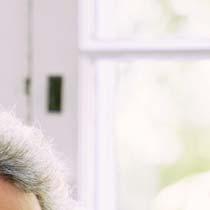

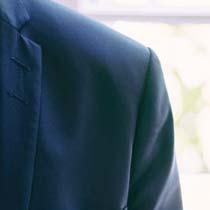


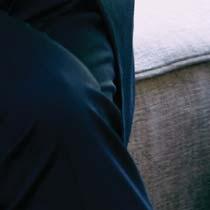
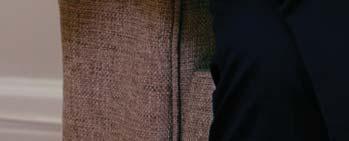



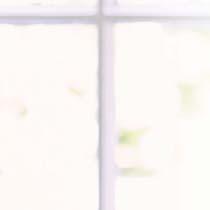


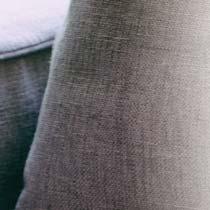

V
LOUIS LANGRÉE, Part
6 | 2023–24 SEASON
Photo: Claudia Hershner

Like anyone getting ready for a grand exit, Louis Langrée’s final weeks as Music Director of the Cincinnati Symphony Orchestra are filled with fond recollections and moments of looking ahead.
Langrée and the Orchestra have planned a final program to highlight a few fond recollections: Dukas’ The Sorcerer’s Apprentice, which the CSO performed with Langrée on tour in Hong Kong in 2017, and the second suite from Ravel’s ballet Daphnis et Chloé, which had been included in the CSO’s all-French program that reopened Music Hall in 2018, after its extensive renovation.

“Musically, I think this is actually a perfect condensation of what we’ve done together in Cincinnati,” he explains. “We’re performing a great ballet of the early 20th century and also the Dukas tone poem, which might be famous because of Fantasia but really comes from a poem by Goethe. Musically, however, its dimensions are much bigger. Just as Strauss’ Alpine Symphony is a transcendental journey and not some touristic view of the mountains, The Sorcerer’s Apprentice is more than Mickey Mouse with a broom. It’s one of the greatest orchestral


pieces ever written, a shimmering lava of sound that perfectly showcases our musicians both individually and collectively.”
Nothing looks ahead quite like new music, and on that front Langrée also looks back fondly at his years in Cincinnati, having conducted almost half of the 65 pieces commissioned by the CSO during his tenure. “I’m very proud of those achievements, whether they were world premieres, U.S. premieres or simply works new to Cincinnati,” he says. “I had many guides here who opened up wonderful worlds for me.”
One such guide was Bryce Dessner, a Cincinnati-born composer and member of the Grammy-winning rock band The National, who— perhaps not incidentally—now lives in France, dividing his time between Paris and the Basque Country. “I first met him in Brooklyn,” Langrée
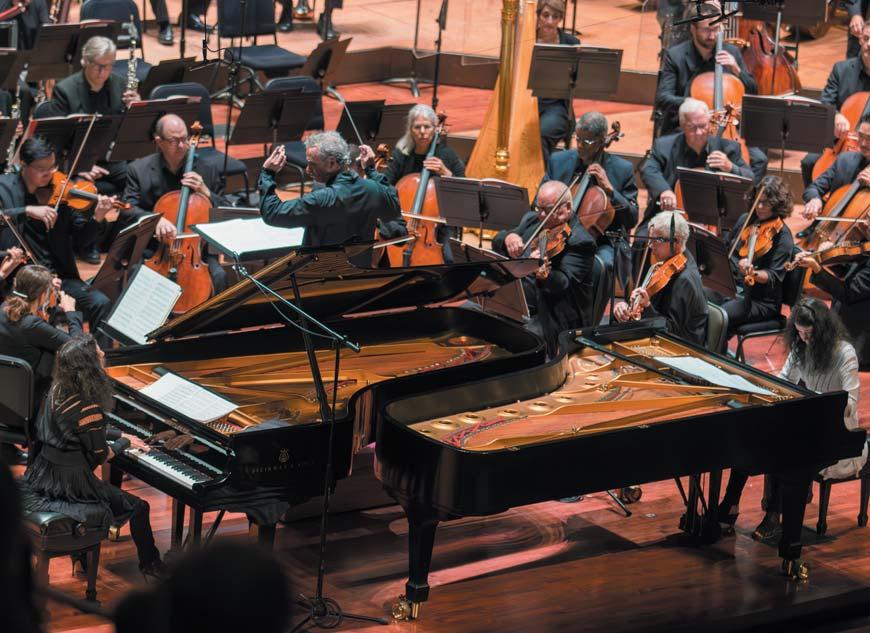
LOUIS LANGRÉE, Part V
Fanfare Magazine | 7
Louis Langrée leads the Orchestra, with duo-pianists Katia and Marielle Labèque, in the U.S. premiere of Bryce Dessner’s Concerto for Two Pianos, September 2019. Credit: Lee Snow

smiles with a gleam of recognition. “Now he lives near where Ravel was born.”
That initial meeting proved quite fruitful for both sides. Since founding MusicNOW in 2006, Dessner had quickly made his recurring event a noted showcase for contemporary musicians from around the world. What MusicNOW soon gained, for several years, was a resident symphony orchestra.
In 2014, the CSO’s first MusicNOW appearance featured Dessner’s Murder Ballades with Eighth Blackbird and St. Carolyn by the Sea, a concerto for two electric guitars with Dessner performing with his twin brother Aaron, along with Scriabin’s The Poem of Ecstasy and the world premiere of Nico Muhly’s Pleasure Ground with baritone Nathan Wyatt. The next night featured both Penderecki’s Polymorphia and Johnny Greenwood’s 48 Responses to Polymorphia, as well as Prokofiev’s Scythian Suite and the world premiere of David Lang’s mountain
“Looking back now, I can’t imagine how we did it,” Langrée says. “How did we rehearse

Part V 8 | 2023–24 SEASON
LOUIS LANGRÉE,
At left, Louis Langrée leads the CSO and the band The National in a 2015 MusicNOW festival performance. Below: Aaron and Bryce Dessner, electric guitars, take center stage for Bryce’s St. Carolyn by the Sea, in the Orchestra’s first MusicNOW concerts (2014), Louis Langrée conducting. Credit: Mark Lyons

all these new pieces in a single week? The joy, the energy of mixing those various styles was simply fantastic. And in the audience, you had people who came only to hear the Dessner brothers and discovered Scriabin, and those who came only for Prokofiev and found David Lang.”
Dessner’s new Piano Concerto, which receives its U.S. premiere on May 2 and 3 with soloist Alice Sara Ott, is a natural— perhaps inevitable—followup to his Concerto for Two Pianos (which can be heard on May 3 as part of the CSO Proof concert, Wires), whose 2019 U.S. premiere Langrée also conducted with the CSO and soloists
new concerto he wrote specifically for Alice Sara Ott. This is when musicians become part of the creative process. They are not merely playing a piece, but have become the composer’s voice.”
“The joy, the energy of mixing those various styles was simply fantastic. And in the audience, you had people who came only to hear the Dessner brothers and discovered Scriabin, and those who came only for Prokofiev and found David Lang.”
—Louis Langrée
Katia and Marielle Labèque. “Bryce’s new piece, with its obsessive rhythm, is very much in the same musical language as the piece he wrote for the Labèque sisters,” he says.
Much of that connection, Langrée posits, comes from the composer writing for specific musicians he knows well. “Bryce is very close friends with Katia and Marielle, which is also why he now has a house in the country near them,” he says. “His
Perhaps even more directly, soprano Latonia Moore— Anthony Davis’ own choice as soloist—will also become his surrogate voice. And much like Dessner’s new concerto, which caps his relationship with the CSO, the world premiere of Davis’ song cycle evolved from a fruitful association with Langrée and the Orchestra.
Langrée first discovered Davis’ clarinet concerto You Have the Right to Remain Silent during the Covid pandemic. In terms of a Davis revival, the CSO’s virtual performance was arguably second only to the composer’s 1986 opera X: The Life and Times of Malcolm X (originally premiered at New York City Opera) finally making it to the Metropolitan Opera in 2023.
“It was during the pandemic that my assistant Tyler Secor brought me Anthony’s score and told me I should read the piece,” Langrée recalls. “In
LOUIS LANGRÉE, Part V
Louis Langrée leads members of the Cincinnati Symphony Orchestra in a rehearsal for the virtual performance of Anthony Davis’ You Have the Right to Remain Silent, with clarinetist Anthony McGill.
Fanfare Magazine | 9

the beginning I thought, well, it was Covid. We were all silent. I found it very philosophical: Is music a form of silence? Can silence be music? And Tyler said, ‘No, it’s not about that at all.’”
Rather, Davis’ 2010 piece recounts his experience in the 1970s being stopped by the police and held at gunpoint for 45 minutes because he matched the description of a robbery suspect. Davis immediately had a solo instrument and scenario in mind: “The idea is that the orchestra is interrogating the clarinet,” he explains. The piece later became the basis for the composer’s 2020 Pulitzer Prize-winning opera The Central Park Five
“I thought, this piece is so strong, so powerful. Why isn’t it performed more?” Langrée recalls. “I’m very proud that the New York Philharmonic has now programmed it, as has the Boston Symphony and several other orchestras. Through our presentation, the piece was given a second life.”
Much of the power in the CSO’s performance, Langrée claims, was due to the presence of former CSO musician Anthony McGill, now principal clarinetist of the New York Philharmonic. (“Anthony was still friends with the musicians, not a star soloist coming down from Olympus,”
he adds.) But Langrée gives even more credit to having the composer on hand during rehearsals.
“On a human level, Anthony is very generous and patient when something doesn’t work,” he says. “He’s also very pragmatic. Being a performer himself, he gives very simple and essential advice that brings you into his world with very few words. The Orchestra could respond to him both as a composer and jazz player. Let’s not forget that the CSO recorded an LP with Duke Ellington. One specific trait of this Orchestra is that they speak many musical languages fluently, without accent.”
CSO musicians and audiences look ahead with yet another new piece, with Langrée conducting former CSO resident composer Jonathan Bailey Holland’s Assemble on April 20 and 21, a week after he leads the piece’s world premiere with the Los Angeles Philharmonic. “Assemble is literally about assembling instrumental groups in the orchestra,” Langrée says, “starting with the percussion.”
Filling the program, though, is more unfinished business. After Schoenberg’s lush, post-Romantic Transfigured Night, the performance draws to a
LOUIS LANGRÉE, Part V
10 | 2023–24 SEASON
Louis Langrée with composer Jennifer Higdon (left) and members of Eighth Blackbird, after their performance of Higdon’s On a Wire.
close with Augustin Hadelich performing Brahms’ Violin Concerto. “Augustin has always been an ideal partner,” Langrée claims, “because he considers himself a colleague of the orchestra.”
Hadelich’s first collaboration with Langrée and the CSO was Berg’s Violin Concerto in 2016, followed by Barber’s Violin Concerto and Ravel’s Tzigane in 2019. The next year, the violinist returned with the Violin Concerto by Joseph Bologne, Chevalier de Saint-Georges. “So, after covering the 20th and 18th centuries, we finally get around to filling in the 19th,” Langrée adds.
Filling the gaps in other CSO lineups, though, is Beethoven, which Langrée defines in part as classical music’s default programming. “Beethoven is the root of any orchestral sound,” he says, “but given the German history here, it’s particularly the case in Cincinnati.”
The key question, though, is which Beethoven. To match Dessner’s Mari and Piano Concerto, Langrée has chosen the Seventh Symphony “mostly for its driving rhythms.” For his final concerts, Langrée will open the program with the Leonore Overture No. 2. “First of all, this is the overture to an opera, and I have wonderful memories of performing opera with the Orchestra, from Hamlet most recently to La bohème with
Cincinnati Opera in 2017,” he says. “Second, it is about this particular opera.”
Whether in its early incarnation as Leonore, which he led in Lausanne, or as Fidelio, which he conducted at Glyndebourne—or even alternating between the two, as he did at Paris’ Théâtre des Champs Élysées—Beethoven’s only opera has long been close to Langrée’s heart. “As either Leonore or Fidelio, the opera speaks about freedom and equality,” he says. “The mission of this Orchestra is not just to present beautiful music, but to give it meaning, to use music to bring people together. Beethoven uses music to address a humanistic message to the world.”
In that regard, he adds, Beethoven and Davis have much in common. “After so many decades, Anthony Davis’ music remains powerful because many of its social concerns are still valid,” he continues. “I would say the same about Beethoven. Great pieces stand the test of time because, even when the syntax changes, the message is still about the human condition. Beethoven’s music still speaks to us today because our problems are still the same.”
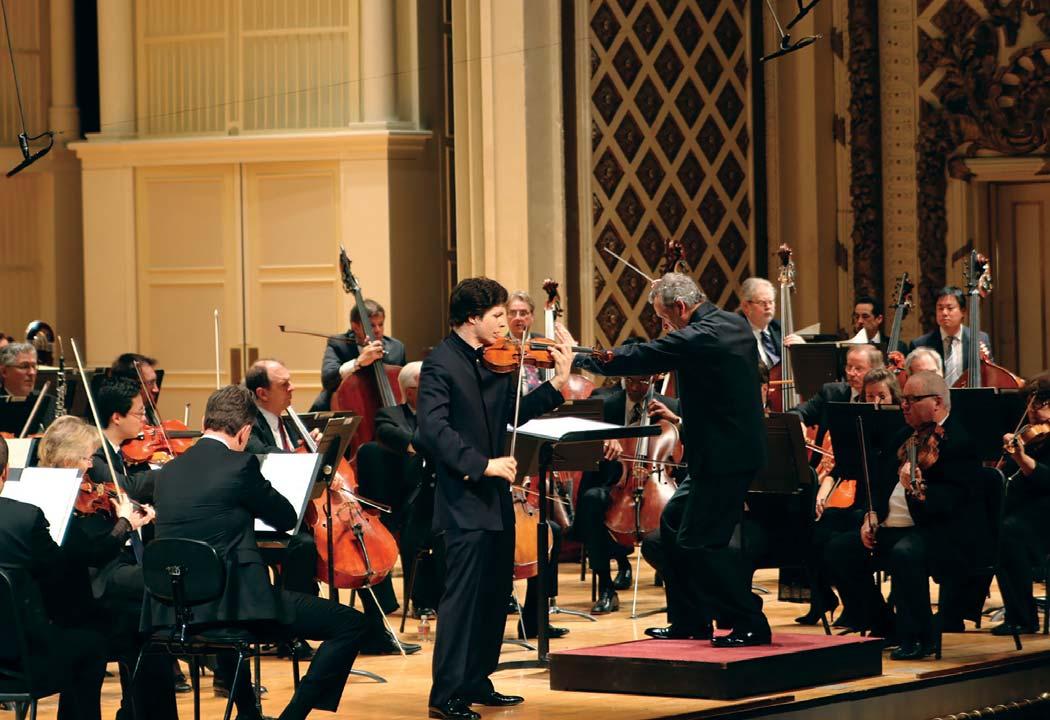
LOUIS LANGRÉE, Part V Fanfare Magazine | 11
Violinist Augustin Hadelich, in his 2016 CSO debut, performing Berg’s Violin Concerto, Louis Langrée conducting. Credit: Lee Snow
Louis Langrée: A Legacy of Premieres, Commissions and Recordings
Louis Langrée-conducted World Premieres with the CSO
Nico MUHLY Pleasure Ground with Nathan Wyatt, baritone (March 2014)
David LANG mountain (March 2014)
André PREVIN Concerto for Violin, Cello and Orchestra with Jaime Laredo, violin and Sharon Robinson, cello (November 2014)
Caroline SHAW Lo with Caroline Shaw, violin (March 2015)
Daníel BJARNASON Collider (March 2015)
TJ COLE Elegy (November 2015)
Jonathan Bailey HOLLAND Equality (November 2015)
Kristin P. KUSTER Forgive (November 2015)
Sebastian CURRIER FLEX (November 2015)
Thierry ESCAICH Psalmos, Concerto for Orchestra with Thierry Escaich, organ (May 2016)
ZHOU Tian Concerto for Orchestra (May 2016)
Michael FIDAY Three for One (November 2016)
Jonathan Bailey HOLLAND Stories from Home (October 2017)
Emily COOLEY Abound (November 2017)
Pierre JALBERT Passage (April 2018)
Jonathan Bailey HOLLAND Ode (November 2018)
Christopher ROUSE Symphony No. 6 (October 2019)
William WINSTEAD Passages in Time (January 2020) with Cincinnati Symphony Youth Orchestra
Christopher CERRONE A Body, Moving (April 2021)
Sebastian CURRIER Track 8 (November 2021)
KINDS OF KINGS Nine Mothers (March 2022) with Eighth Blackbird
Julia ADOLPHE Paper Leaves on Fields of Clay (April 2022)
Guillaume CONNESSON Les belles heures, concerto pour hautbois et orchestra with Dwight Parry, oboe (May 2022)
Gabriela ORTIZ Tzam (May 2022)
Samuel ADAMS Variations (March 2023)
Courtney BRYAN House of Pianos with Courtney Bryan (May 2023)
Anthony DAVIS Broken in Parts with Latonia Moore (May 2024)
Louis Langrée-conducted US Premieres with the CSO
Bryce DESSNER Réponse Lutosławski (March 2016)
Bryce DESSNER Concerto for Two Pianos with Katia and Marielle Labèque, duo pianos (September 2019)
Anna MEREDITH Anno (October 2021) with Charles Morey, violin and Eleanor Meredith, visuals
Bryce DESSNER Piano Concerto with Alice Sara Ott, piano (May 2024)
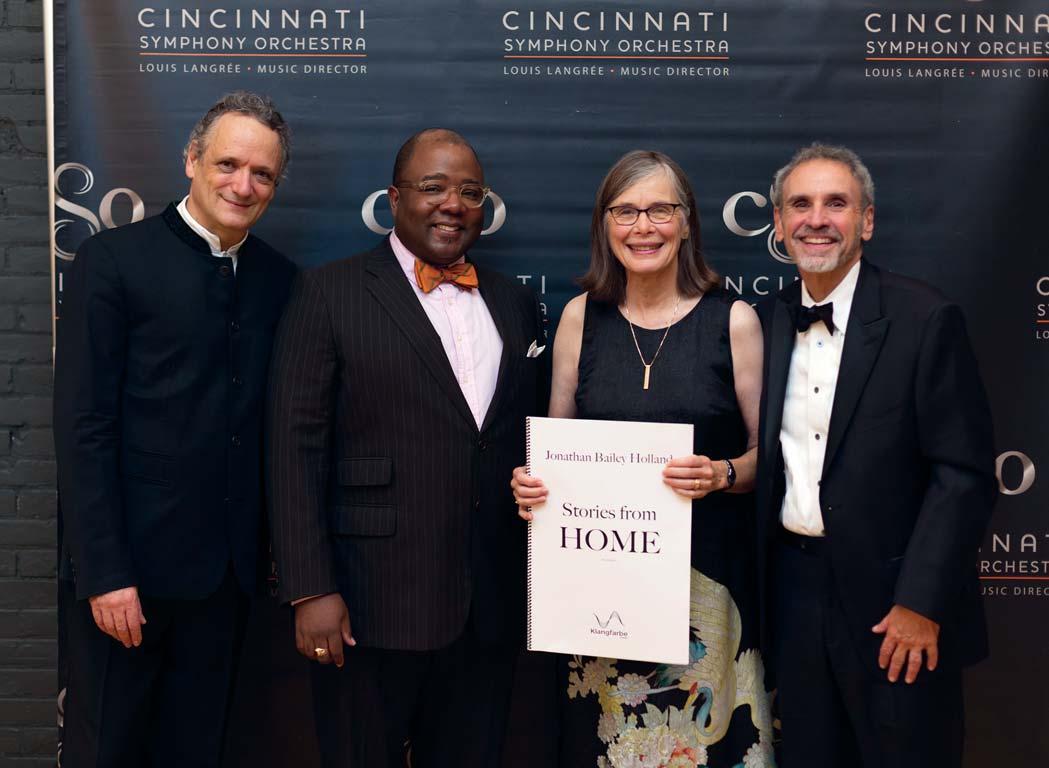
12 | 2023–24 SEASON
CSO Music Director Louis Langrée with composer Jonathan Bailey Holland and commission underwriters Irwin and Melinda Simon following the October 2017 world premiere of Holland’s Stories from Home
Louis Langrée Commissions with the CSO
Orchestral Works:
Samuel ADAMS Variations
Julia ADOLPHE Equinox for Chorus with May Festival Chorus
Julia ADOLPHE Paper Leaves on Fields of Clay
Daníel BJARNASON Collider
Daníel BJARNASON I Want to Be Alive Trilogy for Orchestra
Courtney BRYAN House of Pianos (Courtney Bryan, piano)
Christopher CERRONE A Body, Moving
Enrico CHAPELA Radioaxial
Billy CHILDS Saxophone Concerto (Steven Banks, saxophone)
TJ COLE Elegy
Guillaume CONNESSON Les belles heures, concerto pour hautbois et orchestra (Dwight Parry, oboe)
Emily COOLEY Abound
Sebastian CURRIER FLEX
Sebastian CURRIER Track 8
Anthony DAVIS Broken in Parts (Latonia Moore, soprano)
Bryce DESSNER Piano Concerto (Alice Sara Ott, piano)
Thierry ESCAICH Psalmos, Concerto for Orchestra (Thierry Escaich, organ)
Michael FIDAY Three for One
Jennifer HIGDON On A Wire with Eighth Blackbird
Jonathan Bailey HOLLAND Equality
Jonathan Bailey HOLLAND Stories from Home
Jonathan Bailey HOLLAND Ode
Jonathan Bailey HOLLAND Assemble
Pierre JALBERT Passage
FLUTRONIX (Nathalie Joachim & Allison Loggins-Hull) Black Being (Nathalie Joachim & Allison Loggins-Hull, Flutronix)
KINDS OF KINGS Nine Mothers (Eighth Blackbird)
Kristin P. KUSTER Forgive
David LANG mountain
Wynton MARSALIS Herald, Holler and Hallelujah!
Missy MAZZOLI Violin Concerto (Procession) (Jennifer Koh, violin)
Nico MUHLY Pleasure Ground (Nathan Wyatt, baritone)
Shara NOVA Look Around
Gabriela ORTIZ Tzam
Matthias PINTSCHER Assonanza (Leila Josefowicz, violin)
André PREVIN Concerto for Violin, Cello and Orchestra (Jaime Laredo, violin and Sharon Robinson, cello)
Christopher ROUSE Symphony No. 6
Gunther SCHULLER Symphonic Triptych
Caroline SHAW Lo (Caroline Shaw, violin)
Caroline SHAW The Observatory
Mark SIMPSON Violin Concerto (Nicola Benedetti, violin)
Mark SIMPSON Piano Concerto
Gabriella SMITH f(x) = sin2x – 1/x
William WINSTEAD Passages in Time with Cincinnati Symphony Youth Orchestra
Julia WOLFE Fountain of Youth ZHOU Tian Concerto for Orchestra
Solo Fanfares:
Michael ABELS Salute in Solo (Christian Colberg, viola)
Samuel ADAMS No Solo (Owen Lee, bass & Samuel Adams, piano)
Marcos BALTER Evens (Michael Culligan, percussion)
Daníel BJARNASON Same Yet Different (Daníel Bjarnason, piano)
Peter BOYER Fanfare for Tomorrow (Elizabeth Freimuth, horn)
Courtney BRYAN Fanfare for Moments of Courage (Ixi Chen, clarinet)
Bryce DESSNER Pour les soignants (Ilya Finkelshteyn, cello)
Du YUN The Rest is Our World (Gillian Benet Sella, harp)
Rhiannon GIDDENS Viola Fanfare (Edna Pierce, viola)
Ted HEARNE The Luminous Road (Nathalie Joachim, piccolo)
Jonathan Bailey HOLLAND Trouble (Cristian Ganicenco, trombone)
Gabriel KAHANE kiivetä kotin (Pekka Kuusisto, violin)
Laura KARPMAN Front Lines: Fanfare for Solo Tuba (Christopher Olka, tuba)
Missy MAZZOLI Fanfare for the Unimpressed (Stefani Matsuo, violin)
Jeffery MUMFORD Let Us Breathe (Daniel Culnan, cello)
Matthias PINTSCHER Vitres (fragment…) (Dwight Parry, oboe)
Carlos Rafael RIVERA A Fanfare for Stories Lost (Douglas Lindsay, trumpet)
Caroline SHAW A Day at a Time (Charles Morey, violin)
Tyshawn SOREY For Peter Evans (Apologies for the Brevity) (Robert Sullivan, trumpet)
Georgia STITT Fanfare for the Ups and Downs (Christopher Pell, clarinet)
Louis Langrée Recordings with the CSO Albums:
Hallowed Ground released in 2014
The Music of Lumenocity 2013 released in 2016
The Music of Lumenocity 2014 released in 2016
Concertos for Orchestra released in 2016
Grammy-nominated for Best Orchestral Performance
Grammy-nominated for Best Contemporary Classical Composition for ZHOU Tian’s Concerto for Orchestra
Transatlantic released in 2019
Grammy-nominated for Best Orchestral Performance
Singles:
Beethoven Symphony No. 9 released online in 2013 as part of the One City, One Symphony Project
Tchaikovsky’s Symphony No. 4 released online in 2014 as part of the One City, One Symphony Project man made by David Lang released in 2023
Christopher Rouse: Symphony No. 6 released in 2023

Fanfare Magazine | 13
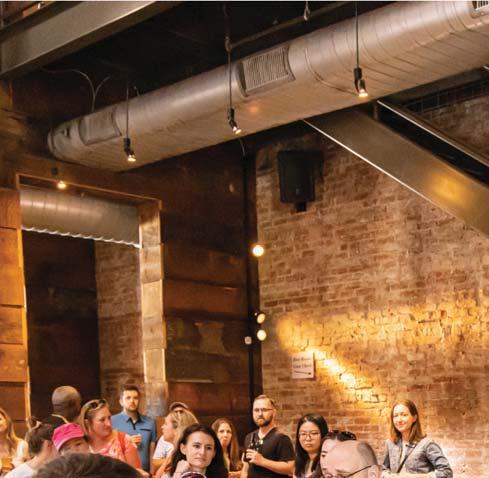
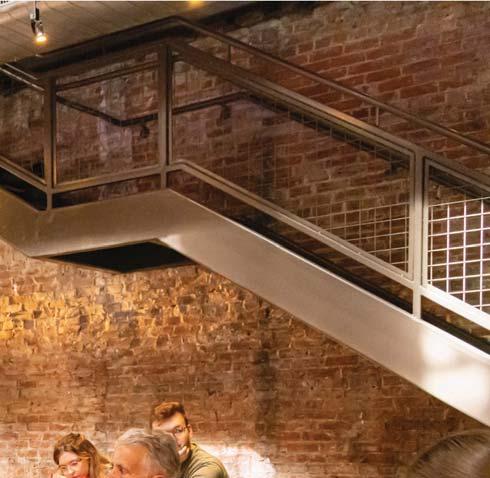
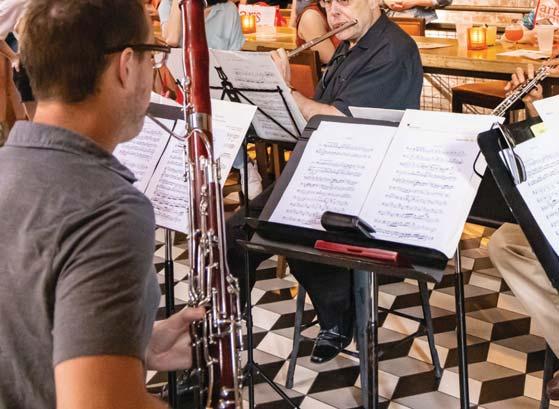


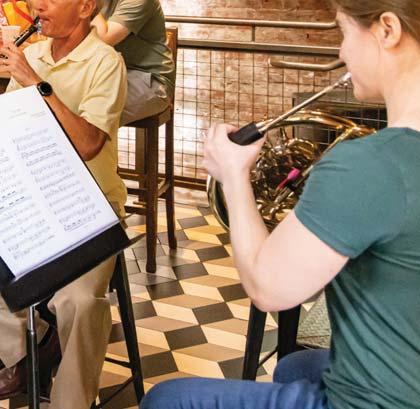



stronger arts for a stronger region


We don’t make the music you’ll hear on stage, but for nearly 100 years, we’ve been the primary way Cincy’s arts are funded. Your gift to ArtsWave ripples out across our communities to create a more vibrant future for everyone.
With tens of thousands of gifts from people like you, ArtsWave is proud to support the Cincinnati Symphony Orchestra, plus over a hundred other artsorganizations and artists that make our region stronger.
Make your gift today at artswave.org



For the last three years, Cincinnati has placed in the Top 20 among 900 U.S. regions on SMU’s National Arts Vibrancy Index. One of the metrics behind their rankings is the dynamism and caliber of the artists contributing to a community’s cultural landscape.
Since 2013, Louis Langrée has served as Music Director of the Cincinnati Symphony Orchestra. There is no doubt that Mr. Langrée’s imprint on our region’s arts profile has been a factor in our placement on this venerable list. In fact, his tenure here realizes the vision of city founders in the late 18th and early 19th centuries that Cincinnati can, and should be, known as a world-class destination for the arts.
Often, we refer to an orchestra conductor as “Maestro.” Cincinnati felt comfortable addressing Langrée like any good friend, as simply “Louis.” When he was first introduced to the Queen City in 2012, Louis graciously joined me in a program for ArtsWave donors. He described his delight at discovering the people and places of Cincinnati, including Music Hall’s neighborhood of Overthe-Rhine. He said, “Growing up in Alsace, France, we could look ‘over the Rhine’ to Germany. I feel right at home already in Over-the-Rhine, Cincinnati.”
The way that Louis and his wife Aimée made their family home here over the last decade—investing themselves personally in their neighborhood and their kids’ schools—is testament to an orchestra that believes it is part of, not detached from, its community. It was during his tenure that the CSO reimagined its mission to “seek and share inspiration,” with a corresponding vision to be “the most relevant orchestra in America.”
As the CSO’s 13th Music Director, Louis Langrée’s impact will long be remembered. Numerous programming decisions and artistic embraces show Langrée pushing our historic orchestra confidently into the 21st century. Our global corporations regularly assert Cincinnati’s right-to-win in attracting and retaining top industry talent. Louis’ tenure with the Cincinnati Symphony Orchestra reminds us that our region is, indeed, able to attract the world’s top industry talent.
At the recent 2024 ArtsWave Community Campaign Kick-Off, local arts and business leaders paid tribute to Louis for his many artistic contributions to the region. In response, he challenged us to hold dear what is special about Cincinnati. “In many cities,” he said, “the most important building is the cathedral, the city hall, or the palace of justice. Here in Cincinnati, it is Music Hall. It is the temple of art.”
We all have our own favorite “Louis moments.” Mine were the two times he conducted Aaron Copland’s majestic Lincoln Portrait, a work which, incidentally, had its 1942 world premiere with the Cincinnati Symphony Orchestra. Under Louis’ baton, the inestimable Maya Angelou performed the role of Narrator—it was among her last public appearances. (Louis shared with me that this performance was a high point for him, as well.) Last year, endearing actor George Takei offered his interpretation. Both performances were emotional, exuberant examples of how music can focus—or refocus—our sights on the sacred ideals of democracy and justice for all.
Our very best wishes and thanks, Louis, for giving us so many inspiring, thoughtful, joyful moments of connection through music. We look forward to welcoming you back to Cincinnati very soon!

A LETTER FROM THE
PRESIDENT & CEO OF ARTSWAVE
Alecia Kintner President & CEO, ArtsWave
Fanfare Magazine | 15
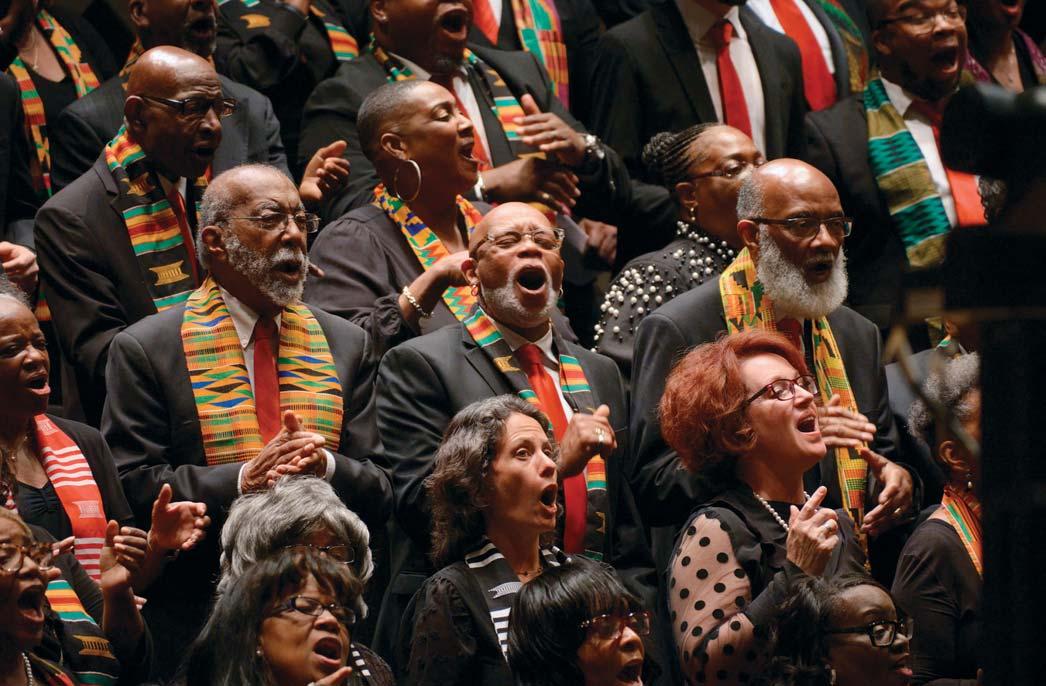

Classical Roots: Poetry, Verse, Rhyme and Reason
by DR. A. KORI HILL

It’s easy to take Classical Roots for granted. Classical Roots was founded in 2001 with the leadership of Kathy Jorgensen-Finley, Anne CushingReid, John Morris Russell and community faith leaders to help diversify orchestral audiences, and bring music making to underserved and underrepresented areas in our region. Classical Roots is a yearly celebration of Black music and a Queen City institution. Since the concert’s move to Music Hall in 2011, the artists have been fairly constant—the Cincinnati Symphony Orchestra, John Morris Russell, the Classical Roots Community Choir (CRCC), members of the Nouveau Program and guest artists. But the programming continues to expand and grow more eclectic—a pointed reminder of the stylistic scope of Black culture.
“Classical Roots has always been about Black history, but it is too big a story to tell in a single concert, in the shortest month of the year,” John Morris Russell says. “We design our concerts to go deep. We can be really nerdy about the details we present, because this music, and this history,
Classical Roots Community Choir at the 2023 Classical Roots concert. Credit: JP Leong
John Morris Russell
Credit: Roger Mastroianni
CLASSICAL ROOTS 16 | 2023–24 SEASON
is too important. The connections we create in each concert link us historically from one generation to the next, and represent a runway to the future. Each year, we strive to tell new and different stories, getting into the glorious details and nuanced connections that make the Black experience so meaningful to everyone.”
Classical Roots 2024’s “glorious detail” is the convergence of music and words—through poetry, through gospel, through hip-hop and through orchestral and choral works. Headlined by this year’s guest artist, the producer, emcee and Cincinnati son Hi-Tek, who closes a concert that mirrors the variety of early 20th-century classical music programs and pageants involving Black writers, musicians and intellectuals, all meant to educate through entertainment.

The first half of the program is dominated by classical and religious music, poetry and

a proclamation. There’s the rousing audience participation performance of the Black national anthem, “Lift Ev’ry Voice and Sing,” by brothers James Weldon and J. Rosamond Johnson; an excerpt from William Grant Still’s Symphony No. 1, Afro-American, and Danzas de Panama, and Samuel ColeridgeTaylor’s Othello Suite; Rosephanye Powell’s “The Word Was God”; “Joyful, Joyful We Adore Thee,” from Ludwig van Beethoven’s Ninth Symphony reimagined in the film Sister Act 2; Paul Laurence Dunbar’s “Ode to Ethiopia”; recitations by Cincinnati and Mercantile Library Poet Laureate Yalie Kamara and Cincinnati Youth Poet Laureate Gabrielle Walker; Langston Hughes’ poem “The Weary Blues” performed with a jazz sextet; and a reading of a speech by lawyer and Congressman John Mercer Langston.
Multiple layers of significance are represented in the program’s first half: Dunbar and Coleridge-Taylor were not just contemporaries; they met in person, leaving Coleridge-Taylor inspired by Dunbar’s embrace of Black literary, linguistic and storytelling forms. Still quoted four of Dunbar’s poems for each of the four movements of his “Afro-American” Symphony; the last movement, heard at this year’s concert, quotes a portion of Dunbar’s “Ode to Ethiopia.” Beethoven was inspired by Friedrich Schiller’s “Ode to Joy” to the extent he did something folks rarely do in a symphony: he added a choir to sing the words—which has been given a new life in the gospel/funk incarnation that will be performed. And, perhaps most touchingly, we celebrate John Mercer Langston—the greatuncle of poet Langston Hughes, first African American lawyer in Ohio, first Representative of color for the state of Virginia—who stood on the stage of Springer Auditorium in 1889 at the
CLASSICAL ROOTS
Hi-Tek
Fanfare Magazine | 17
Yalie Kamara
African American Republican Meeting, urging 5,000 men to exercise their unalienable right to vote. This was one year before Langston would win a seat in the House of Representatives (1890–1891). We will experience the power and timelessness of his oration, set to music of Coleridge-Taylor.
While there is weight to Classical Roots, there is also beauty, celebration and fierce dedication to the craft of music-making. The latter is clear to the Interim Resident Conductor of CRCC, Jason Alexander Holmes. When Holmes moved to Cincinnati in 2019, he immediately sought out a Black musical community. He was a CRCC member before he was their conductor. “From performer to conductor was a major shift, because if something doesn’t happen, it’s on you,”
Holmes shares.
“There is not necessarily a connection between the quality of music-making and whether you’re labeled a professional or an amateur,” Holmes adds. “Especially in Black music, in Black church music, we see a lot of the formal music training being done by ‘non-professionals.’” In Holmes’ experience, CRCC members see technical execution and communicative success as inseparable. “We’re going to be honest if something does not move us,” he continues. “That’s what I appreciate about the Classical Roots community. The feedback is real…people are coming at it with really in-depth knowledge, which creates a push to be better from both sides. Sometimes it’s me saying, ‘No it’s this way,’ and sometimes it’s the choir saying, ‘No, someone’s not doing this.’”
and mainstream. But regardless of categorization, his love of R&B and jazz-inflected lyricism, propulsive beats and evocative prose is clear.
“As a kid, I listened to a lot of soul music, and when I got to a point when I started making beats, I was inspired by a lot of New York producers who introduced me to sampling jazz,” he explains. “When I approach my beats, I’m always looking for something that touches your soul and sounds abstract, original and sonically different from your basic stock sounds.”
Classical Roots 2024 is also about the necessity of connection through collaboration, a necessity that courses through the repertoire and through how the performers see themselves—the tradition, the history, not only of Classical Roots but in Black musical practice, period.
As a producer, his work for major figures like 50 Cent, D12 (which featured Eminem), Common and Anderson .Paak required a balancing act: create songs that sound like the artist but also sound like himself. It’s a challenge that comes naturally. “In most cases, I’m already a fan of the artist before I work with them,” he explains, “so it’s only natural to try to create something that I think they would like. Sometimes an artist is just looking for me to be me, then they incorporate themselves into that, which becomes a beautiful mesh. As far as keeping my unique stamp on it, it’s something unexplainable to be honest. It’s a gift.”
This spirit of focus and collaboration is magnified in the second half of the concert. The CRCC opens the second half by performing Richard Smallwood’s Psalm 8, and the program closes with the rousing finale from The Color Purple musical by Brenda Russell, Allee Willis and Stephen Bray. In between, it is all Hi-Tek.
In a career that spans 30+ years, Hi-Tek has had every experience possible: he’s been a group member (Cincy-based Mood and Reflection
Classical Roots 2024 is also about the necessity of connection through collaboration, a necessity that courses through the repertoire and through how the performers see themselves—the tradition, the history, not only of Classical Roots but in Black musical practice, period. It impacts how Hi-Tek sees hip-hop, not as an isolated development but part of a centuries long tradition in Black communities of weaving words and music together. “It’s very important,” Hi-Tek says, “because hip-hop is a blend of all genres of music. Hip-hop is that rose that grew through the concrete…it has expanded into so many different styles.”
Collaboration and connection also are important to CRCC director Holmes, who notes, “In terms of the musical community, we are taking care of each other, and it continues to be part of the energy for Classical Roots.”

CLASSICAL ROOTS
18 | 2023–24 SEASON
2024 Brady Block Parties
Join the CSO in neighborhoods around the city this summer
Thursday, June 6, 7:30pm: Pride Block Party
Location: ICON Festival Stage at Smale Park at The Andrew J. Brady Music Center®
Sunday, June 23, 7:30pm: West End Block Party
Location: Ezzard Charles Park
Sunday, July 14, 7:30pm: Price Hill Block Party
Location: Dunham Recreation Center
Friday, July 19, 7:30pm:
Avondale Block Party
Location: North Avondale Recreation Center
Thursday, August 1, 7:30pm:
Woodlawn/Lincoln Heights Block Party
Location: Woodlawn Community Center
For the most up-to-date information, visit cincinnatisymphony.org/BlockParties.
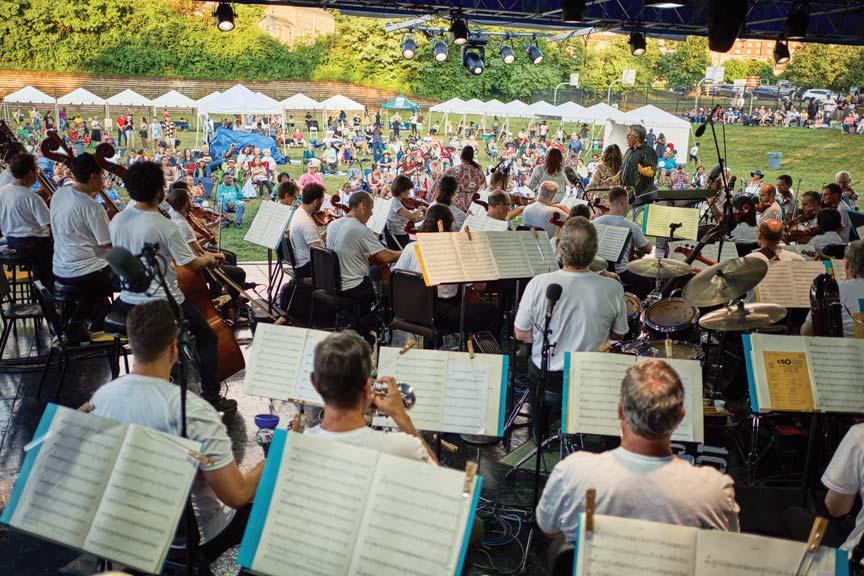 Conductor John Morris Russell leads the Cincinnati Symphony Orchestra at the 2023 Evanston/E. Walnut Hills Block Party in July 2023. Credit: JP Leong
Conductor John Morris Russell leads the Cincinnati Symphony Orchestra at the 2023 Evanston/E. Walnut Hills Block Party in July 2023. Credit: JP Leong
SAVE
Fanfare Magazine | 19
THE DATES

Sheku Kanneh-Mason and Katharina Wincor: Young Blazing Careers
by HANNAH EDGAR
Sheku Kanneh-Mason’s Cincinnati Symphony Orchestra debut this month (Apr. 26 & 27) celebrates a major milestone for both the esteemed British cellist and the Orchestra: Kanneh-Mason’s appointment as the 2024 MAC
Music Innovator, an outreach initiative of the CSO’s Multicultural Awareness Council (MAC).
The year-long appointment is granted to Black leaders in classical music and encompasses not just public performances but educational projects. Kanneh-Mason will give local masterclasses in conjunction with his April CSO concerts, as well as a short solo performance and Q&A on Thursday, April 25.
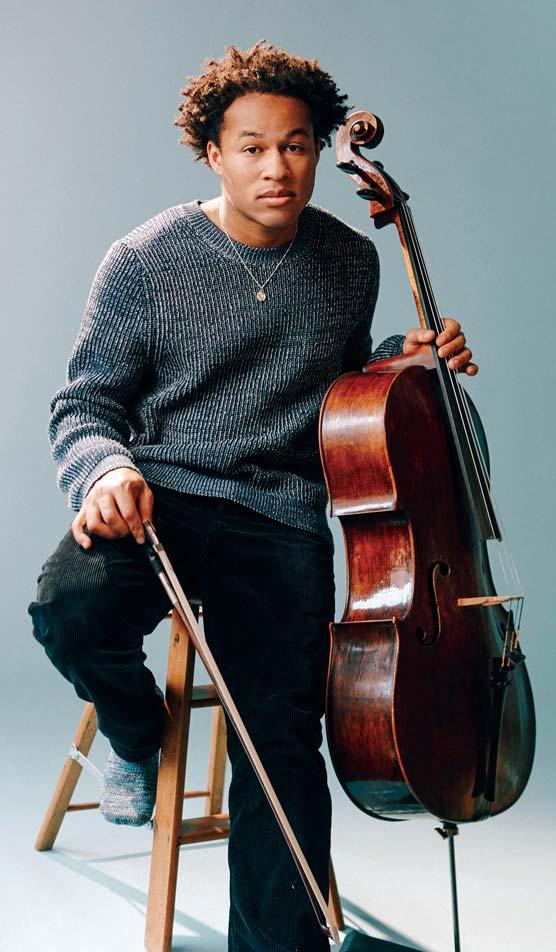
For his spring CSO concerts, led by the Austrian conductor Katharina Wincor, KannehMason plays the concerto that won him the 2016 BBC Young Musician of the Year competition at age 17: Shostakovich’s First Cello Concerto. Lately, KannehMason has been concertizing on Shostakovich’s second concerto for the instrument; with that new perspective guiding his performances in Cincinnati, he says “it’s nice to come back” to the First after all that time away. He still keeps the first two pages of the concerto, bearing his markings, framed on the wall of his London flat .
“Things have changed so much over the years. My hand has changed, so now if I have old fingerings [written in my part], I find them distracting. With bowing, too: maybe I took a few extra slurs back then, as I wasn’t able to sustain them in the way I can now,” Kanneh-Mason says. “It’s easier to work things out from scratch.”
For Kanneh-Mason, “over the years” means something far different than it does for his peers on the international stage. The cellist turns 25 in April—a veritable
CSO FEATURE
Sheku Kanneh-Mason
20 | 2023–24 SEASON

youngster in the more-saltthan-pepper classical music biz.
Having already been in the solo spotlight for nearly a decade, Kanneh-Mason is wise beyond his years and ready to mentor still-younger musicians. Kanneh-Mason recently became a visiting professor at his alma mater, the Royal Academy of Music, and has increasingly tied other touring opportunities to educational activities.

“I come out of the lessons with lots of things to think about. She pushes me a lot in every aspect of playing,”
Kanneh-Mason says.
“I love to teach. I suppose, even when I was younger, I would give lessons to my younger sisters, much more informally,” Kanneh-Mason says. (Kanneh-Mason is one of seven children, all of whom are pianists or string players who have passed through the prestigious Royal Academy of Music.) “I find I learn a lot from those experiences. You have to think not only about the repertoire that the student is playing, but how to explain aspects of their technique in the most helpful, supportive way.”
Cincinnati area students will certainly find a supportive teacher in Kanneh-Mason. Fiery onstage, in person he’s incredibly soft-spoken; in conversation, one instinctively leans in to better hear him. He tends to curl his head toward his shoulder when he’s deep in thought—like when he plays cello. Last fall, Kanneh-Mason visited Philadelphia public schools as part of an engagement with the Philadelphia Chamber Music Society; after smilingly harmonizing their scales, he relayed feedback to students, always in his gossamer-gentle voice.
Although there might seem to be a gulf separating Kanneh-Mason from the rookie string players he tutored in Philadelphia, he’s quick to point out that he’s still a student himself. Even as a globetrotting soloist, he carves out time for lessons with Hannah Roberts, his “wonderfully inspiring” teacher from his Royal Academy days, whenever he’s home in London.
He also constantly absorbs knowledge from other musicians while on the road. It’s not unusual for Kanneh-Mason to be the youngest person onstage when playing with major orchestras. These concerts in Cincinnati, in fact, are striking in that both soloist and conductor are under 30. (Wincor just turned 29.)
“When I’ve been performing in the profession, it’s usually with older musicians, because my career started relatively early. I’ve always loved trying to learn from people onstage and in rehearsal,” Kanneh-Mason says.
Wincor agrees with that sentiment. The conductor last worked with the CSO for the 2022 May Festival; since then, her career has continued to ascend. When she connected with Fanfare Magazine, she was preparing to conduct the BBC Symphony for the first time—the same orchestra Kanneh-Mason played alongside for the BBC Young Musician competition. Wincor’s CSO concerts mark her professional debuts on all the program’s repertoire, too—more significant firsts for a blazing career on the rise.
“Whenever I perform with an older soloist, I feel like I can learn something about tradition from them that I cannot get somewhere else. On the other hand, when [I work with] someone young, or someone who maybe hasn’t played a particular piece very often, we can try out this or that,” Wincor says.
“We’re both still searching for answers, and it’s fun to do that together.”
Save the Date: Sheku Kanneh-Mason and sister/ pianist Isata Kanneh-Mason with give a recital on Tuesday, December 10, 2024 at Memorial Hall as part of Chamber Music Cincinnati.
Katharina Wincor
CSO FEATURE: Kanneh-Mason and Wincor
Fanfare Magazine | 21
Honoring Retiring Orchestra
Musicians
by KIT GLADIEUX

As we near the end of the 2023–24 season, the Cincinnati Symphony and Pops Orchestra congratulates two musicians on their retirements: Associate Principal Trumpet Douglas “Doug” Lindsay and cellist
Theodore “Ted” Nelson. They have served a combined 53 years within the Orchestra, performing in countless concerts, recordings and tours. These retirees shared memories from their time with the CSO and what they’ll be doing next. The CSO is grateful for the unparalleled musicianship and dedication that Doug and Ted brought to Music Hall.

Douglas Lindsay
Associate Principal Trumpet
Jackie & Roy Sweeney Family Chair
Doug Lindsay grew up in Cincinnati and takes great pride in having played the trumpet in his hometown orchestra. “It’s like a kid going to high school here and getting to play for the Reds,” he said.
Doug joined the CSO in 1991 after playing with the Orquesta Sinfónica Nacional de la República Dominicana, the Dayton Philharmonic and the Charlotte Symphony. Some of his career highlights as a member of the Orchestra include his first recording, of Bruckner’s Ninth Symphony with Jesús López Cobos in 1992, and the 2023 May Festival performance of Mahler’s Eighth Symphony, where he played principal trumpet. “James Conlon conducted, and it was a dream come true,” he reminisced.
In retirement, he plans to stay close to his family in Cincinnati. He will continue to teach as an adjunct professor at Miami University, where he helped start the Cincinnati Symphony Orchestra Brass Institute program. He’s looking forward to traveling with his wife, cycling, and hiking on the Appalachian Trail.
“I’m going to miss the great music, and some of my good friends,” said Doug. “This is a very rare brass section; we all get along so well. When we play the great repertoire, and we’ve had a lot of it this season, I say to myself, ‘I’m going to miss this.’”

SPOTLIGHT
22 | 2023–24 SEASON
Douglas Lindsay, Associate Principal Trumpet, Jackie & Roy Sweeney Family Chair

Theodore Nelson
Cello
Peter G. Courlas–Nicholas Tsimaras Chair
Cellist Ted Nelson joined the CSO in 2004 after playing with the Toledo Symphony and the Kansas City Symphony. One of the first things he did with the Orchestra was go on a European tour in the fall of 2004. “The first concert I played on tour was Mahler’s Fifth Symphony in Vienna, which almost made my head explode. It was so cool.”
His career highlights extend beyond performances, too. “A lot of the things that were most meaningful to me were the opportunities that I had to serve the organization in different ways—as chair of the Orchestra Committee for a long time, serving on the CSO Board, doing other types of work besides just playing the cello—although that was also incredibly rewarding.”
After 26 years of performing full time, 19 of them with the CSO, Ted is entering a new chapter of his career. “I say that I’m just stepping across the hallway,” he laughed. He will be shifting his focus from performing to administration in his role as the Vice President of Operations & Artistic Planning with the Dayton Performing Arts Alliance.
“I’m going to miss the people,” said Ted. “Working 19 years with any group of people is really special. It doesn’t happen in a lot of industries. I’ll miss my colleagues both onstage and offstage.” He will also miss the stage itself. “Music Hall is an incredible building. It’s an amazing space, and I feel really lucky to have spent 19 years working and playing there.”


Fanfare Magazine | 23 SPOTLIGHT:
Theodore Nelson, Cello, Peter G. Courlas–Nicholas Tsimaras Chair
Retiring Musicians
Why We Give
by KEN SMITH

From full concerts at Music Hall to small pop-up performances in local neighborhoods and everything in between, our generous and dedicated donors, sponsors and concertgoers make it all possible. This article shares a special story about one important aspect of our Orchestra’s programming: commissioning new works. Our donors and their inspiring stories will ensure that the unique sound of the Cincinnati Symphony Orchestra and Cincinnati Pops will always resound. You can join our family of donors online at cincinnatisymphony.org/donate or by contacting the Philanthropy Department at 513.744.3271. If you are interested in underwriting the commissioning of a new work, email development@cincinnatisymphony.org for more information.

with the Cincinnati Symphony Orchestra. After Langrée’s inaugural appearance as Music Director with the performance of Jennifer Higdon’s On a Wire (in November 2013), which Santen and her husband Harry had cocommissioned as part of a consortium, the conductor marks his final program at the helm with the world premiere of another Santen commission: an orchestral song cycle by Anthony Davis titled Broken in Parts
“It makes a nice bookend,” says the two-decade veteran head of WGUC-FM and stalwart champion of Cincinnati’s classical music scene. “I’d started a commissioning program at WGUC, and when I left the station in 1996 Harry and I just kept commissioning new works. After Louis came, it kind of got out of hand.”
ANN & HARRY SANTEN
When Ann Santen turned 50, Elliott Carter—then 80 years old—composed Enchanted Preludes for flute and cello in her honor. For her 80th birthday, she received Shimmer and Flow, a duet for clarinet and cello by the composer Pierre Jalbert, who had just turned 50.
By the end of his CSO tenure in May, Langrée will have conducted world premieres of 15 pieces commissioned by the Santens—a tally not counting the first part of Daníel Bjarnason’s tripartite symphony, which missed the original deadline and later appeared at the CSO under a different conductor, or Mark Simpson’s Piano Concerto, which still awaits its premiere. Even so, Davis’ song cycle duly celebrates Langrée’s remarkable relationship with Santen, who

SPOTLIGHT
SPOTLIGHT
24 | 2023–24 SEASON
Composer Pierre Jalbert (left) and CSO Music Director Louis Langrée are joined by Ann Santen after the April 14, 2018 world premiere performance of Jalbert’s Passage, which Santen underwrote.

Santen traces her fascination with new music to her teenage years in Northern Kentucky, when the Louisville Orchestra launched its pioneering commissioning program, which generated dozens of new compositions each year. “It was an extraordinary project,” she still recalls, “with every composer you’d ever heard of, and major pieces still being performed today.”

Years later, after marrying and relocating to Cincinnati, Santen and her husband first dipped their toes in the new-music pond in the late 1970s by co-commissioning Ned Rorem’s Double Concerto for piano and cello—later retitled Remembering Tommy—soon after Rorem won the Pulitzer Prize in 1976 for Air Music (which the CSO had premiered the year before). That initial splash became a full immersion once Santen came to WGUC as music director and general manager.
After Santen stepped down from WGUC in 1996, she and her husband continued the practice, initially on a smaller scale for the Linton Chamber Music Series. Their CSO relationship began with a piece by Jeffrey Mumford to celebrate their 50th wedding anniversary in 2008. Then came five fanfares by various composers marking both WGUC’s 50th anniversary and former CSO Music Director Paavo Järvi’s 10th anniversary season. When Santen introduced CSO administrators to Cincinnati’s then-fledgling MusicNOW festival, the couple wound up funding another four commissions: Nico Muhly’s Pleasure Ground and David Lang’s mountain in 2014, Caroline Shaw’s Lo and Daníel Bjarnason’s Collider in 2015.
Then came the CSO’s Concerto Project. “Early
sounding so good under you, let’s commission a concerto for orchestra,’” Santen recalls. “He said, ‘That’s a wonderful idea! Let’s do three.’” The resulting trilogy (Sebastian Currier’s FLEX, Thierry Escaich’s Psalmos and Zhou Tian’s Concerto for Orchestra), premiered and recorded during the 2015–16 season, resulted in Grammy nominations for Best Orchestral Performance and Best Contemporary Composition.
To date, Ann and Harry Santen have underwritten the commissioning of 24 new works for the CSO—most during Langrée’s tenure as Music Director. “The creation of new works for orchestra is at the heart of our mission to seek and share inspiration,” says Mary McFadden Lawson, the CSO’s Chief Philanthropy Officer. “Underwriting these new works provides donors, like Ann and Harry Santen, a unique opportunity: to see a new piece of music come to life. Ann and Harry’s steadfast support and championing of new music has had a ripple effect—it has nurtured composers and musicians, provided the Orchestra with new artistic endeavors, and encouraged other donors to underwrite future commissions. With donors like the Santens, the CSO will continue its long legacy of performing the music of our time.”

SPOTLIGHT: Why We Give
From left: CSO Concertmaster Stefani Matsuo, Ann & Harry Santen and CSO clarinetist Ixi Chen, March 2023. Credit: Claudia Hershner
Fanfare Magazine | 25

LOUIS LANGRÉE, Music Director
Louise Dieterle Nippert & Louis Nippert Chair
JOHN MORRIS RUSSELL, Cincinnati Pops Conductor
Louise Dieterle Nippert & Louis Nippert Chair
Matthias Pintscher, CSO Creative Partner
Damon Gupton, Pops Principal Guest Conductor
Samuel Lee, Associate Conductor
Ashley and Barbara Ford Chair
Daniel Wiley, Assistant Conductor
Ashley and Barbara Ford Chair
FIRST VIOLINS
Stefani Matsuo
Concertmaster
Anna Sinton Taft Chair
Felicity James
Associate Concertmaster
Tom & Dee Stegman Chair
Philip Marten
First Assistant Concertmaster
James M. Ewell Chair++
Eric Bates
Second Assistant Concertmaster
Serge Shababian Chair
Kathryn Woolley
Nicholas Tsimaras–
Peter G. Courlas Chair++
Anna Reider
Dianne & J. David Rosenberg Chair
Mauricio Aguiar§
Anne G. & Robert W. Dorsey Chair
Minyoung Baik
Jo Ann & Paul Ward Chair
James Braid
Marc Bohlke Chair given by Katrin & Manfred Bohlke
Rebecca Kruger Fryxell
Clifford J. Goosmann & Andrea M. Wilson Chair
Gerald Itzkoff
Jean Ten Have Chair
Charles Morey†
Luo-Jia Wu
SECOND VIOLINS
Gabriel Pegis
Principal
Al Levinson Chair
Yang Liu*
Harold B. & Betty Justice Chair
Scott Mozlin**
Henry Meyer Chair
Kun Dong
Cheryl Benedict
Evin Blomberg§
Rachel Charbel
Ida Ringling North Chair
Chika Kinderman
Hyesun Park
Paul Patterson
Charles Gausmann Chair++
Stacey Woolley
Brenda & Ralph Taylor Chair++
VIOLAS
Christian Colberg
Principal
Louise D. & Louis Nippert Chair
Gabriel Napoli
Acting Associate Principal
Grace M. Allen Chair
Julian Wilkison**
Rebecca Barnes§
Christopher Fischer
Stephen Fryxell
Melinda & Irwin Simon Chair
Caterina Longhi
Denisse Rodriguez-Rivera
Dan Wang
Joanne Wojtowicz
CELLOS
Ilya Finkelshteyn
Principal
Irene & John J. Emery Chair
Daniel Kaler
Acting Associate Principal
Ona Hixson Dater Chair
Norman Johns**
Karl & Roberta Schlachter
Family Chair
Drew Dansby§
Nicholas Mariscal
Hiro Matsuo
Laura Kimble McLellan Chair++
Theodore Nelson‡
Peter G. Courlas–
Nicholas Tsimaras Chair++
Alan Rafferty
Ruth F. Rosevear Chair
[OPEN]
Marvin Kolodzik & Linda S. Gallaher Chair for Cello
BASSES
Owen Lee Principal
Mary Alice Heekin Burke Chair++
Luis Arturo Celis Avila*
Thomas Vanden Eynden Chair
Stephen Jones**
Trish & Rick Bryan Chair
Boris Astafiev§
Gerald Torres
Rick Vizachero
HARP
Gillian Benet Sella Principal
Cynthia & Frank Stewart Chair
FLUTES
Randolph Bowman
Principal
Charles Frederic Goss Chair
Henrik Heide*
Haley Bangs
Jane & David Ellis Chair
PICCOLO
Rebecca Pancner
Patricia Gross Linnemann Chair
OBOES
Dwight Parry
Principal
Josephine I. & David J. Joseph, Jr. Chair
Lon Bussell*
Stephen P. McKean Chair
Emily Beare
ENGLISH HORN
Christopher Philpotts
Principal
Alberta & Dr. Maurice Marsh Chair++
CLARINETS
Christopher Pell
Principal
Emma Margaret & Irving D.
Goldman Chair
Joseph Morris*
Associate Principal and E-flat Clarinet
Robert E. & Fay Boeh Chair++
Ixi Chen
Vicky & Rick Reynolds Chair in honor of William A. Friedlander
BASS CLARINET
Ronald Aufmann
BASSOONS
Christopher Sales
Principal
Emalee Schavel Chair++
Martin Garcia*
Hugh Michie
CONTRABASSOON
Jennifer Monroe
FRENCH HORNS
Elizabeth Freimuth
Principal
Mary M. & Charles F. Yeiser Chair [OPEN]*
Ellen A. & Richard C. Berghamer Chair
Molly Norcross**
Acting Associate Principal
Sweeney Family Chair in memory of Donald C. Sweeney
Lisa Conway
Susanne & Philip O. Geier, Jr. Chair
Duane Dugger
Mary & Joseph S. Stern, Jr. Chair
Charles Bell
Donald & Margaret Robinson Chair
TRUMPETS
Anthony Limoncelli Principal
Rawson Chair
Douglas Lindsay*
Jackie & Roy Sweeney Family Chair
Alexander Pride†
Otto M. Budig Family
Foundation Chair++
Christopher Kiradjieff
TROMBONES
Cristian Ganicenco Principal
Dorothy & John Hermanies Chair
Joseph Rodriguez** Second/Assistant Principal Trombone
Sallie Robinson Wadsworth & Randolph L. Wadsworth Jr. Chair
BASS TROMBONE
Noah Roper
TUBA
Christopher Olka Principal
Ashley & Barbara Ford Chair
TIMPANI
Patrick Schleker Principal
Matthew & Peg Woodside Chair
Joseph Bricker*
Morleen & Jack Rouse Chair
PERCUSSION
David Fishlock
Principal
Susan S. & William A. Friedlander Chair
Michael Culligan*
Joseph Bricker
Morleen & Jack Rouse Chair
Marc Wolfley+
KEYBOARDS
Michael Chertock
James P. Thornton Chair
Julie Spangler+
James P. Thornton Chair
CSO/CCM DIVERSITY
FELLOWS~
Lucas Braga, violin
Melissa Peraza, viola
Manuel Papale, cello
Caleb Edwards, double bass
Wendell Rosa, double bass
LIBRARIANS
Christina Eaton
Principal Librarian
Lois Klein Jolson Chair
Elizabeth Dunning
Associate Principal Librarian
Cara Benner
Interim Assistant Librarian
STAGE MANAGERS
Brian P. Schott
Phillip T. Sheridan
Daniel Schultz
Mike Ingram
Andrew Sheridan
§ Begins the alphabetical listing of players who participate in a system of rotated seating within the string section.
* Associate Principal
** Assistant Principal
† One-year appointment
‡ Leave of absence
+ Cincinnati Pops rhythm section
++ CSO endowment only
~ Funded by The Mellon Foundation

26 | 2023–24 SEASON

LOUIS LANGRÉE, Music Director
Louise Dieterle Nippert & Louis Nippert Chair
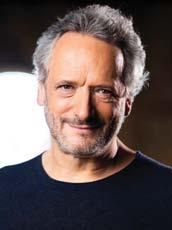
In the 2023-24 season, Louis Langrée celebrates his final season with the Cincinnati Symphony Orchestra, where he has been Music Director since 2013, and will become Music Director Laureate at the conclusion of this season. He continues as Director of Théâtre national de l’Opéra-Comique in Paris, an appointment that began in November 2021. Langrée ended his 20-year tenure as Music Director of the Mostly Mozart Festival at Lincoln Center in the summer of 2023. Two of his Cincinnati recordings were Grammy nominated for Best Orchestral Performance: Transatlantic, with works by Varèse, Gershwin and Stravinsky; and Concertos for Orchestra, featuring world premieres by Sebastian Currier, Thierry Escaich and Zhou Tian. On stage, his Pelléas et Mélisande trilogy contrasted settings by Fauré, Debussy and Schoenberg. A multiseason Beethoven [R]evolution cycle paired the symphonies with world premieres, as well as recreation of the legendary 1808 Akademie. During the Covid pandemic, Langrée was a catalyst for the Orchestra’s return to the stage in the fall of 2020 with a series of digitally streamed concerts.
Between the start of his tenure and the conclusion of the CSO’s 2023–24 season, Langrée and the CSO will have commissioned 45 new orchestral works and he will have conducted 31 premieres from a wide range of composers, including Julia Adolphe, Daníel Bjarnason, Jennifer Higdon, Jonathan Bailey Holland, Kinds of Kings, David Lang, Missy Mazzoli, Nico Muhly, André Previn, Caroline Shaw and Julia Wolfe, and the world premiere of Christopher Rouse’s Symphony No. 6, Rouse’s final opus.
He has guest conducted the Berlin Philharmonic, Vienna Philharmonic, London Philharmonic, Los Angeles Philharmonic, New York Philharmonic, Philadelphia Orchestra, Budapest Festival Orchestra, NHK Symphony, Orchestre National de France and Leipzig Gewandhaus, as well as Orchestre des Champs-Elysées and Freiburg Baroque. He frequently conducts at the leading opera houses, including more than 50 performances at The Metropolitan Opera, and engagements with Vienna Staatsoper, Teatro alla Scala, Royal Opera House Covent Garden, Lyric Opera of Chicago and Bavarian Staatsoper, and at festivals including Glyndebourne, Aix-enProvence, BBC Proms, Edinburgh International and Hong Kong Arts.
A native of Alsace, France, he is a Chevalier de la Légion d’Honneur and Officier des Arts et des Lettres, and he is an Honorary Member of the Confrérie Saint-Étienne d’Alsace, an Alsatian winemakers’ brotherhood dating to the 14th century.
JOHN MORRIS RUSSELL
Cincinnati Pops Conductor
Louise Dieterle Nippert & Louis Nippert Chair

John Morris Russell’s embrace of America’s unique voice and musical stories has transformed how orchestral performances can connect and engage with audiences everywhere. In his 13th year with the Cincinnati Pops Orchestra, the wide range and diversity of his work as a conductor, collaborator and educator invigorates the musical scene in Cincinnati and beyond. Russell is Music Director of the Hilton Head Symphony Orchestra and the Hilton Head International Piano Competition, and he serves as Principal Pops Conductor of the Buffalo Philharmonic Orchestra, following in the footsteps of Marvin Hamlisch and Doc Severinsen. He served as Music Director of Ontario’s Windsor Symphony Orchestra from 2001 to 2012.
A popular guest conductor, Russell has worked with the leading North American orchestras, including the Los Angeles Philharmonic, Cleveland Orchestra, Chicago Symphony, Toronto Symphony and New York Philharmonic, the Boston Pops and the National Symphony.
For more than a decade, Russell has regularly led the National Orchestral Institute and Festival in College Park, Maryland, one of the nation’s premier training orchestras. Dedicated to sharing the American musical experience with the newest generation of players, he helped develop and conducted the LinkUP! educational concert series at Carnegie Hall and has piloted educational programs with the symphony orchestras of Cincinnati, Windsor and Hilton Head.
For over two decades, he has led the Cincinnati Symphony Orchestra’s wildly successful Classical Roots initiative honoring and celebrating Black musical excellence, which has garnered recordbreaking in-person and online audiences.
Russell’s seven recordings with the Cincinnati Pops Orchestra include 2023’s holiday album JOY! and the landmark recordings in the “American Originals Project”: American Originals (the music of Stephen Foster) and the Grammy-nominated American Originals 1918 (a tribute to the dawn of the jazz age).
John Morris Russell earned degrees from the University of Southern California and Williams College and has studied at the Guildhall School of Music and Drama in London, the Cleveland Institute of Music, the Aspen Music Festival in Colorado and the Pierre Monteux School for Conductors in Hancock, Maine.
AND ARTISTIC LEADERSHIP
©Chris Lee 2021
Fanfare Magazine | 27

CLASSICAL ROOTS APR 19
JOHN MORRIS RUSSELL, conductor
Turn to p. 27 for a biography of Cincinnati Pops
Conductor John Morris Russell.
HI-TEK, producer & rapper
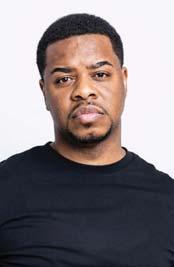
Firmly entrenched as one of urban music’s most dynamic, respected and prolifi c producers, Hi-Tek was a 2022 inductee to the Cincinnati Black Music Walk of Fame, joining fellow honorees Bootsy Collins, Dr. Charles Fold, Otis Williams and the Charms, and the Isley Brothers. Hi-Tek is the fi rst and only hip-hop artist among these musical icons.
Hi-Tek has produced material for 50 Cent, Dr. Dre, Snoop Dogg and Anderson .Paak, among others. The Cincinnati-based maestro created the sound that catapulted the independent New York rap renaissance into the mainstream in the late 1990s through his work with Mos Def and Talib

Kweli as Black Star (“Definition,” “Respiration”) and with Talib Kweli as one-half of the group Reflection Eternal (Fortified Live, The Blast).
During this time, Hi-Tek also landed prime placements on the Lyricist Lounge compilations (Talib Kweli’s “The Manifesto”), and the Soundbombing series of albums (Common and Sadat X’s “1-9-9-9”) soon followed. In the midst of releasing a string of acclaimed Hi-Teknology solo albums throughout the next decade, the Ohioan crafted some of the most soulful yet bone-crushing work of Game (“Runnin’”), 50 Cent (“Best Friend”), G-Unit (“Eye for Eye,” “G-Unit”) and Snoop Dogg (“I Believe in You”), while also delivering innovative R&B material for Jonell (“Round and Round,” “Don’t Stop”), Dion and others.
In the midst of this work, Hi-Tek became a staff producer for Dr. Dre’s Aftermath Entertainment. As Hi-Tek’s work in the studio progressed with Aftermath and other big-named artists, his biggest hit came from his collaboration with emerging rapper-singer-drummer Anderson .Paak. Hi-Tek produced his breakthrough single “Come Down,” which went gold and propelled .Paak’s Malibu LP to gold status, too. Additional work with Snoop Dogg, Lloyd Banks, D12, Xzibit, 213, Syleena Johnson, De La Soul and others soon followed.




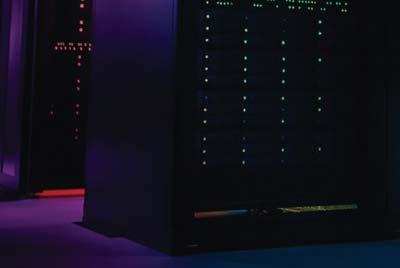



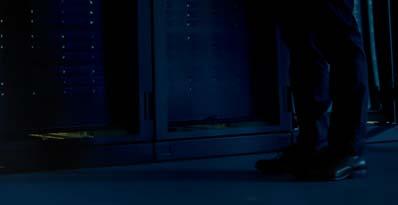

GUEST ARTISTS: April–May, 2024
J RH Design | Build | Enhance ADVANCED TECHNOLOGY SOLUTIONS WITH A CUSTOMER FOCUS find out more 28 | 2023–24 SEASON

CLASSICAL ROOTS COMMUNITY CHOIR
Jason Alexander Holmes, interim resident conductor
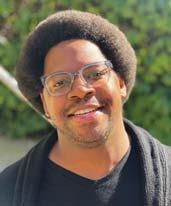
Jason Alexander Holmes is a music educator and performer from Ridgeway, Virginia, and currently serves as the Artistic Director of the Cincinnati Boychoir, the director of Cincinnati’s MLK Chorale, and the Associate Musician for Children and Youth at Christ Church Cathedral in Cincinnati. Before coming to Cincinnati, he was Director of Educational Programming at the Boston Children’s Chorus. Prior to his time in Boston, Jason taught music at the elementary and secondary levels. He also led the University of Rochester Gospel Choir and the Eastman Young Children’s Chorus. Jason holds degrees from the Eastman School of Music and Ithaca College, where his mentors and teachers included Drs. Susan Wharton Conkling, William Weinert and Susan Avery.
Choirs under Jason’s direction are consistently praised for their energetic, unified tone and
engaging performances. He is known for innovative programming that celebrates the cultural context while encouraging singers and audiences alike to stretch their awareness by living in many different musical worlds. Pedagogically, Jason is committed to implementing culturally responsive practices in music education. He has given workshops and conference sessions on this topic at professional development seminars, schools and conferences. At the core of Jason’s teaching and performing is the belief that we are all expressive and musical beings who deserve to witness and participate regularly in moments of truth and beauty.
Jason was recently named May Festival Associate Director of Choruses and Director of the Youth Chorus; his tenure begins this summer.
Classical Roots Community Choir. For two decades, Classical Roots has been a Cincinnati community staple, and what started as a small concert series in 2001 has grown into a diverse community of music lovers, united in celebration of the rich legacy of African American music and the African American experience. At its center is the all-volunteer Classical Roots Community Choir, led by Interim Resident Conductor Jason Alexander Holmes and made up of singers from


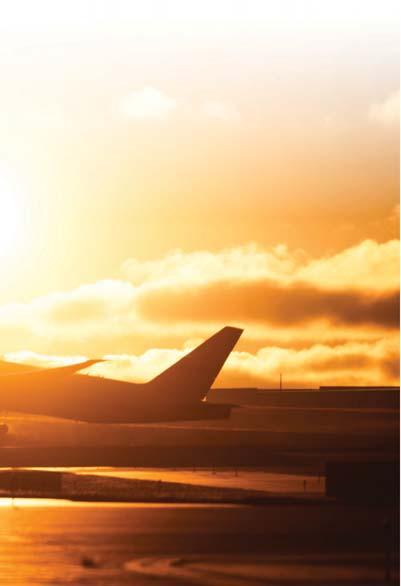

APR–MAY GUEST ARTISTS
Feel the excitement crescendo. Plan your journey at CVGairport.com.
Celebrating
Arts! As a proud partner of the CSO and Pops, CVG values all the ways that the arts take our community to new heights. Fanfare Magazine | 29
Connecting the World,
the
more than 50 churches who perform in concerts and other collaborations throughout the year.
Community Choir Leaders this season are Jason Alexander Holmes, Interim Resident Conductor; Geneva Woode, Quinn Chapel AME Church; Marcellene Winfrey, Allen Temple AME Church; David Fowler, Church of the Resurrection
CLASSICAL ROOTS COMMUNITY CHOIR
Anita Anderson
Archie Armstrong
Clemmie Armstrong
Patty Bachman
Peggy Bell-Lohr
Cornelia Binford
Donita Binford
Yvonne Brantley
Rev. David J. Brentley
Deanna Brown
Coeany Bryant
Carol Cargile
Tristan Cargile
Carolyn Carter
Janet Carter
Ron Carter
Timothy Carter
Lenora Castleberry
Maia Chess
Robert Chess
Alynn Chezem
Brenda Clark
Charles Collins
Frank Collins
Betty Connors
Joyce Cooper
Cynthia Cummins
Carol Dantley
Carol DeGreg
June Eddings
Keith Edmondson
Praise Ekeng
Faith Fallings
Carol Fiel
Cassandra Fowler
Mary Franklin
Bernadine Franklin-Stokes
Marqueta Freeman
Amanda Gast
Tony Gast
Eudora Gause
Levi Gause
Zach Gause
Joy Gazaway
Linda Gentry
Janet Gibson*
Amber Greer
Brandon Hare
Ciara Harper*
Sonia Harper*
Jeannette Harrison
Natalie Hayes
Charity Hinton
Rosemary Holder
Crystal Holliday
Margaret Irons
Dawann Jackson
Trudy Jackson
Catholic Church; Adrian Cunningham, New Jerusalem Baptist Church; and Ron Logan, Lincoln Heights Missionary Baptist Church.
ASL INTERPRETERS
Karen Arnold Laverne Rutledge
Yvette Jackson
Dora Jefferson-Gaynor
Jacqueline Johnson
Jerome Johnson
Dante Keeling
Kai Lattimore
Juls Lawrence
Hattie Lawson
Kathye Lewis Norman
Robert Lomax
Hycinthe Marshall
Christina Mayrhofer
Dav’e McCoy
D McGruder
Barbara McMullen
Brenda McMullen
Jamaal McMullen
Carolyn Mitchell-O’Bryant
Khala Moss
Dawn Mundy
Margaret O’Leary
Tim Oliver
Shari Palmer
Gloria Parker-Martin
Mary Patton*
Bridalveil Powell
Brian Reilly
Bonnie Richardson
Deborah Riley
Anna Russell
Sherry Scott
Della Scott
Calvin Singleton
Eric Smith
Janene Sonnega
Mildred Stallworth
Stephanie Starkey
Lesa Stricklen
Pamela Suttles
Nikita Taggart
Anjela Turnbow
Enairs Turnbow
Debra Tyus
Miriam Valley
Noël Walton*
Willie Watkins
Yvonne Watkins
Jan Weiler
Donna Welch
Esther Williams
Rita Winters*
Donte Woods
Debra Woolfolk
as of March 8, 2024
*soloists
Classical Roots Community Choir singers represent the following area churches and choirs:
Abundant Life Apostolic Church
Allen Temple AME
Bethel AME Church Lockland
Bethel Baptist Church
Black Family Reunion Choir
Brown Chapel AME
Calvary Missionary Baptist Church
Canaan Early Church of God in Christ
Charles and the Charles Fold Singers
Christ Emmanuel Christian Fellowship
Christ the King Church
Church of the Resurrection
Cincinnati Bible Way Church
Cincinnati BoyChoir
City Gate Church
Clifton United Methodist Church
College Hill Presbyterian Church
Corinthian Baptist Church
Crossroads Community Church
Dominion Center Church for All Nations
Every Nation Cincinnati
First Baptist Walnut Hills
First Church of Christ Scientist Anderson Township
Heritage Universalist Unitarian Church
Anderson Township
Holy Name Church Auburn Ave
House of Hope
House of Joy
Lee Chapel AME
Life Spring Christian Church
Lincoln Heights Missionary Baptist Church
May Festival Chorus
Miriam Vocal Ensemble
MLK Coalition Chorale
Mt. Carmel Missionary Baptist Church
Mt. Zion Missionary Baptist Church (Glendale)
MUSE
Musica Sacra
New Covenant Community Church
New Jerusalem Apostolic Temple
New Jerusalem Baptist Church
New Mission Baptist Church
New Nazarene Baptist Church
New Prospect Baptist Church
New Vision United Methodist Church
Ninth Street Baptist Church Covington KY
Overflow Ministries Covenant Church
Phillipian Missionary Baptist Church
Power and Faith Ministries
Quinn Chapel AME
Revelation Missionary Baptist Church Mt. Healthy
Revive City Church
Rockdale Baptist Church
St John Fisher Catholic Church
St. Andrews Episcopal Church
The Way Community Church
The Well
Union Baptist Church
Willing Spirit Baptist Church
Young Professionals Choral Collective
Zion Baptist Church
as of March 8, 2024
APR–MAY GUEST ARTISTS
30 | 2023–24 SEASON
LAUREN EYLISE, vocalist

Lauren Eylise staked her spot in the music industry with the release of her debut EP Life/Death/Life in 2017; however, music has been this singersongwriter’s heart and soul for as long as she can remember. Her genredefying music can only be accurately categorized as eclectic-soul, as an array of influences make up her sound while each song is born from lessons of the soul.
Eylise has opened stages for artists such as Patti LaBelle, Erykah Badu, Jidenna, Tank and The Bangas, Yasiin Bey, Talib Kweli, Train, John Legend, Matt Kearney, Raheem DeVaughn, Tank and others, and she has appeared as a front woman for P&G’s Secret Deodorant #AllStrengthNoSweat campaign, collaborated with Adobe Design for a livestreaming concert and has also been featured on NPR for her standout Tiny Desk Contest performance of her original song “Peaks & Valleys” from her most recent album release, This is Personal Lauren Eylise is the recipient of awards including City Beat’s Musician of the Year (2021) and Golden Donut Award’s Album of the Year and Song of the Year (2020). She is also a voting member of The Recording Academy. Her most recent Tiny Desk Contest submission of her upcoming single “Rose Days” has already snagged highlight coverage from NPR, and she intends to release new music this summer. laureneylise.com
NOAH HAWES, narrator/rapper

Noah Hawes is an emcee, music producer and visual artist based in Cincinnati. He began his journey as a musical artist in the 10th grade by becoming a member of Elementz Hip Hop Cultural Arts Center. Some of his accomplishments include releasing four studio albums, performing with the Cincinnati Chamber Orchestra, creating artwork for Procter & Gamble, hosting a podcast on NPR and opening for acclaimed drummer and composer Mark Lomax, II. Listen to Noah’s newest EP, Uneasy Lies The Head noahhawesraps.com
ALAN B. JONES, narrator

Alan Bomar Jones is the producing artistic director for Town Hall Theatre, acting class instructor at Wright State University, a SAG/AFTRA film actor and a professional international Equity Theatre stage actor. As an award-winning musical theatre director, Jones has helmed more than 75 productions. As an actor, he has appeared in more than 85 professional productions, including nine of August Wilson’s 10-play cycle and a variety of musicals, dramas and comedies. He is a recipient of the Blackburn Award of Excellence for Best Actor, three years nominated for best supporting actor in Tampa Bay, Florida, and a recipient of two Pittsburgh Onyx Awards for Best Equity Actor sponsored by the African American Council of the Arts. His recent film credits include Criminal Activities, White Boy Rick, Native Son and Extremely Wicked, Shockingly Evil and Vile. Jones has worked with movie greats such as John Travolta, Jackie Earle Haley, Matthew McConaughey, Ashton Sanders, Nick Robinson, Jim Parsons, Lily Collins, Bill Camp, Eddie Marsan and Zac Efron.
YALIE SAWEDA KAMARA, Poet Laureate of Cincinnati

Yalie Saweda Kamara, Ph.D. is a Sierra LeoneanAmerican writer, educator and researcher from Oakland, California and the 2022–23 Cincinnati and Mercantile Library Poet Laureate (two-year term). She joined the English Department of Xavier University as an assistant professor in the fall of 2023.
Winner of the 2022–23 Jake Adam York Prize, Kamara’s debut full-length poetry collection, Besaydoo, will be published by Milkweed Editions in 2024. She is also the editor of the anthology What You Need to Know About Me: Young Writers on Their Experiences of Immigration (The Hawkins Project, 2022) and the author of A Brief Biography of My Name (Akashic Books/African Poetry Book Fund, 2018), which is part of the New-Generation African Poets: A Chapbook Box Set (Tano), and When the Living Sing (Ledge Mule Press, 2017).
She has received fellowships from the Vermont Studio Center, the National Book Critics Circle
APR–MAY GUEST ARTISTS
Fanfare Magazine | 31
©JP Leong
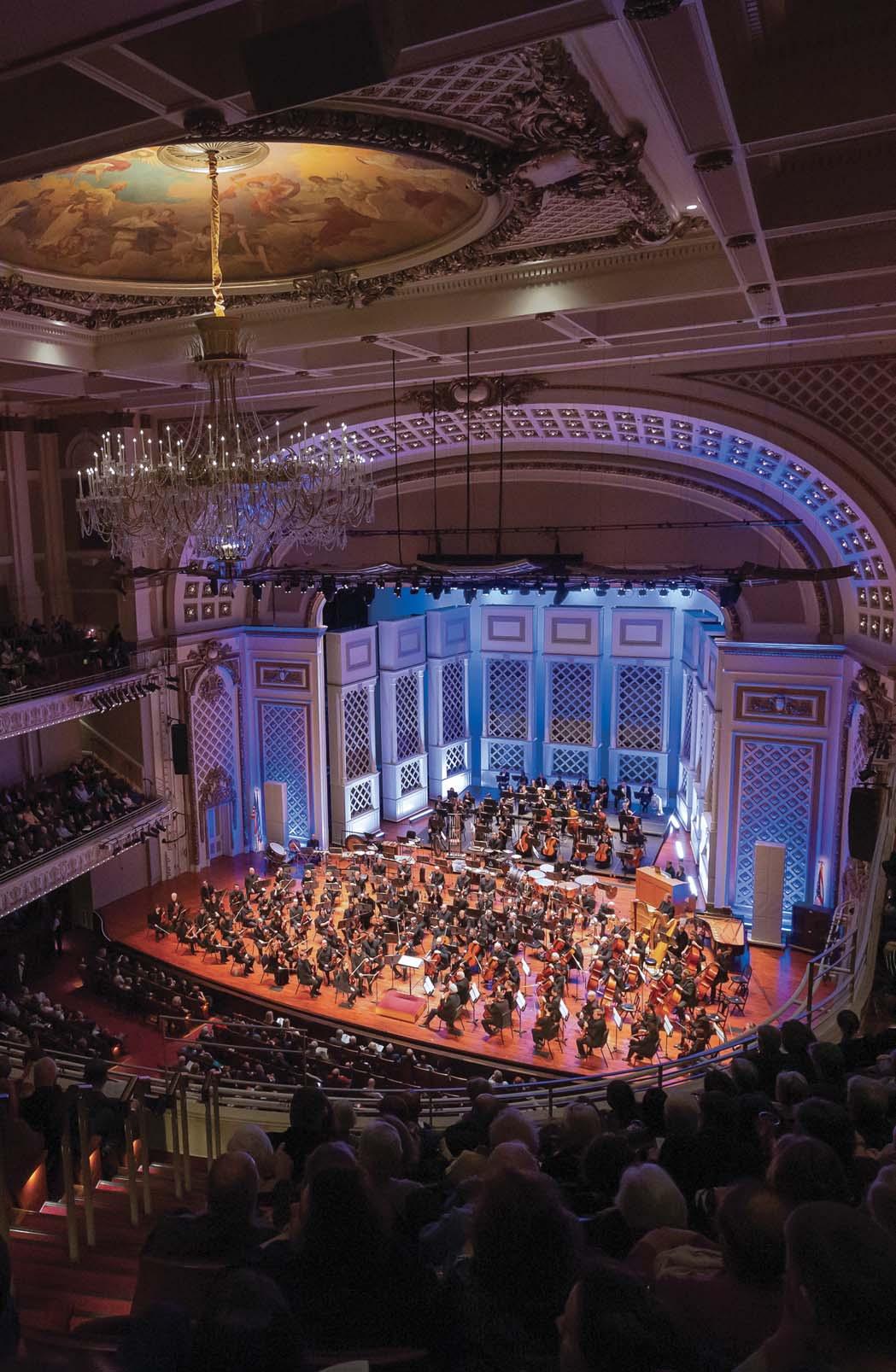
SEASON TICKETS NOW ON SALE
2024-25 Season
cincinnatisymphony.org/subscribe
Emerging Critics Fellow and Callaloo (poetry) and is the winner of the 2023 Meridians Journal
Elizabeth Alexander Award for Poetry
In addition to being a featured poet at the 2020 Geraldine R. Dodge Poetry Festival, Kamara’s poetry, fiction, interviews and translations have either appeared or are forthcoming in The Adroit Journal, Callaloo, A Journal of African Diaspora Arts and Letters, Furious Flower: Seeding the Future of African American Poetry, Black Camera: An International Journal, Puerto del Sol and elsewhere
A Taft Dissertation Completion Fellow and Philanthropic Educational Organization Named Scholar, she received her doctorate in Creative Writing (poetry) and English Literature at the University of Cincinnati, and she earned an MFA in Creative Writing (poetry) from Indiana University and an MA in French Culture and Civilization from Middlebury College. yaylala.com
J.PERIOD, DJ/producer
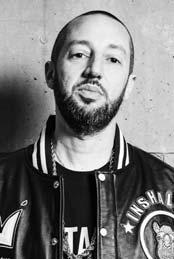
J.PERIOD’s resume boasts collaborations with Grammy winners The Roots, Nas, Mary J. Blige, Busta Rhymes, Queen Latifah, Q-Tip, Common, Lauryn Hill, comedian Dave Chappelle and Pulitzer Prize-winning playwright Lin-Manuel Miranda on the Billboard No. 1 album, The Hamilton Mixtape
These collaborations, combined with a visionary approach to musical storytelling, have earned J.PERIOD comparisons to both DJ Khaled and Ken Burns, and prestigious cultural appointments at The Kennedy Center and Smithsonian National Museum of African American History and Culture (NMAAHC).
As a performer, J.PERIOD’s acclaimed “Live Mixtape” series has been featured at The Roots Picnic, Lincoln Center, Blue Note Jazz Festival, The Kennedy Center, Smithsonian NMAAHC, Brooklyn Academy of Music and Sony Hall, recording one-of-a-kind mixtapes live on stage with hip-hop legends including Black Thought, Rakim, Mos Def, Queen Latifah, Busta Rhymes, Rick Ross and others.
For more information about our guest artists, please text PROGRAM to 513.845.3024*.
*By texting to this number, you may receive messages that pertain to the organization and its performances; msg & data rates may apply. Reply HELP to help, STOP to cancel.
Tell (Chapter One), broke new ground with its “musical storybook” format. J.PERIOD Presents Story to Tell (Chapter Two) is available now. jperiod.com
GABRIELLE WALKER, Youth Poet Laureate of Cincinnati
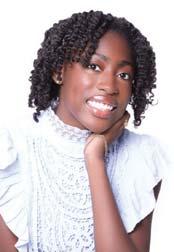
Gabrielle Walker is the 2023–24 Youth Poet Laureate of Cincinnati, selected by WordPlay Cincy. A current senior at The Seven Hills School, Walker is the city’s second Youth Poet Laureate, succeeding Rimel Kamran of Mason, Ohio, a rising freshman at The Ohio State University. Walker was selected by a committee of experts in the sectors of creative youth leadership; library sciences; literary arts; secondary, post-secondary and graduate education; and community arts.
Much of Walker’s work examines identity pertaining to her Cameroonian-American heritage, as well as the intersections of race, gender, nationality, ethnicity and class.

As a producer, J.PERIOD’s debut album, Story to


book by Doug Wright lyrics by Amanda Green music by Trey Anastasio & Amanda Green

APR–MAY GUEST ARTISTS
SEASON FUNDER www.ensemblecincinnati.org Start. Your. Engines.
©Richard Bord
HANDS ON A HARDBODY
–
REGIONAL MUSICAL REVIVAL Fanfare Magazine | 33
JUNE 8
30
Previously, Walker has also received awards in the statewide speed writing competition, “Power of the Pen,” and the National Scholastic Art and Writing Awards. This past summer, she received a national gold medal for her essay “How to Make Ends Meet: Metamorphosis and Safeguarding Tradition in Jamaica Kincaid’s ‘Girl.’”
THE NOUVEAU PROGRAM
Marion Peraza, Artistic Advisor and Coach
The Nouveau Program supports increased participation in classical music by African American and Latine student musicians by providing equitable opportunities for music study and performance. The Nouveau Program includes several groups, and students must audition to participate. Nouveau members receive weekly chamber coaching, perform throughout the season, and participate in ageappropriate workshops and activities. Nouveau ensembles include Novice, Apprentice, Chamber Players and Winds. The Nouveau Program is supported by the D’Addario Foundation; the CSO’s Multicultural Awareness Council; Queen City (OH) Chapter of The Links, Incorporated; PricewaterhouseCoopers; and The Wohlgemuth Herschede Foundation
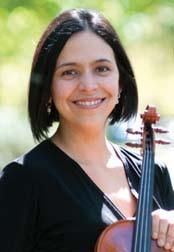
Violinist and Nouveau Program coach Marion Peraza began her musical career as a member of Venezuela’s Youth Orchestra System, El Sistema. As a member of the Simón Bolívar Symphony Orchestra, she toured Japan, France, Spain, Mexico, Colombia and Brazil, among others, and performed on seven recordings. She owns the Peraza Music Workshop (PMW), where she teaches private violin lessons, coaches awardwinning chamber ensembles and offers theory classes. The PMW is a Founding School of the Carnegie Hall Royal Conservatory Achievement Program. As a guest teacher/clinician, she has taught at the Western Springs Suzuki Talent Education and Elmhurst College in Chicago, the University of Vermont, University of Louisville, University of Southern Maine, Bermuda Music School, Conservatorio de Bogotá and Simón Bolívar Conservatory in Venezuela. Peraza is also the director and founder of the Encore Advanced Chamber Orchestra, a summer program at the University of Cincinnati College-Conservatory of
APR–MAY GUEST ARTISTS
34 | 2023–24 SEASON
Music. Her principal teachers are José Francisco Del Castillo (Simón Bolívar Conservatory),
Margaret Pardee (Juilliard School), the Tokyo Quartet and the Vermeer Quartet. Peraza will join the string faculty at Miami University in 2023 teaching violin and viola.
MEMBERS OF THE NOUVEAU PROGRAM
Violin I
Nicole Heinz Urgilez
Aurora Henry-Jones
Alyssa Lehmann
Sarah Perpignan
Violin II
Carmen DeAtley-Rosales
Julia Lancman
Cecilia Lehmann
Grace Oyediran
Viola
Christina Lehmann
Trinity Thrasher
Kasinda Willingham
Cello Caleb Griffin
Shaylin King
Dominic Lehmann
Nathan Lehmann
John Opalinski
Jayden Thrasher
Kallea Willingham
Bass
Matteo Meli
CSO APR 20 & 21: Hadelich & Holland
LOUIS LANGRÉE, conductor
Turn to p. 27 for a biography of CSO Music Director Louis Langrée.
AUGUSTIN HADELICH, violin
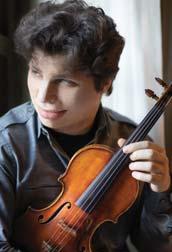
Known for his phenomenal technique, insightful and persuasive interpretations, and ravishing tone, Augustin Hadelich opened the 2023–24 season with summer festival concerts at the BBC Proms, as well as in Aspen, La Jolla, Verbier, Tsinandali, Bucharest and Salzburg, and his residency at the Konzerthaus Berlin. Hadelich performed the German premiere of Donnacha Dennehy’s Violin Concerto, composed for him, together with the Konzerthausorchester Berlin as part of Musikfest Berlin. Other appearances this season include the Orchestre National de France and the Czech Philharmonic Orchestra; debuts with Staatskapelle Dresden, Orchestra dell’ Accademia Nazionale di Santa
Cecilia, Tonhalle-Orchester Zürich and the NDR Radiophilharmonie; and further appearances with prominent orchestras of Europe, North America and Asia. He also gives solo recitals in Italy, Germany and the U.S.
Hadelich’s catalogue of recordings covers a wide range of the violin literature. In 2016, he received a “Best Classical Instrumental Solo” Grammy for his recording of Dutilleux’s L’Arbre des songes. His recordings for Warner Classics, for
whom he is an exclusive artist, include Paganini’s 24 Caprices, the Brahms and Ligeti concertos, the Opus Klassik Award-winning Bohemian Tales with Dvořák’s violin concerto, the Grammy-nominated Bach’s Sonatas and Partitas, and his most recent album, Recuerdos, featuring works by Britten, Prokofiev and Sarasate.
A dual American-German citizen born in Italy to German parents, Hadelich studied with Joel Smirnoff at The Juilliard School. He achieved a major career breakthrough in 2006 by winning the International Violin Competition in Indianapolis. His accomplishments continued with the prestigious Avery Fisher Career Grant in 2009, a Borletti-Buitoni Trust Fellowship in 2011, an honorary doctorate from the University of Exeter (UK) in 2017, and being named Instrumentalist of the Year by Musical America in 2018.
In 2021, Augustin Hadelich was appointed Professor in the Practice of Violin to the faculty of the Yale School of Music. He plays a violin by Giuseppe Guarneri del Gesù from 1744, known as “Leduc, ex Szeryng,” on loan from the Tarisio Trust. augustinhadelich.com
CSO APR 26 & 27: Dvořák Symphony No. 8
KATHARINA WINCOR, conductor

Austrian conductor
Katharina Wincor is a force on the podium and quickly establishing an international reputation.
In the 2023–24 season, she returns to Museumsorchester Frankfurt, Dresdner Philharmonie, Cincinnati Symphony Orchestra, Klangforum Wien, Ensemble Reflektor and OFUNAM. Debuts include WDR Sinfonieorchester, Staatsorchester Darmstadt, NFM Wrocław Philharmonic, BBC Symphony, Tucson Symphony, Sarasota Orchestra, Queensland Symphony and Yomiuri Nippon Symphony.
Recent highlights include guest engagements with ensembles such as Deutsches SymphonieOrchester Berlin, Bruckner Orchester Linz, Grazer Philharmoniker, Seattle Symphony, Detroit Symphony, Vancouver Symphony, Naples Philharmonic, North Carolina Symphony and Utah Symphony.
Wincor’s early experiences with the Arnold Schoenberg Choir in Vienna make working with singers come naturally. Since leading
©Andrej Grilc
©Suxiao Yang
APR–MAY GUEST ARTISTS
Fanfare Magazine | 35
Bernstein’s Candide at the Cincinnati May Festival in 2022, she has conducted a production at the Salzburger Landestheater and a children’s opera at the Salzburg Festival.
Wincor attracted international attention as Assistant Conductor of the Dallas Symphony Orchestra, working with Music Director Fabio Luisi. In 2020, she was a prize winner at the Mahler Competition in Bamberg and invited to the Royal Concertgebouw Orchestra’s Ammodo masterclass with Iván Fischer, who subsequently brought her on as an assistant for several projects with the Budapest Festival Orchestra.
Having grown up in Upper Austria, Wincor studied conducting at the University of Music and Performing Arts Vienna and the Zurich University of the Arts. She has participated in masterclasses with Riccardo Muti, Jaap van Zweden, Robert Spano and David Zinman.
SHEKU KANNEH-MASON, cello 2024 MAC Music Innovator
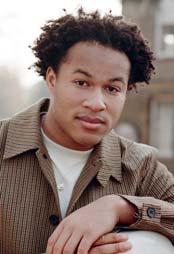
After winning the BBC Young Musician competition in 2016, cellist Sheku KannehMason’s performance at the wedding of the Duke and Duchess of Sussex at Windsor Castle in 2018 was watched by two billion people worldwide.
Highlights of the 2023–24 season include the Last Night of the Proms with the BBC Symphony and Marin Alsop, as well as performances with the Los Angeles Philharmonic, Orchestre de Paris, Orquesta Nacional de España, National Symphony Orchestra of Ireland, Oslo Philharmonic, Chicago Symphony, Gävle Symphony, Royal Liverpool Philharmonic, Royal Philharmonic on tour in Germany, Cincinnati Symphony Orchestra, New York Philharmonic, Detroit Symphony and San Francisco Symphony. With his sister, Isata, he appears in recital in Japan, Singapore and South Korea, in addition to an extensive European recital tour. Kanneh-Mason will also perform a series of duo recitals with guitarist Plínio Fernandes, as well as continuing his solo cello recital tour in the U.S. and Canada. He returns to Antigua, where he has family connections, as an ambassador for the Antigua and Barbuda Youth Symphony Orchestra.
A Decca Classics recording artist, his 2022 album Song showcases his innately lyrical playing in a range of arrangements and collaborations. His 2020 album Elgar reached No. 8 in the overall Official UK Album Chart, making him the first-ever cellist to reach the UK Top 10.
Kanneh-Mason is a graduate of London’s Royal Academy of Music, where he studied with Hannah Roberts and, in 2022, was appointed as the Academy’s first Menuhin Visiting Professor of Performance Mentoring. He is an ambassador for the Juvenile Diabetes Research Foundation, Future Talent and Music Masters. Kanneh-Mason was appointed a Member of the Most Excellent Order of the British Empire (MBE) in the 2020 New Year’s Honours List.
Sheku Kanneh-Mason appears by arrangement with Enticott Music Management; he records exclusively for Decca Classics. He plays a Matteo Goffriller cello from 1700, which is on indefinite loan to him. shekukannehmason.com
CSYO APR 28: 2 pm, Concert Orchestra, “Walkabouts” | 7 pm, Philharmonic Orchestra, “Spartacus”
FELIPE MORALES-TORRES, CSYO Concert Orchestra conductor (2 pm)

Felipe Morales-Torres is an award-winning conductor and educator with a passion for inspiring the next generation of musicians. In addition to his role as Conductor of the CSYO Concert Orchestra, Morales is the Assistant Director and Program Manager with the Bornoff Foundation for the Advancement of String Education (FASE) and previously served as Orchestra Director for Anderson High School and Winton Woods City Schools. He is also an active guest conductor and clinician for student orchestras in the U.S. and Latin America, traveling to Costa Rica each summer to teach and conduct for the Foundation for the Advancement of Strings Education (FASE). He was a recent guest of the National Symphony Orchestra of Chile, where he conducted and studied alongside its director, Leonid Grin.
As a Latin-American teaching artist, Morales is driven to engage diverse student musicians and to make quality opportunities accessible to them. He has played a part in several community music programs, including the Louisville Youth Orchestra and the Dayton Philharmonic’s Q The Music, an El Sistema-inspired outreach program.
Morales started his musical life as a violist, and later pursued bassoon studies as an undergraduate at the University of Cincinnati College-Conservatory of Music. In 2019, he completed a master’s degree in Music Education and Orchestral Conducting, earning the University’s Excellence in Teaching Award for his work with undergraduate music education majors.
APR–MAY GUEST ARTISTS
36 | 2023–24 SEASON
©Ollie Ali
SAMUEL LEE, conductor, CSYO Philharmonic Orchestra conductor (7 pm)

Samuel Lee, first prize winner of the BMI International Conducting Competition in Bucharest and the International Conducting Competition in Taipei, was appointed Assistant Conductor of the Cincinnati Symphony Orchestra, beginning in the 2022–23 season, and was promoted to Associate Conductor in August 2023.
In addition to several recent guest conducting engagements throughout Europe and Asia, Lee was also a Conducting Fellow with the Cabrillo Festival of Contemporary Music in 2021 and 2022, where he worked with conductors Cristian Măcelaru, Yannick Nézet-Séguin, Octavio MásArocas and Marin Alsop.
Since 2016 Samuel Lee has been the chief conductor of the C.P.E. Bach Musikgymnasium orchestra Berlin. He and the orchestra have been regularly invited to the Berlin Philharmonie and Konzerthaus Berlin for subscription concerts. He also served as a viola professor at Hochschule für

Musik und Theater “Felix Mendelssohn-Bartholdy” in Leipzig, Germany until 2022.
As a violist, Lee was invited to perform with orchestras throughout Europe and Asia. From 2009 until 2017, he was the violist of Novus String Quartet, and he was the second prize winner of the 61st International Music Competition of ARD Munich and first prize winner of the Salzburg International Mozart Competition.
Lee is an alumnus of Hochschule für Musik “Hanns Eisler” Berlin, where he studied viola with Prof. Tabea Zimmermann (BM, MM, Konzertexamen), and orchestral conducting with Prof. Christian Ehwald (BM, MM). Lee completed Konzertexamen in orchestral conducting from Hochschule für Musik und Theater Hamburg (Prof. Ulrich Windfuhr).
VIVIAN CHANG, violin
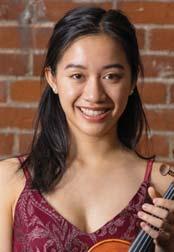
Vivian Chang, age 16, is a junior at William Mason High School. Since the age of four, she has been studying violin with Hong Cheng. Chang has served in the leadership roles of concertmaster, soloist and section principal in the Cincinnati Symphony Youth Orchestras, her school orchestra and in OMEA’s regional and all-state orchestras. In the summer of 2023, Chang joined Carnegie Hall’s National Youth Orchestra NYO2 and took part in NYO2’s international debut in the Dominican Republic.
Chang’s accomplishments in young artist and concerto competitions have earned featured soloist opportunities in public concerts with the Dayton Philharmonic, Louisville Orchestra, Blue Ash and Montgomery Symphony Orchestra, Mason Symphony Orchestra and Cincinnati Symphony Youth Orchestra. In the American Protégé International Concerto Competition, Chang won first place and the Judges’ Distinction Award. She is also the 2023 state winner of the MTNA Senior Strings competition, 2022 winner of the Senior Strings Division in the Fiorito International Music Festival, three-time state winner of the OMTA Buckeye Auditions, top prize winner of the 2022 Maestro of Tomorrow Competition by Cincinnati Public Radio, and 2021 winner of the Young Talent Search by Dayton Public Radio Discover Classical.
In 2023, for her achievement and services in bettering the community with her talent, Chang was recognized as a Congressional Award gold medalist, Congress’ highest honor for American youth.
APR–MAY GUEST ARTISTS
Fanfare Magazine | 37



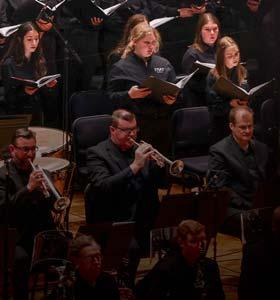


MAY17-25 • MUSIC HALL Season tickets on sale NOW! mayfestival.com • 513.381.3300 A FESTIVAL FULL OF NEW DISCOVERIES FESTIVAL 2024 2024 Festival Sponsor Christy and Terry Horan Annual Support May Festival Season Sponsor May Festival Presenting Sponsor
CSO MAY 3 & 4: Beethoven 7 & Dessner Premieres
LOUIS LANGRÉE, conductor
Turn to p. 27 for a biography of CSO Music Director Louis Langrée.
ALICE SARA OTT, piano

One of classical music’s most creative minds, in the 2023–24 season Alice Sara Ott appears as Artistin-Residence at London’s Southbank Centre and Paris’ Radio France; gives the worldwide premieres of a new piano concerto composed for her by Bryce Dessner (with Tonhalle-Orchester Zürich, Philharmonia Orchestra, Orchestre Philharmonique de Radio France, Munich Philharmonic and Deutsches Sinfonieorchester Berlin, in addition to this weekend’s Cincinnati Symphony Orchestra concerts); embarks upon an extensive Asia tour with her project Echoes of Life; and releases two major new albums on Deutsche Grammophon (Beethoven and Echoes of Life Deluxe, a follow-up to Echoes of Life, Ott’s widely successful 10th album), for whom she is an exclusive recording artist.
2023–24 also sees Alice Sara Ott on tour with the London Symphony Orchestra and Sir Antonio Pappano and the City of Birmingham Symphony Orchestra and Kazuki Yamada. She debuts with the New York Philharmonic performing Ravel’s G Major Concerto with Karina Canellakis conducting.
Ott’s Echoes of Life project is built around Chopin’s Preludes, Op. 28 and features works from the likes of Chilly Gonzales, Francesco Tristano, Arvo Pärt and György Ligeti. A digital video installation accompanying the recital takes the audience on their own virtual journey to create a unique concert experience.
Her Beethoven album project, with Karina Canellakis and Netherlands Radio Philharmonic Orchestra, was born as a collaboration with Apple Music, with the album released exclusively upon launch of the new Apple Music Classical app.
Ott also expresses her creativity through design and brand partnerships beyond classical music. She was personally requested to design a line of high-end leather bags for JOST, has been global brand ambassador for Technics, and has collaborated with luxury brands Chaumet (part of LVMH group) and Wempe. alicesaraott.com
CSO MAY 10–12: Louis’ Grand Finale
LOUIS LANGRÉE, conductor
Turn to p. 27 for a biography of CSO Music Director Louis Langrée.
LATONIA MOORE, soprano

Considered one of the greatest sopranos in the world today, Latonia Moore opened the 2023–24 season of the Metropolitan Opera as Sister Rose in Dead Man Walking. During the 2023–24 season she sings Mefistofele at Teatro Lirico di Cagliari, reprises Billie in Fire Shut Up in My Bones at the Met and sings Verdi’s Requiem with BBC.
She opened the 2021–22 Metropolitan Opera season as Billie in the New York premiere of Terence Blanchard’s Fire Shut Up in My Bones, a role she reprised for her debut at Lyric Opera of Chicago.
Internationally acclaimed for her Aida, she performed this role for her debut with LA Opera. She performed Emelda Griffith in the New York premiere of Blanchard’s Champion. Additional operatic highlights include appearances as CioCio-San in Madama Butterfly at the Metropolitan Opera; Liù in Turandot at Royal Opera Covent Garden; the title role in Tosca and Elisabeth in Don Carlo with Opera Australia; Tosca with Washington National Opera; Cio-Cio-San and Mimi in La bohème with Semperoper Dresden; Cio-Cio-San at the Hamburg State Opera; Micaëla in Carmen; Liù, Elvira in Ernani and Lucrezia in I dueFoscari in Bilbao; Desdemona in Otello at Bergen National Opera; Serena in Porgy andBess at both English National Opera and Dutch National Opera; and an appearance on the 50th Anniversary Gala of the Metropolitan Opera.
Orchestral highlights include the role of Lady Macbeth in a recording of Macbeth with Edward Gardner (Chandos) and of Mahler’s Symphony No. 2with the Vienna Philharmonic and Gilbert Kaplan (Deutsche Grammophon), as well as performances as Vivetta in L’arlesiana and Fidelia in Edgar with the Opera Orchestra of New York at Carnegie Hall and as Bess in Porgy and Bess with the Berlin Philharmonic Orchestra conducted by Sir Simon Rattle.
FOR MORE INFORMATION about our guest artists, please text PROGRAM to 513.845.3024*.
*By texting to this number, you may receive messages that pertain to the organization and its performances; msg & data rates may apply. Reply HELP to help, STOP to cancel.
APR–MAY GUEST ARTISTS
Fanfare Magazine | 39
©Pascal Albandopulos



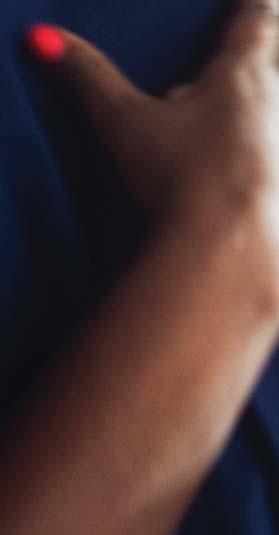






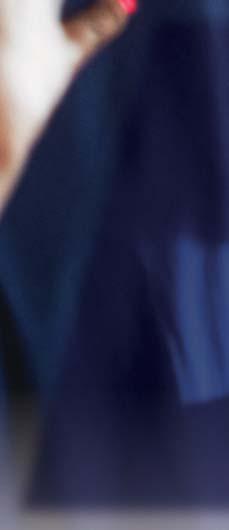











Support is always a good IDEA.



The Cincinnati Symphony Orchestra’s Fifth Third Foundation IDEA Series highlights three Orchestra initiatives that promote Inclusion, Diversity, Equity and Access.
We are proud to support the CSO in celebrating Black and African American artistry and creating programming with authentic representation.



Fifth Third Bank, National Association. MemberFDIC. 23-8_CRO_AD
CLASSICAL ROOTS | 2023–24 SEASON

FRI APR 19, 7:30 pm Music Hall
JOHN MORRIS RUSSELL, conductor
HI-TEK, producer & rapper
CLASSICAL ROOTS COMMUNITY CHOIR, Jason Alexander Holmes, interim resident conductor
VERONDA “VEE” GIBSON, CIARA HARPER, SONIA HARPER, MARY PATTON, NOËL WALTON and RITA WINTERS, chorus soloists
MEMBERS OF THE NOUVEAU PROGRAM, Marion Peraza, artistic advisor and coach
LAUREN EYLISE, vocalist
NOAH HAWES, narrator/rapper
ALAN B. JONES, narrator
YALIE SAWEDA KAMARA, Poet Laureate of Cincinnati
J.PERIOD, DJ/producer
GABRIELLE WALKER, Youth Poet Laureate of Cincinnati
Excerpt from Ode to Ethiopia
Finale from Symphony No. 1, Afro-American Symphony
Lift Ev’ry Voice and Sing (Text on p. 43)
Original Poem by the Poet Laureate of Cincinnati
The Word Was God
Paul Lawrence Dunbar
William Grant Still
James Weldon Johnson
Yalie Saweda Kamara
Rosephanye Powell
“Military March” from Othello Suite Samuel Coleridge-Taylor, text: John Mercer Langston
The Weary Blues
Original Poem by the Youth Poet Laureate of Cincinnati
“Cumbia y Congo” from Danzas de Panama
Joyful, Joyful We Adore Thee
INTERMISSION


Langston Hughes
Gabrielle Walker
William Grant Still
Ludwig van Beethoven
The CSO is grateful to IDEA Series Sponsor Fifth Third Foundation, Artist Series Sponsor The Lazarow Schwartz Family Fund and Performance Sponsor JRH Consultants Digital Access Partner: CVG Airport Authority
The Classical Roots concert was made possible by the National Endowment for the Arts and the Louise H. and David S. Ingalls Foundation, Inc.
The Cincinnati Symphony Orchestra is grateful for the support of the Louise Dieterle Nippert Musical Arts Fund of the Greenacres Foundation and the Nina Browne Parker Trust, and for the thousands of people who give generously to the ArtsWave Community Campaign. This project was supported in part by the Ohio Arts Council, which receives support from the State of Ohio and the National Endowment for the Arts
The Cincinnati Symphony Orchestra in-orchestra Steinway piano is made possible in part by the Jacob G. Schmidlapp Trust
Steinway Pianos, courtesy of Willis Music, is the official piano of the Cincinnati Symphony Orchestra and Cincinnati Pops.
Listen to selections from this program on 90.9 WGUC June 16, 2024 at 8 pm, followed by 30 days of streaming at cincinnatisymphony.org/replay.
 The Lazarow Schwartz Family Fund JRH Consultants
The Lazarow Schwartz Family Fund JRH Consultants
continued
Fanfare Magazine | 41
Louise H. and David S. Ingalls Foundation, Inc.
Psalm 8
Selections with Hi-Tek:
Respiration/The Sun God/Round and Round Music for Life Move Something/The Blast/Come Down
“The Color Purple” from The Color Purple Revival *
Program subject to change
Richard Smallwood, arr. Panion
Various, orch. Derrick Hodge
NOTE: Portions of this performance include adult themes and language.
For more information about this program, please text PROGRAM to 513.845.3024*.
*By texting to this number, you may receive messages that pertain to the organization and its performances; msg & data rates may apply. Reply HELP to help, STOP to cancel.
Brenda Russell
*The Color Purple Revival is presented through special arrangement with and all authorized performance materials are supplied by Theatrical Rights Worldwide 1180 Avenue of the Americas, Suite 640, New York, NY 10036. www.theatricalrights.com

CLASSICAL ROOTS 2024
THANK YOU — Artist Sponsor THE LAZAROW SCHWARTZ FAMILY FUND 42 | 2023–24 SEASON
LIFT EV’RY VOICE AND SING
Lift ev’ry voice and sing, ‘Til earth and heaven ring,
Ring with the harmonies of Liberty;
Let our rejoicing rise
High as the listening skies,
Let it resound loud as the rolling sea.
Sing a song full of the faith that the dark past has taught us,
Sing a song full of the hope that the present has brought us;
Facing the rising sun of our new day begun,
Let us march on ‘til victory is won.
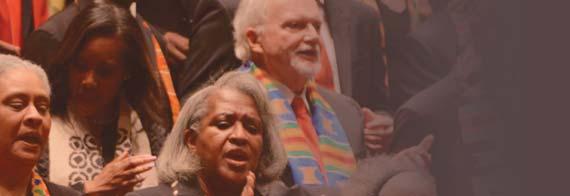






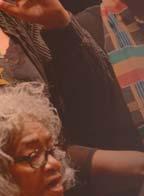






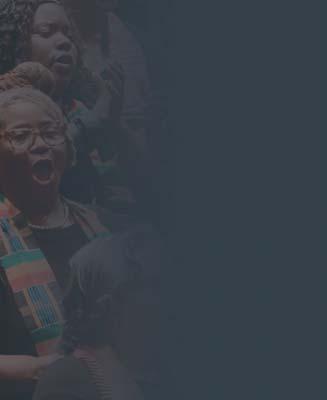






CLASSICAL ROOTS 2024
Visit Cincy TriHealth d.e. Foxx and Associates, Inc. The Voice of Your Customer Clark Schaefer Hackett American Red Cross African American Chamber of Commerce THANK YOU CLASSICAL ROOTS SUPPORTERS — Fanfare Magazine | 43
FORT WASHINGTON INVESTMENT ADVISORS PROUD PARTNER OF THE CINCINNATI SYMPHONY ORCHESTRA

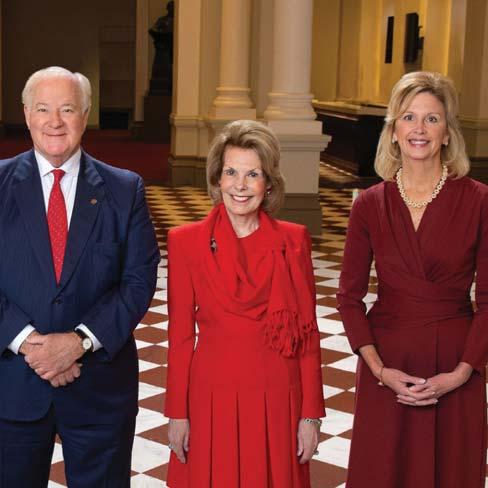








Fort Washington Investment Advisors, Inc., a member of Western & Southern Financial Group, is honored to help advance the Cincinnati Symphony Orchestra’s mission to seek and share inspiration.
Learn how we can work together. fortwashington.com
Bradley J. Hunkler Senior Vice President, Chief Financial Officer, Western & Southern Financial Group Kate C. Brown, CFP® Managing Director, Fort Washington, CSO Board Member John F. Barrett Chairman, President & CEO, Western & Southern Financial Group Maribeth S. Rahe President & CEO, Fort Washington Tracey M. Stofa Managing Director, Head of Private Client Group, Fort Washington
HADELICH & HOLLAND | 2023–24 SEASON
SAT APR 20, 7:30 pm SUN APR 21, 2 pm Music Hall

LOUIS LANGRÉE, conductor AUGUSTIN HADELICH, violin
Jonathan Bailey
Assemble CSO CO-COMMISSION HOLLAND (b. 1974)
Arnold SCHOENBERG Verklärte Nacht (“Transfigured Night”), Op. 4 (1874–1951)
INTERMISSION
Johannes BRAHMS
Concerto in D Major for Violin and Orchestra, Op. 77 (1833–1897)
Allegro non troppo
Adagio
Allegro giocoso, ma non troppo vivace. Poco più presto
These performances are approximately 125 minutes long, including intermission.
The CSO is grateful to CSO Season Sponsor Western & Southern Financial Group, Presenting Sponsor Cincinnati Symphony Club and Concert Sponsor
Johnson Investment Counsel
The Cincinnati Symphony Orchestra co-commissioned, CSO premiere of Assemble by Jonathan Bailey Holland is made possible by a generous gift from Melinda and Irwin Simon

The Cincinnati Symphony Orchestra is grateful for the support of the Louise Dieterle Nippert Musical Arts Fund of the Greenacres Foundation and the Nina Browne Parker Trust, and for the thousands of people who give generously to the ArtsWave Community Campaign, the region’s primary source for arts funding. This project was supported in part by the Ohio Arts Council, which receives support from the State of Ohio and the National Endowment for the Arts
Pre-Concert Talks are made possible by an endowed gift from Melody Sawyer Richardson
WGUC is the Media Partner for these concerts.
The Cincinnati Symphony Orchestra in-orchestra Steinway piano is made possible in part by the Jacob G. Schmidlapp Trust
Listen to selections from this program on 90.9 WGUC May 19, 2024 at 8 pm, followed by 30 days of streaming at cincinnatisymphony.org/replay.

Fanfare Magazine | 45

Composed: 2024
Premiere: April 12–14, 2024, Louis Langrée conducting the Los Angeles Philharmonic (cocommissioner).
Instrumentation: 2 flutes, piccolo, 2 oboes, English horn, 2 clarinets, bass clarinet, 3 bassoons (incl. contrabassoon), 4 horns, 3 trumpets, 3 trombones, tuba, timpani, bass drum, claves, quad toms, sandpaper blocks, snare drum, 2 suspended cymbals, tam-tam, vibraphone, wind chimes, wood block, harp, strings CSO notable performances: First: These are the first CSO performances of Assemble
Duration: approx. 13 minutes
JONATHAN BAILEY HOLLAND
Born: February 27, 1974, Flint, Michigan
Assemble CSO CO-COMMISSION
Assemble is composer Jonathan Bailey Holland’s seventh work commissioned by the Cincinnati Symphony Orchestra, where he served as composer-in-residence during the 2018–19 season. His commissions and performances have also included the orchestras of Atlanta, Baltimore, BBC, Detroit, Indianapolis, Kalamazoo, Los Angeles, Minnesota, Philadelphia, San Antonio and South Bend, and the New World Symphony, among others, as well as the Abeo Quartet, Da Capo Chamber Players, der/gelbe/klang, Left Coast Chamber Ensemble, Network for New Music, Present Music, Radius Ensemble, Plymouth Music Series and more.
He is currently the dean of the Henry and Leigh Bienen School of Music, as well as the Kay Davis Professor of Music, at Northwestern University. A recipient of a Guggenheim Foundation Fellowship, Holland has been awarded the Fromm Commission from the Fromm Foundation at Harvard University, a Massachusetts Cultural Council Artist Fellowship, a Brother Thomas Award and a Live Arts Boston grant from the Boston Foundation, among other honors and awards. His work can be heard on recordings by the Cincinnati Symphony Orchestra (American Portraits, Paavo Järvi conducting), University of Texas Trombone Choir, Radius Ensemble and Transient Canvas, as well as pianist Sarah Bob and flutist Christopher Chaffee.
Holland holds a Bachelor of Music degree from Curtis Institute of Music, where he studied composition with Ned Rorem, and a PhD from Harvard University, where he studied with Bernard Rands, Mario Davidovsky, Andrew Imbrie and Yehudi Wyner.
Holland writes the following about Assemble:
Rhythm, harmony and melody are basic musical building blocks. These elements are often interwoven to create a layered musical landscape. In this work, each of these elements is introduced individually, one emerging from the energy produced by the one before. By the end you will have heard the rhythm, harmony and melody separately, but you will have also heard the piece in its entirety through the presentation of the individual parts…which are, of course, interdependent, and not always easy to separate.
ARNOLD SCHOENBERG
Born: September 13, 1874, Vienna, Austria
Died: July 13, 1951, Brentwood, California
Verklärte Nacht (“Transfigured Night”), Op. 4
At the age of 16, in 1890, Arnold Schoenberg decided to become a professional musician, having already dabbled in composition, taught himself to play the violin and cello, and participated in some chamber music concerts with friends. His father’s death in 1889 had thrown him into rather serious financial distress, however, and he had to scratch out a livelihood after leaving school in 1891 by working in a bank and conducting local choruses and theater orchestras for a few schillings per performance. In 1893, he met Alexander Zemlinsky, who had already established a
APR 20–21 PROGRAM NOTES
46 | 2023–24 SEASON
Jonathan Bailey Holland
Viennese reputation as a composer, conductor and teacher though he was only two years Schoenberg’s senior. Schoenberg showed his new friend some of his manuscripts and Zemlinsky was so impressed with his talent that he offered to take him on as a counterpoint student (this instruction turned out to be Schoenberg’s only formal study) and secured him a position in the cello section of the Polyhymnia Orchestra to help earn a little money. Zemlinsky assumed the role of guardian to Schoenberg, introducing the young musician to his circle of professional colleagues and constantly offering advice and encouragement. In 1901, Schoenberg married Zemlinsky’s sister, Mathilde.
During the summer of 1899, Schoenberg and Zemlinsky were on holiday in the mountain village of Payerbach, south of Vienna, and it was there that Schoenberg began a work for string sextet based on a poem by Richard Dehmel: Verklärte Nacht (“Transfigured Night”), which had appeared three years earlier in a collection called Weib und Welt (“Woman and World”). (Schoenberg was familiar with Dehmel’s work by at least 1897, when he set several of the poet’s verses.) Dehmel was one of the most distinguished German poets of the day, whose verses bridged the sensuous Impressionism of the preceding generation and the intense spirituality of encroaching Expressionism. Verklärte Nacht matches well the Viennese fin-de-siècle temperament, when Sigmund Freud was intellectualizing sex with his systematic explorations into the subconscious and Gustav Klimt was painting full-length portraits of his female subjects as he imagined they would look totally nude before applying layers of elaborate, gold-flecked costumes to finish the canvas. The following translated excerpt from Dehmel’s poem appears in Schoenberg’s printed score:
Two people walk through the bare, cold woods; the moon runs along, they gaze at it. The moon runs over tall oaks, no cloudlet dulls the heavenly light into which the black peaks reach. A woman’s voice speaks:
“I bear a child, but not by you. I walk in sin alongside you. I sinned against myself mightily. I believed no longer in good fortune but still had mighty longing for a full life, mother’s joy and duty; then I grew shameless, then horror-stricken, I let my sex be taken by a stranger and even blessed myself for it. Now life has taken its revenge: Now I have met you, you.”
She walks with clumsy gait. She gazes upward; the moon runs along. Her somber glance drowns in the light. A man’s voice speaks:
“The child that you conceived be to your soul no burden. Oh look, how clear the universe glitters! There is a glory around All, you drift with me on a cold sea, but a peculiar warmth sparkles from you in me, from me in you. It will transfigure the strange child you will bear for me, from me; you brought the glory into me, you made myself into a child.”
He holds her around her strong hips. Their breath kisses in the air. Two people walk through the high, light night.
Schoenberg glossed this richly emotional poem with music influenced by Wagner’s lush Tristan chromaticism, the intellectual rigor of Brahms, and the intense expression of Romanticism to create a vast onemovement work for strings that is virtually a programmatic tone poem.
—Richard E. Rodda
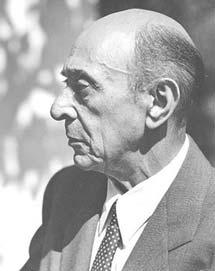 Schoenberg
Schoenberg
Composed: Written for string sextet in 1899; scored for string orchestra in 1917, revised in 1943.
Premiere: Sextet premiered March 15, 1902 in Vienna; orchestral version premiered on June 3, 1919 in Vienna, conducted by the composer.
Instrumentation: strings
CSO notable performances: First: March 1923, Fritz Reiner conducting. Most Recent: February 2013, Pinchas Zukerman conducting.
Duration: approx. 32 minutes
PROGRAM NOTES
Fanfare Magazine | 47
Arnold

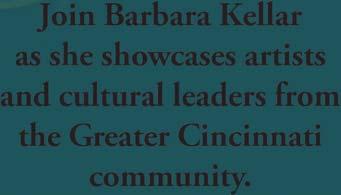


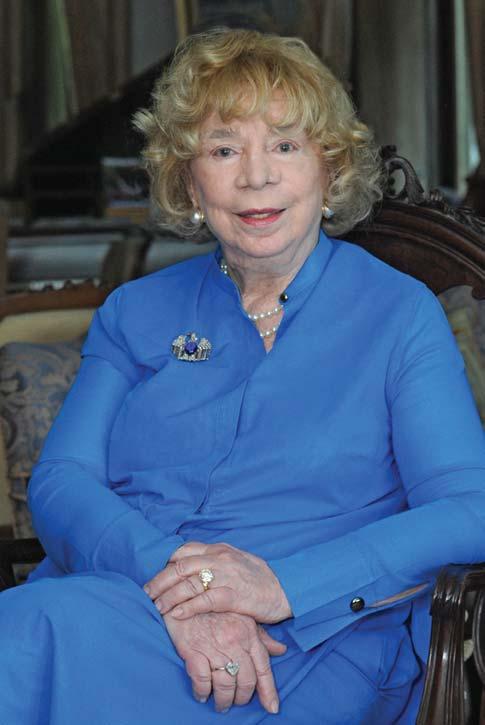
Award Winner Re R gionaal - Interviiew/DDiiscuussioon P Program SATURDAY 6:30PM CET SUNDAY 8:30 PM CET ARTS Join Barbara Kellar as she showcases artists and cultural leaders from the Greater Cincinnati community. www.CETconnect.org
Emmy
JOHANNES BRAHMS
Born: May 7, 1833, Hamburg, Germany
Died: April 3, 1897, Vienna, Austria
Concerto in D Major for Violin and Orchestra, Op. 77
In retrospect, it seems inevitable that Johannes Brahms would compose and dedicate a violin concerto to his dear friend and colleague Joseph Joachim. Joachim was one of the most outstanding violinists of the 19th century, having first earned accolades from critics with performances of concertos under the baton of the famous composer Felix Mendelssohn.
Brahms began writing his Violin Concerto in the summer of 1878. By this time, he was one of the most important composers in Europe, having garnered considerable acclaim with his A German Requiem. Much of the history of the concerto, particularly details about the creation of its solo violin part, is documented by an unusually large number of detailed sources. These include letters between Brahms and Joachim, as well as Brahms’ manuscript of the score, which is now owned by the Library of Congress. This manuscript is mainly in Brahms’ handwriting, but it also includes suggestions by Joachim, some of which were written in a color of ink that differed from Brahms’ notations.
The solo violin part is known for its great technical difficulty. Brahms was very aware that it would challenge many players, and he asked Joachim to point out passages that were “difficult, awkward, impossible” to play. Joachim not only identified such phrases, he also wrote out alternate ones. Brahms incorporated some of these ideas into his work, but not all of them. It seems that he simply wanted to see options for specific passages and to reassure himself that his own ideas best suited the work. In addition to assisting Brahms with various matters in the main sections of each movement, Joachim created the cadenza that is performed toward the end of the first movement. This showpiece, which is usually played in performances today, perfectly matches the virtuosity of the rest of the movement and complements the movement’s formal features, including its development of the main themes.
Joachim pushed Brahms to finish the concerto in time to premiere it on January 1, 1879 with the Leipzig Gewandhaus Orchestra. He played the violin solo while Brahms conducted. But neither man gave his best performance, the audience was not impressed, and both men realized that the work needed further revisions. In particular, Brahms reduced the sound of the orchestra so that it did not overwhelm the soloist. Joachim immediately scheduled other performances, and by April 1879 he had presented the work in London, Vienna, Budapest and Cologne, thus establishing it as “his” concerto.
Although Brahms had thought of creating four movements for the concerto, he settled on the customary three. The first is characterized by numerous contrasting moods. For instance, the first section played by the orchestra opens with a soft, enchanting melody played by the horn and oboe, but it closes with bold march-like phrases. The violin then makes its first appearance, immediately establishing its dominance with furious crossing of the strings and fast, wide-ranging scales. One of the most beautiful, tender moments occurs toward the end of the movement, after the cadenza, when the solo violin and oboe quietly recall the first theme. The oboe also plays the opening melody of the
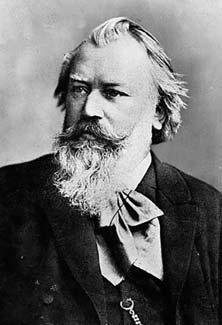
Composed: 1878
Premiere: January 1, 1879 in Leipzig, with the composer conducting and Joseph Joachim, violin
Instrumentation: solo violin, 2 flutes, 2 oboes, 2 clarinets, 2 bassoons, 4 horns, 2 trumpets, timpani, strings
CSO notable performances: First: January 1900, Frank Van der Stucken conducting; Leonora Jackson, violin. Most Recent: May 2018, Louis Langrée conducting; James Ehnes, violin.
Notable Violinists: Fritz Kreisler (1908, 1912, 1915, 1944), Jascha Heifetz (1930, 1934, 1938, 1947, 1956), Isaac Stern (1949, 1962, 1969), Midori (1989), Itzhak Perlman (1992), Jennifer Koh (1998), Joshua Bell (2002), Gil Shaham (2006, 2013), Christian Tetzlaff (2009).
Duration: approx. 38 minutes
PROGRAM NOTES
Fanfare Magazine | 49
Johannes Brahms
For more information about this program, please text PROGRAM to 513.845.3024*.
*By texting to this number, you may receive messages that pertain to the organization and its performances; msg & data rates may apply. Reply HELP to help, STOP to cancel.
slow second movement, but here it is accompanied by the horn and the other winds. Whereas the solo violin enters with an energetic solo in the first movement, in the second it takes up the oboe’s melody, gently ornamenting it in a lyrical, touching rhapsody. Despite the dazzling virtuosity of the outer movements, early commentators, including those who had heard the London premiere, drew attention to the beauty of this movement, suggesting it would be the most popular of the three.
The lively finale greatly pleased the first audience in Leipzig. Its fiery, dance-like Hungarian style is another homage to Joachim, whose family was Hungarian. Joachim used the same style in the finale to his Second Violin Concerto (1857), which he both dedicated to Brahms and played under Brahms’ baton. In contrast to many other 19th-century concertos that are characterized by shows of flashy but meaningless virtuosity, Brahms’ and Joachim’s concertos are characterized by a type of structural integrity and gravitas inspired by the piano and violin concertos of Beethoven, and it is this characteristic that has ensured the continued success of Brahms’ concerto.
—Heather Platt, Sursa Distinguished Professor of Fine Arts
WELCOME TO APR–MAY GROUPS! (as of February 23, 2024)
Classical Roots: Apr. 19
Baldwin Grove
Kennedy Heights Presbyterian Church
Lincoln Cincinnati Recreation Center
Lincoln Heights Missionary Baptist Church
Mt. Zion Baptist Church
New Jerusalem Baptist Church
New Vision United Methodist Church
Queen City (OH) Chapter of The Links, Incorporated
Ms. Rochelle Sandidge
The Greater New Hope Missionary Baptist Church
Thelma Thomas
Zion Baptist
CSO Hadelich & Holland: Apr. 21
Seasons Retirement Community
CSO Dvořák Symphony No. 8: Apr. 26–27
Alleghany High School
Central High School
EKU Model Laboratory Schools
Gahanna Lincoln High School
CSO Beethoven 7 & Dessner Premieres:
May 3–4
Alyssa Allen
Barrington of Oakley
Christian Village at Mason
Cincinnati Country Day School
Maple Knoll Village
George and Margaret McLane Foundation
Otterbein Retirement Community
Peebles High School
The Kenwood by Senior Star
The Knolls of Oxford
Twin Lakes at Montgomery
CSO Louis’ Grand Finale: May 10–12
Alliance Française
Charles Schwab
George Rogers Clark High School
Bob Rogers Travel
Seasons Retirement Community
ENJOY THE MUSIC, TOGETHER!
• Groups of 10+ save 20% on most concerts and seniors and students save even more!
• Curate your own event with a private reception, guided tour or meet and greet— the possibilities are endless.
Contact
CSO Group Sales: 513.744.3252 or wmarshall@cincinnatisymphony.org
cincinnatisymphony.org/groups
PROGRAM NOTES
50 | 2023–24 SEASON
SPOTLIGHT ON WINDS & STRINGS | 2023–24 SEASON

THU APR 25, 7:30 pm
Harry T. Wilks Studio, Music Hall
Erwin SCHULHOFFConcertino for Flute, Viola and Contrabass (1894–1942)Andante con moto
Furiant: Allegro furioso
Andante
Rondino: Allegro gaio
Haley Bangs, flute
Rebecca Barnes, viola
Boris Astafiev, contrabass
Carl REINECKETrio in B-flat Major for Clarinet, Horn and Piano, Op. 274 (1824–1910)Allegro
Ein Märchen
Scherzo: Allegro
Finale: Allegro
Ronald Aufmann, clarinet
Molly Norcross, horn
Dror Biran, piano
Aram KHACHATURIANTrio for Clarinet, Violin and Piano (1903–1978)Andante con dolore, con molt’espressione
Allegro
Moderato
Christopher Pell, clarinet
Felicity James, violin
Anna Vinnitsky, piano
INTERMISSION
Robert SCHUMANNString Quartet in A Minor, Op. 41, No. 1 (1810–1856)Introduzione. Andante espressivo—Allegro
Scherzo. Presto
Adagio
Presto
Felicity James, violin
Rebecca Kruger Fryxell, violin
Caterina Longhi, viola
Nicholas Mariscal, cello
TIMING OK
Program notes for this concert will be on a printed insert available during the performance. This performance is approximately 120 minutes long, including intermission.
YOU’RE INVITED to greet the musicians after the concert.
The Winstead Chamber Series is endowed by a generous gift from the estate of former CSO musician WILLIAM WINSTEAD

Fanfare Magazine | 51
FIVE FOR 95 — OUR 95 TH SEASON
Takács Quartet
“… one of the best available [Beethoven]
—Gramophone
Tuesday, September 24, 2024 • 7:30 p.m.
Cuarteto Casals
“The immediately striking thing is the sound
—Gramophone
Wednesday, November 13, 2024 • 7:30 p.m.
Sheku Kanneh-Mason, cello
Isata Kanneh-Mason, piano
“… the sort of lofty emotional peak you’d have
—Gramophone
Tuesday, December 10, 2024 • 7:30 p.m.
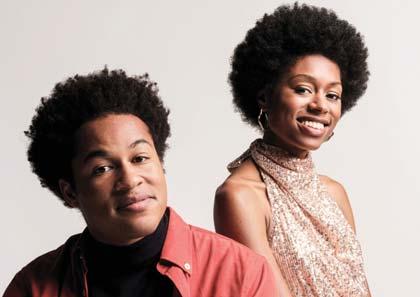
Isidore Quartet and Jeremy Denk
“Mr. Denk, clearly, is a pianist you want to hear,
—New York Times
“The Isidore’s total commitment to the piece,
—The Strad
Thursday, March 6, 2025 • 7:30 p.m.
Jerusalem Quartet
“Unity of sound and purpose is a given in any performance by the extraordinary
—New York Times
“The richness and weight of the Jerusalem Quartet’s sound spreads sensuality over
—Gramophone
Thursday, May 1, 2025 • 7:30 p.m.
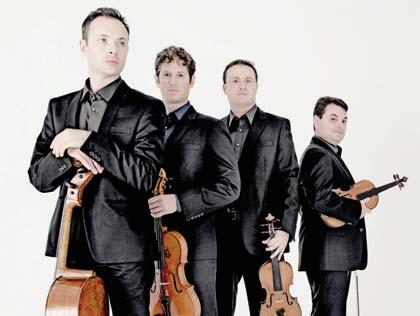
Jerusalem Quartet
All concerts at Memorial Hall. Early Bird Subscriptions $125 on sale now at CincyChamber.org or call Memorial Hall at 513-977-8838. Single tickets on sale this summer. Students under 18 admitted free, 18 and over $10, if available, on the day of performance.
Next this season:
Randall Goosby
• Decca recording artist
• 2023 and 2025
•
• April 7 and 9
Cincinnati Symphony Soloist
"… Randall Goosby has everything …" —NPR
C H A M B E R M U S I C C I N C I N N AT I CHAMBER MUSIC CINCINNATI
Sheku and Isata Kanneh-Mason
FRI APR 26, 7:30 pm SAT APR 27, 7:30 pm Music Hall

KATHARINA WINCOR, conductor
SHEKU KANNEH-MASON, cello
Dmitri SHOSTAKOVICH Festive Overture, Op. 96 (1906–1975)
Dmitri SHOSTAKOVICH Concerto No. 1 in E-flat Major for Cello and Orchestra, Op. 107
Allegretto Moderato
Cadenza
Allegro con moto
INTERMISSION
Antonín DVOŘÁK Symphony No. 8 in G Major, Op. 88 (1841–1904)
Allegro con brio
Adagio
Allegretto grazioso. Molto vivace
Allegro ma non troppo
These performances are approximately 110 minutes long, including intermission.
The CSO is grateful to CSO Season Sponsor Western & Southern Financial Group, Encore Sponsor Taft Stettinius & Hollister LLP and IDEA Series Sponsor Fifth Third Foundation
The appearance of Sheku Kanneh-Mason is generously supported by the Janice W. and Gary R. Lubin Fund for Black Artists

The Cincinnati Symphony Orchestra is grateful for the support of the Louise Dieterle Nippert Musical Arts Fund of the Greenacres Foundation and the Nina Browne Parker Trust, and for the thousands of people who give generously to the ArtsWave Community Campaign, the region’s primary source for arts funding. This project was supported in part by the Ohio Arts Council, which receives support from the State of Ohio and the National Endowment for the Arts
Pre-Concert Talks are made possible by an endowed gift from Melody Sawyer Richardson
WGUC is the Media Partner for these concerts.
The Cincinnati Symphony Orchestra in-orchestra Steinway piano is made possible in part by the Jacob G. Schmidlapp Trust
Listen to this program on 90.9 WGUC May 26, 2024 at 8 pm, followed by 30 days of streaming at cincinnatisymphony.org/replay.

DVOŘÁK SYMPHONY NO. 8 | 2023–24 SEASON
Fanfare Magazine | 53
Janice W. and Gary R. Lubin Fund for Black Artists
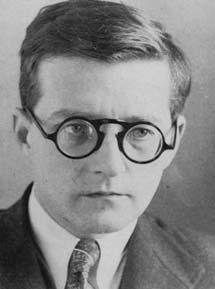
Composed: 1954
Premiere: November 6, 1954 at the Bolshoi Theatre
Instrumentation: 2 flutes, piccolo, 3 oboes, 3 clarinets, 2 bassoons, contrabassoon, 4 horns, 3 trumpets, 3 trombones, tuba, timpani, bass drum, crash cymbals, snare drum, triangle, strings
CSO notable performances: First: September 1971 in Eden Park, Erich Kunzel conducting. First Subscription Concert: November 1983, Jorge Mester conducting. Most Recent: (Pops) January 2018, John Morris Russell conducting; (CSO Subscription) March 1993, Jesús López Cobos conducting. Recording: 1988 Symphonic Spectacular, Erich Kunzel conducting.
Duration: approx. 6 minutes
DMITRI SHOSTAKOVICH
Born: September 25, 1906, Saint Petersburg, Russia
Died: August 9, 1975, Moscow, Russia
Festive Overture, Op. 96
This delightful short work falls chronologically between two of Shostakovich’s most serious symphonies: the Tenth, which contains a diabolical scherzo reputed to be a “portrait of Stalin,” and the Eleventh, which commemorates the bloody events of the 1905 revolution. Shostakovich whipped it off, literally in one day, in response to Vassili Nebolsin, a conductor at the Bolshoi Theater in Moscow, who urgently needed a festive piece for November 7, the anniversary of the October Revolution of 1917.
“Shostakovich composed the Festive Overture before my very eyes,” recalled Shostakovich’s friend, musicologist Lev Lebedinsky, who happened to be in the composer’s apartment when a desperate Nebolsin arrived to announce an emergency. Lebedinsky watched as Shostakovich sat down to compose the overture.
This amazing effortlessness can be heard in the light and carefree tone of the music, yet the quality of the musical ideas and the craftsmanship with which they are presented never let us suppose that the composer had no time at all to plan or even think about the piece. What Shostakovich did here is as close to improvisation as a symphonic composer can ever come: the conception and the realization of the piece were virtually simultaneous.
Of course, Shostakovich had the classical sonata-form model to fall back on: after an introductory fanfare, he duly presents his two themes (the first consists mainly of rapid eighth-note passages, while the second has an expressive, singing character). The subsequent development, recapitulation and return of the opening fanfares as a concluding section were all part of the traditional framework that Shostakovich could well take for granted, like so many composers before him. But the freshness of the materials that fill in that framework, the brilliant orchestration and the effervescence of the whole piece are true signs of genius. They explain why the Festive Overture, originally written to help a colleague in a pinch, has entered the standard repertoire and held its place there for 70 years.
—Peter Laki
DMITRI SHOSTAKOVICH
Concerto No. 1 in E-flat Major for Cello and Orchestra, Op. 107
Shostakovich enjoyed a special friendship and artistic partnership with Mstislav Rostropovich for many years. The cellist was a teenager when he first met the composer, who was his senior by 21 years, in 1943. Enrolled at the Moscow Conservatory as a student of both cello and composition, Rostropovich took Shostakovich’s orchestration class. His admiration for his teacher knew no bounds, and after Shostakovich had heard the young man play, the admiration became mutual. During the 1950s, the two played Shostakovich’s Cello Sonata (1934) in concert tours all over Russia, and their friendship deepened. Throughout those years, Rostropovich was dreaming of a concerto Shostakovich might one day write for him, but the composer’s wife advised him never to bring it up in conversation.
APR 26–27 PROGRAM NOTES
Dmitri Shostakovich
54 | 2023–24 SEASON
Rostropovich followed this advice, however reluctantly. And then one day in 1959, the concerto suddenly materialized. The ecstatic cellist committed the entire piece to memory in just four days, astounding the composer when the two got together at Shostakovich’s summer home on August 6, 1959.
Rostropovich proceeded to play the work from memory with the pianist he had brought with him, to the utter delight of the composer and a small number of friends who had gathered in the music room. Afterward, they celebrated with a festive dinner. Everyone knew they had witnessed a historic moment.
The first public performance, two months later, was enthusiastically received and was soon followed by an international triumph, establishing the work as the most significant addition to the cello concerto literature in a long time. Shostakovich, inspired by an exceptional instrumentalist with whom he had bonded deeply, had written a work that combined immediacy of expression with formal perfection, and Romantic passion with Classical balance—a fusion of qualities we don’t find very often in the music of the 1950s. Nor had music ever communicated with an audience more directly or more sincerely.
Once you have heard the concerto’s opening motif, played by the cello, you are unlikely to ever forget this four-note theme. (It is immediately recognizable when quoted in Shostakovich’s Eighth String Quartet of 1960.) Varied, developed and taken into successively higher registers of the solo instrument, this little motif dominates the entire movement—and more. An insistent second theme appears a little later, and the music gradually gains in excitement and in technical virtuosity. The solo cello plays almost without intermission, although it is joined by the clarinet and especially by the horn as “assistant” soloists. The end of the movement returns to the opening theme in its original low register.
The remaining three movements are played without pause. First, we hear a slow movement (actually, the tempo is moderato), featuring—after a dreamy introduction—a very simple, folk-like melody. The introductory material is heard again, followed by a more passionate new idea, leading to a climax and a return of the folk-like theme in high-pitched cello harmonics.
The third movement is a lengthy, unaccompanied cadenza, beginning slowly and becoming faster and faster. Russian critic Lev Ginzburg aptly called it a “monologue-recitative.” The movement, although exceedingly hard to perform, is not a mere display of technical difficulties but, in Ginzburg’s words, a piece of “deep meditation, reaching philosophical heights.” It leads directly into the exuberant finale, which opens with a dance tune—not an ordinary dance tune, though, but one spiced with many chromatic half-steps that give it a striking, sarcastic overtone. The theme is introduced by the oboe and the clarinet, giving the soloist a respite after the exhausting cadenza. The solo cello soon re-enters, however, repeating the dance-tune, followed by a second dance. The latter unexpectedly morphs into the memorable opening theme from the first movement, providing the material for the energetic conclusion of the concerto.
As a kind of private joke, Shostakovich concealed in this movement some distorted fragments of a folksong from Georgia in the Caucasus, Stalin’s birthplace; the song, “Suliko,” had reportedly been the late dictator’s personal favorite. But even Rostropovich confessed: “I doubt if I would have detected this quote if Dmitri Dmitriyevich hadn’t pointed it out to me.”
—Peter Laki
Cello Concerto No. 1 in E-flat Major
Composed: 1959
Premiere: October 4, 1959 at the Leningrad Conservatory with the Leningrad Philharmonic Orchestra, Yevgeny Mravinsky conducting and Mstislav Rostropovich, cello
Instrumentation: solo cello, 2 flutes (incl. piccolo), 2 oboes, 2 clarinets, 2 bassoons (incl. contrabassoon), horn, timpani, celeste, strings
CSO notable performances: First: April 1982, Erich Bergel conducting with cellist Yo-Yo Ma. Most Recent: November 2017, Louis Langrée conducting with cellist Truls Mørk.
Duration: approx. 30 minutes
For more information about this program, please text PROGRAM to 513.845.3024*.
*By texting to this number, you may receive messages that pertain to the organization and its performances; msg & data rates may apply. Reply HELP to help, STOP to cancel.
PROGRAM NOTES
Fanfare Magazine | 55
INVEST ENGAGE INNOVATE LEAD
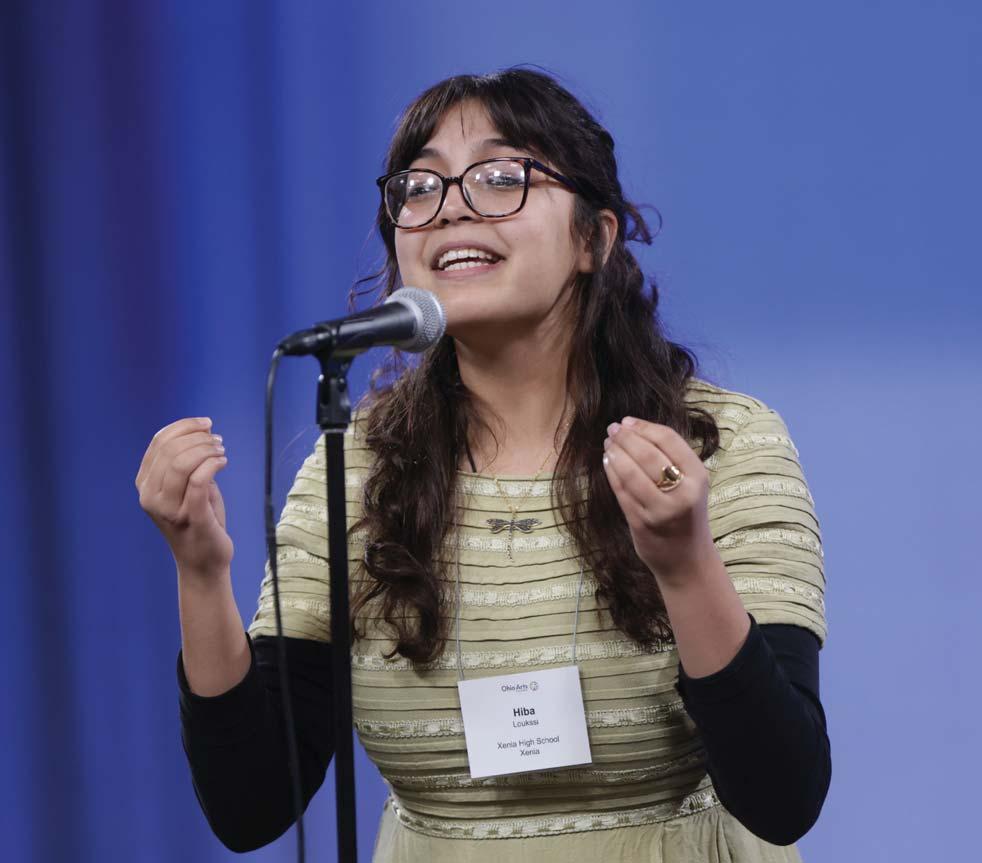
Program Spotlight: POETRY OUT LOUD
Ohio Poetry Out Loud State Champion Hiba Loukssi of Xenia High School (Greene County) reciting a poem at the 2023 state finals. She competed at the national finals in Washington, D.C. Image credit: Terry Gilliam
Investing state and federal dollars, the Ohio Arts Council funds and supports quality arts experiences for all Ohioans to strengthen communities culturally, educationally, and economically.
Learn more about our grant programs and resources, find your next arts experience, or connect: OAC.OHIO.GOV.
ANTONÍN DVOŘÁK
Born: September 8, 1841, Nelahozeves, Bohemia
Died: May 1, 1904, Prague
Symphony No. 8 in G Major, Op. 88
“Gentlemen, in Bohemia the trumpets never call to battle— they always call to the dance!”
(Czech conductor Rafael Kubelik during a rehearsal of the trumpet fanfare opening the last movement of Dvořák’s Eighth Symphony)
Something remarkable happened in the history of music during the 19th century: composers of symphonic music increasingly turned away from happy or cheerful feelings in favor of dramatic or even tragic ones. Lightness was gradually pushed to the periphery of classical music and relegated to new popular genres (for instance, operetta), while large-scale symphonic works increasingly emphasized high passion and brooding melancholy.
There were two significant exceptions to this general trend: Mendelssohn in the first half of the century, and Dvořák in the second half. Both had the unusual gift of writing radiantly happy music in an era where such an approach was often taken for either conservatism or naïveté. It was neither; it was merely a sign of a different artistic personality.
Dvořák’s cheerfully optimistic Eighth opens with an expressive melody in G minor followed by a playful idea in G major first given to the solo flute. A dynamic sonata exposition soon gets underway. The development section works up quite a storm, but it subsides when the playful main theme returns.
The second movement (“Adagio”) begins with a simple melody in darker tonal regions (E-flat major/C minor) that soon reaches a bright C major, where it remains. The main theme spawns various episodes, in turn lyrical and passionate.
The third movement (“Allegretto grazioso”) begins with a languid waltz melody; its second, functioning as a “trio,” sounds more like a Bohemian folk dance. After the return of the waltz, Dvořák surprises us with a fast (“Molto vivace”) coda, consisting of the same notes as the “trio” melody, only in a faster tempo. (In the third movement of his Second Symphony, Brahms had transformed his “trio” theme in the same way.)
A resounding trumpet fanfare announces the fourth movement (“Allegro ma non troppo”), a complex theme-and-variations with a central episode that at fi rst sounds like contrasting material but is in fact derived from the main theme. The ending seems to be a long time coming, with an almost interminable series of closing fi gures. When the last chord fi nally arrives, it still sounds delightfully abrupt due to its unusual metric placement.

Composed: August 26–November 8, 1889
Premiere: February 2, 1890 in Prague, conducted by the composer
Instrumentation: 2 flutes (incl. piccolo), 2 oboes (incl. English horn), 2 clarinets, 2 bassoons, 4 horns, 2 trumpets, 3 trombones, tuba, timpani, strings
CSO notable performances: First: January 1933, Eugene Goossens conducting.
Most Recent: October 2014, Kazem Abdullah conducting. Recording: 1954, Thor Johnson conducting.
Other: Iván Fischer conducting, 1991 and 1993.
Duration: approx. 34 minutes

No. 8.
 Antonín Dvořák
Antonín Dvořák
PROGRAM NOTES
Fanfare Magazine | 57
Dvořák’s summer residence, where he composed the Symphony

2023–24 SEASON
CSYO CONCERT ORCHESTRA
SUN APR 28, 2 pm, Music Hall WALKABOUTS
FELIPE MORALES-TORRES, conductor
Gabriela Lena FRANK Leyendas: An Andean Walkabout (b. 1972)
I. Toyos
IV. Chasqui
VI. Coqueteos
Aaron COPLAND An Outdoor Overture (1900–1990)
Michael MARKOWSKI City Trees (b. 1986)
Ferde GROFÉ Grand Canyon Suite (1892–1972)
Sunrise Sunset
The Painted Desert Cloudburst On the Trail
CSYO PHILHARMONIC
SUN APR 28, 7 pm, Music Hall SPARTACUS
SAMUEL LEE, conductor VIVIAN CHANG, violin
Aram KHACHATURIAN Spartacus Suite No. 2 (1903–1978)
Adagio of Spartacus and Phrygia
Entrance of Merchants, Dance of a Roman Courtesan, General Dance Entrance of Spartacus, Quarrel, Treachery of Harmodius Dance of the Pirates
Pablo SARASATE Carmen Fantasy (1844–1908)
INTERMISSION
Igor STRAVINSKY The Firebird Suite (1882–1971)
The Charles H. Dater Foundation
The Unnewehr Foundation For program notes, please visit our digital program by texting PROGRAM to 513.845.3024.
Introduction— Infernal Dance of King Katschei Variations of the Firebird Berceuse— Round of the Finale Princesses Khorovod Support provided by The Charles H. Dater Foundation and The Unnewehr Foundation
The Cincinnati Symphony Youth Orchestras is a program of the Cincinnati Symphony Orchestra and receives generous support in the form of rehearsal space from the University of Cincinnati College-Conservatory of Music and Walnut Hills High School.

58 | 2023–24 SEASON
CSYO CONCERT ORCHESTRA ROSTER 2023–24
FIRST VIOLIN
Tabitha Sabitelli, co-Concertmaster
Julia Lancman, co-Concertmaster
Grace Barnett, Assistant Principal
Carmen DeAtley-Rosales+
Lara Goodall
Allyson Kim
Joshua Koo
Cecilia Lehmann
Julia Li
Sarah Perpignan
Jubilee Shang
Alex Tran
Arjun Verma
Alexander Wang
Kenneth Wu
Raina Yang
Elizabeth Yeoh
Irene Zhang
SECOND VIOLIN
Clara Schmid, Principal
Will Oertel, Assistant Principal
Thanh-Tu Buchholz+
Youngwoo Choi
Levin Hobson
Nathan Lee
Jerry Li
Brianna Luo
Elaine Peng
Rain Qin
Sarang Srikanth
Mia Wang
Kevin Wen
Iris Xu
Joshua Yamaguchi
Clairette Yang
Angela Zhang
Jenna Zhang
VIOLA
Lainie Stautberg, Principal
Kasinda Willingham, Assistant Principal
Ethan Goehring+
Amber Huff
Adah Muck
Isabella Wang
Alina Zhang
CELLO
Sonya Moomaw, Principal
William Yeoh, Assistant Principal
Andrew Chung+
Sieun Ghim
Kevin Kim
Nathan Lehmann
Reign Matu
Vivian Niu
John Opalinski
Anish Patil
Kallea Willingham
Brandon Yang
BASS
Loki Wirman, Principal
Evan Butler+
Matteo Meli
FLUTE
Mona Allen
Francesca Harper3
Sam Waspe1
Sammi Wong2
OBOE
Sophia Cheng3
August Hagen
Simon Huth1,2
ENGLISH HORN
Simon Huth3
CLARINET
Christopher Larsen1,3
Jonathan Niese
Evelyn Shin
Liheng Wang
Katherine Wen2
BASS CLARINET
Evelyn Shin3
BASSOON
Isabella Loberg1
Zachary Pinnick2
Marian Rose3
HORN
Alisha Ankola1
Charles Healy3
Meghan McGuire2
Eden Proctor
Madelyn Ryan
Kristen Schutte
CSYO PHILHARMONIC ROSTER 2023–24
FIRST VIOLIN
Christy Kim, Concertmaster
Vivian Chang, Assistant Concertmaster
Hollis Chan+
Angelina Chen
Andrew Cheng
Anna Christos
Stephen Dorsey
Marley Feng
Julia Li
Paul Ku
Edward Li
Mara Seppala
Ian Shang
Isabelle Tardivon
Claire Wolford
Jillian Wu
Emily Zhao
SECOND VIOLIN
Madeline Dugan, Principal
Erica Nam, Assistant Principal
Julie Anderson+
Evelyn Gao
Yuhan Gu
Sophia Hamel
Hyori Han
Annie Li
Norika Oya
Santhosh Rajan
Angela Tang
Kyle Wang
Ethan Yao
Yeming Yu
Alisha Zhao
TRUMPET
Hunter Chermerly2,3
Wesley Dentinger
Samuel Goetz1,3
TROMBONE
Tvasta Gajjar1
Colin Van Niman2
Conner Perkins3
TUBA
Seth Dossa
Owen Kearney
HARP
Abel Mooney-Bullock
PIANO & CELESTE
Oliver Szabo
PERCUSSION
Adolphus McCullom II
John Troyer
+Begins the alphabetical listing of players who participate in a system of rotated seating within a string section.
All wind players are considered principals and rotate between pieces.
1 Copland
2 Markowski
3 Grofé
VIOLA
Grace Yu, Principal
Benedict Cecilio, Assistant Principal
James Bingcang+
Cuong Diep
Maeve Henderson
Noah Huber
Seth Israel
Christy Kim
Emma Zhao
Julia Zhu
CELLO
Paul Orth, Principal
Autumn Rinaldi, Assistant Principal
Lorelai Gartside+
Jayden Lu
Krish Subramanian
Shin-Yi Wang
Kate Wells
Howard Weng
Jihye Woo
BASS
Aaron Scott, Principal
Josiah Eriksen
Noah Hinton
FLUTE
Grace Kim1,2
Aperna Nambirajan3
Riya Tummala
Lance Zhang
Mingjia Zhang
PICCOLO
Riya Tummala
OBOE
Arjuna Lee
Joseph Mitchell1,2
Jill Peterson3
IsaacScott
ENGLISH HORN
Isaac Scott
CLARINET
Morgan Cloud3
Matthew Drasnin1,2
Hannah Huh
Jerry Xu
BASSOON
Lincoln Gully3
Emma Laude1,2
Gunnar Pellissier
HORN
Lucas Elmore
Ahan Prasad
Jordan Reid
Alex Riley1,2
Lily Wheatley3
TRUMPET
Katie Koziel3
Thomas Stricker1,2
Trent Stricker
TROMBONE
Zachary Bowden
Karna Gajjar1,2,3
Benjamin Kreitemeyer
TUBA
Gino Calipo
Matthew Lyons
HARP
Karma Fecher
Veronika Stanicha
PERCUSSION
Knox Dowell
Jonathan Kaseff
Justin Melvin
Benjamin Schuler
+Begins the alphabetical listing of players who participate in a system of rotated seating within a string section.
All wind players are considered principals and rotate between pieces.
1 Stravinsky
2 Khachaturian
3 Sarasate
The CSYO CCM Conducting Fellow for 2023–24 is Pablo Martinez Pegalajar
Fanfare Magazine | 59
BEETHOVEN 7 & DESSNER PREMIERES | 2023–24 SEASON
FRI MAY 3, 11 am SAT MAY 4, 7:30 pm Music Hall

LOUIS LANGRÉE, conductor
ALICE SARA OTT, piano
Bryce DESSNER Mari (b. 1976)
Bryce DESSNER Piano Concerto CSO CO-COMMISSION, US PREMIERE
How to Dance
How to Breathe
How to Feel
INTERMISSION
Ludwig van Symphony No. 7 in A Major, Op. 92
BEETHOVEN Poco sostenuto—Vivace (1770–1827)
Allegretto
Presto
Allegro con brio
These performances are approximately 125 minutes long, including intermission.
The CSO is grateful to CSO Season Sponsors Fort Washington Investment Advisors, Inc. and Western & Southern Financial Group
The Cincinnati Symphony Orchestra co-commissioned, U.S. premiere of Piano Concerto by Bryce Dessner is made possible by a generous gift from Kari and Jon Ullman
This concert is lovingly donated to the memory of Laura Gamble Thomson from the Thomson Family Foundation
The Cincinnati Symphony Orchestra is grateful for the support of the Louise Dieterle Nippert Musical Arts Fund of the Greenacres Foundation and the Nina Browne Parker Trust, and for the thousands of people who give generously to the ArtsWave Community Campaign, the region’s primary source for arts funding. This project was supported in part by the Ohio Arts Council, which receives support from the State of Ohio and the National Endowment for the Arts
Pre-Concert Talks are made possible by an endowed gift from Melody Sawyer Richardson
WGUC is the Media Partner for these concerts.
The Cincinnati Symphony Orchestra in-orchestra Steinway piano is made possible in part by the Jacob G. Schmidlapp Trust
Listen to this program on 90.9 WGUC during the 2025 radio season.

60 | 2023–24 SEASON
Thomson Family Foundation
BRYCE DESSNER
Born: 1976, Cincinnati, Ohio
Mari
Bryce Dessner, a vital and rare force in new music, has won Grammy Awards as a classical composer and with the band The National, of which he is founding member, guitarist, arranger and co-principal songwriter. He is regularly commissioned to write for the world’s leading ensembles and is a high-profile presence in film score composition, with credits including The Revenant, for which he was Grammy- and Golden Globenominated, Fernando Meirelles’ The Two Popes, Mike Mills’ C’mon C’mon and Bardo by Alejandro González Iñárritu.
Dessner collaborates with some of today’s most creative and respected artists, including Philip Glass, Katia and Marielle Labèque, Paul Simon, Alejandro González Iñárritu, Sufjan Stevens, Fernando Meirelles, Thom Yorke, Bon Iver, Nico Muhly and Steve Reich, who named Dessner “a major voice of his generation.” Dessner’s orchestrations can be heard on the latest albums of Paul Simon, Bon Iver and Taylor Swift.
He has had works commissioned and premiered by today’s leading conductors, including Esa-Pekka Salonen, Gustavo Dudamel, Semyon Bychkov and Santtu-Matias Rouvali.
Dessner’s major works include Concerto for Two Pianos, premiered by Katia & Marielle Labèque and the London Philharmonic Orchestra; Violin Concerto, premiered and performed internationally by Pekka Kuusisto; Trombone Concerto for Jörgen van Rijen and commissioned by the Dallas Symphony and l’Orchestre National d’Île de France; Voy a dormir for mezzo-soprano Kelley O’Connor and Orchestra of Saint Luke’s and the Los Angeles Chamber Orchestra; Skrik Trio for Steve Reich and Carnegie Hall; the ballet No Tomorrow co-written with Ragnar Kjartansson; Wires for Ensemble intercontemporain; The Forest for large cello ensemble, Gautier Capuçon and Fondation Louis Vuitton; and Triptych(Eyes of One on Another), a major theatre piece integrating the photographs of Robert Mapplethorpe and premiered by the Los Angeles Philharmonic. Dessner also scored the music—involving full orchestra and a 200-member choir—for the Louis Vuitton show at the Louvre in Paris as part of Paris Fashion Week 2020.
Also active as a curator, Dessner is regularly requested to program festivals and residencies around the world. He co-founded and curates the festivals MusicNOW in Cincinnati, HAVEN in Copenhagen, Sounds from a Safe Harbour, and PEOPLE.
Dessner has written the following about Mari, which was commissioned and performed by Tonhalle-Orchester Zürich, Leipzig Gewandhaus Orchester, Czech Philharmonic, Oslo Philharmonic and the BBC Symphony Orchestra:
During the pandemic of 2019–2021, with most of the world shut down and concerts cancelled, I thought a lot about the impermanence of so many things that we imagine to be eternal. An orchestra can sometimes seem like the most lasting form of performance: every major city has an orchestra and the masterpieces they perform seem like eternal pillars of our culture. But what if those orchestras never played again? What if these great works of art become but mere echoes, gradually fading in our memory? These are the thoughts I had during this year when the orchestras fell silent and the musicians and audiences stayed home. At the outer reaches of our memory would the sounds of those works combine into a kind of woven tapestry of fragments and recollections? Could it all slow down into a beautiful

Composed: 2020
Premiere: February 3, 2021 at the Rudolfinum, Prague, Czech Republic by the Czech Philharmonic, Semyon Bychkov conducting
Instrumentation: 2 flutes, piccolo, 2 oboes, English horn, 2 clarinets, bass clarinet, 2 bassoons, contrabassoon, 4 horns, 3 trumpets, 3 trombones, tuba, timpani, bass drum, cowbells, crotale, glockenspiel, light snare, low bells, marimba, snare drum, tam-tam, tom-tom, triangle, 2 vibraphones, xylophone, 2 harps, celeste, strings
CSO notable performances: These are the first CSO performances of Mari
Duration: approx. 18 minutes
MAY 3–4 PROGRAM NOTES
Bryce Dessner
Fanfare Magazine | 61
Dessner Piano Concerto
Composed: 2023, for Alice Sara Ott; cocommissioned by TonhalleGesellschaft Zürich AG, Orchestre Philharmonique de Radio France, Southbank Centre and Philharmonia Orchestra, Cincinnati Symphony Orchestra, Deutsches Symphonie Orchester Berlin, Philzuid Netherlands, Bozar, Brussels Philharmonic, Ars Musica and Munich Philharmonic Orchestra.
Premiere: January 18 & 19, 2024, Kent Nagano conducting the TonhalleOrchester Zürich; Alice Sara Ott, piano. These CSO performances are the work’s U.S. premiere.
Instrumentation: solo piano, 2 flutes (incl. piccolo), oboe, English horn, 2 clarinets, bass clarinet, bassoon, 4 horns, trumpet, 3 trombones, tuba, timpani, tom-tom, vibraphone, snare drum, bass drum, marimba, xylophone, gong, crotale, tam-tam, orchestra bells, harp, strings
CSO notable performances: These are the work’s first CSO performances
Duration: approx. 25 minutes
aquatic drone? I thought about how the act of composing, conjuring sounds from one’s mind or imagination, is very similar to this feeling. A kind of reverence for a world of music we have shared, how memories combine into something original, a spark of creativity or imagination or a dialogue with something that came before. Semyon Bychkov, for whom this piece is written and dedicated, lives just minutes from me on the Basque coast of France, but we did not see each other for several months during the pandemic. On many long walks through these beautiful forests and mountains, I imagined him reflecting on those great pieces in his own vast repertoire and how the sounds of the forest and the quiet of the beautiful natural world might intertwine with his own musical memories. My orchestral composition Mari is a reflection on the pastoral, and it weaves together several textures and fragments of material from historic works through a kind of abstraction and altered context to something new, most audibly a melody from the first movement of the New World Symphony by Dvořák and textures from the fourth movement of Mahler’s sublime Symphony No. 3. My work is named after the Basque goddess of the forest, Mari.
As a concert opener, it felt appropriate to let these notes pass through my fingers and open a new doorway through which my own voice could emerge. The music of Dvořák and Mahler feels timeless but also distinctly modern, especially now as we emerge again into a new world and listen for what comes next.
BRYCE DESSNER
Piano Concerto CSO CO-COMMISSION, US PREMIERE
I spent most of 2023 composing my new piano concerto for Alice Sara Ott. The piece is very much inspired by her beautiful playing, and I wanted to write something that would both challenge her and draw out her unique qualities as an artist. I am truly grateful to her for working so closely with me on the concerto. As I wrote the music I was also thinking of the sound of the Tonhalle-Orchester Zürich and the other wonderful orchestras who have commissioned the piece.
I composed and dedicated this work to my sister, Jessica Reese Dessner. My sister, who is an exceptional artist, has been my greatest inspiration since I was very young, and she has been a huge artistic influence on me and my brother, Aaron. For several years, she has been courageously battling cancer and has continued to inspire me as she confronts this health crisis with courage and grace. As a kid, I learned so much about art and music from her, and we have collaborated on many projects together over the years. Each movement of my piano concerto takes direct inspiration from my sister, her life and her artistic practice.
The three movements of the concerto each had a working title during the months I was composing, which reflect specific sources of inspiration I learned from my sister. The first movement is called HOW TO DANCE. So many of my early memories of orchestral music are from watching my sister dance in the Cincinnati Ballet as a child. Much of the music that I love was originally written to be danced to (Stravinsky, Tchaikovsky, Cage, Reich). Later, through her I discovered contemporary music through the vibrant dance scene of New York City, where I saw works by Merce Cunningham, William Forsythe, Pina Bausch and Anne Teresa de Keersmaeker. My sister, who had a long career as a choreographer and modern dancer, and I created several works together in the late 90s and early 2000s that would be fundamental to my development as a composer, and I believe that all of my written music is influenced by her choreographic sense.
PROGRAM NOTES
62 | 2023–24 SEASON
The fluid motion and physicality of dance influences much of my music, and this first movement has a baroque dance feel throughout. The bass line that is the central melody of the first movement turns around like a baroque continuo, and the ostinato patterns in the right hand are light and floating, tracing the arc of a dancer’s motion.
The second movement is titled HOW TO BREATHE and it has a gentle quality and stillness in the music. In the relentless rush of life and career, my sister has always encouraged me to find calm and to breathe, and to take things slowly and re-connect to the fundamental beauty of making art. This music comes from a natural place, and gives a sensation of emerging from the sea or the forest. The notes are spare and then layered and fast, but always with a sense of breath. The orchestra provides various horizons, brass giving way to the winds and strings shifting perspectives. Moments of dissonance or interruption create a counterpoint to the soloist.
The third movement and finale, which I have called HOW TO FEEL, is the most varied of the three and also the most virtuosic. It returns to the dance-like motion of the first movement, but with more intensity. The material shifts between lyrical slower moments and then the intense joyful patterns of the faster sections. The music, as with the other movements, is deeply inspired by my sister, and the title says it all.
—Bryce Dessner
LUDWIG van BEETHOVEN
Born: December 16, 1770, Bonn, Germany
Died: March 26, 1827, Vienna, Austria
Symphony No. 7 in A Major, Op. 92
In the autumn of 1813, Johann Nepomuk Mälzel, the inventor of the metronome, approached Beethoven with the proposal that the two organize a concert to benefit the soldiers wounded at the recent Battle of Hanau—with, perhaps, two or three repetitions of the concert to benefit themselves. Beethoven was eager to have his as-yet-unheard A Major Symphony of the preceding year performed, and thought the financial reward worth the trouble, so he agreed. The concert consisted of this “Entirely New Symphony” by Beethoven, marches by Dussek and Pleyel performed on a “Mechanical Trumpeter” fabricated by Mälzel, and an orchestral arrangement of Wellington’s Victory, a piece Beethoven had concocted the previous summer for yet another of Mälzel’s musical machines, the clangorous “Panharmonicon.” The evening was such a success that Beethoven’s first biographer, Anton Schindler, reported, “All persons, however they had previously dissented from his music, now agreed to award him his laurels.”
The Seventh Symphony is a magnificent creation in which Beethoven displayed several technical innovations that were to have a profound influence on the music of the 19th century: he expanded the scope of symphonic structure through the use of more distant tonal areas, he brought an unprecedented richness and range to the orchestral palette, and he gave a new awareness of rhythm as the vitalizing force in music. It is the last of these characteristics that most immediately affects the listener, and to which commentators have consistently turned to explain the vibrant power of the work—Richard Wagner called the Seventh Symphony “the apotheosis of the Dance in its highest aspect...the loftiest deed of bodily motion incorporated in an ideal world of tone.”
A slow introduction, almost a movement in itself, opens the symphony. This initial section employs two themes: the first, majestic and unadorned, is passed down through the winds while being punctuated by long, rising scales in the strings; the second is a graceful melody for oboe. The

Composed: 1811–12
Premiere: December 8, 1813 in Vienna, under the composer’s direction
Instrumentation: 2 flutes, 2 oboes, 2 clarinets, 2 bassoons, 2 horns, 2 trumpets, timpani, strings
CSO notable First:
December 1898, Frank Van der Stucken conducting.
Most Recent: May 2018, Louis Langrée conducting.
Duration: approx. 36 minutes
PROGRAM NOTES
Fanfare Magazine | 63
Ludwig van Beethoven






STRIVE FOR EXCELLENCE
For over 120 years, Willis Music and Cincinnati Symphony Orchestra Have been serving the greater Cincinnati area with music, culture, and music education. STEINWAY.CINCINNATI.COM

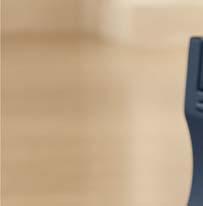
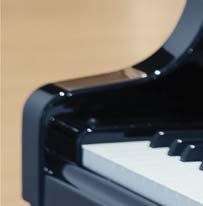
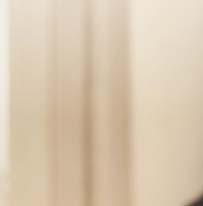





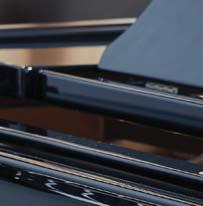
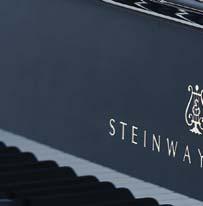





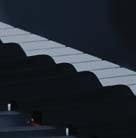


by buying yourself a new piano.*
Donate to the CSO
Willis Music Kenwood Galleria 8118 Montgomery Road Cincinnati, Oh 45236 (859) 396-4485 pianos@willismusic.com
will give a donation to the Cincinnati Symphony
for
piano that a Cincinnati Symphony Orchestra patron purchases.
*Willis Music
Orchestra
every
transition to the main part of the first movement is accomplished by the superbly controlled reiteration of a single pitch. This device both connects the introduction with the exposition and also establishes the dactylic rhythm that dominates the movement.
The Allegretto scored such a success at its premiere that it was immediately encored, a phenomenon virtually unprecedented for a slow movement. In form, the movement is a series of variations on the heartbeat rhythm of its opening measures. In spirit, however, it is more closely allied to the austere chaconne of the Baroque era than to the light, figural variations of Classicism.
The third movement, a study in contrasts of sonority and dynamics, is built on the formal model of the scherzo, but expanded to include a repetition of the horn-dominated Trio (Scherzo–Trio–Scherzo–Trio–Scherzo).
In the sonata-form finale, Beethoven not only produced music of virtually unmatched rhythmic energy (“a triumph of Bacchic fury,” in the words of Sir Donald Tovey), but did it in such a manner as to exceed the climaxes of the earlier movements and make it the goal toward which they had all been aimed. So intoxicating is this music that some of Beethoven’s contemporaries were sure he had composed it in a drunken frenzy. An encounter with the Seventh Symphony is a heady experience. Klaus G. Roy, the former program annotator for The Cleveland Orchestra, wrote, “Many a listener has come away from a hearing of this symphony in a state of being punch-drunk. Yet it is an intoxication without a hangover, a dopelike exhilaration without decadence.” To which the composer’s own words may be added: “I am Bacchus incarnate,” boasted Beethoven, “appointed to give humanity wine to drown its sorrow.... He who divines the secret of my music is delivered from the misery that haunts the world.”
—Dr. Richard E. Rodda

For more information about this program, please text PROGRAM to 513.845.3024*.
*By texting to this number, you may receive messages that pertain to the organization and its performances; msg & data rates may apply. Reply HELP to help, STOP to cancel.







PROGRAM NOTES CINCINNATI OPERA at MUSIC HALL NEW PRODUCTION! Don Giovanni June 13 & 15 La Traviata June 27, 28 & 30 WORLD STAGE PREMIERE! Paul McCartney’s Liverpool Oratorio July 18, 20, 21 & 27 Season Funders: Patricia A Corbett Estate and Trust Harry T. Wilks Family Foundation Paul McCartney ’s Liverpool Oratorio Lead Sponsor: SUMMER FESTIVAL 2024 cincinnatiopera.org All productions feature the Cincinnati Symphony Orchestra.
Fanfare Magazine | 65
LOUIS’ GRAND FINALE | 2023–24 SEASON
FRI MAY 10, 7:30 pm SAT MAY 11, 7:30 pm SUN MAY 12, 2 pm Music Hall

LOUIS LANGRÉE, conductor LATONIA MOORE, soprano
Ludwig van BEETHOVEN Leonore Overture No. 2 in C Major, Op. 72a (1770–1827)
Anthony DAVIS Broken in Parts CSO COMMISSION, WORLD PREMIERE (b. 1951)
I. Words by Quincy Troupe II. III.
IV.
INTERMISSION
Paul DUKAS
The Sorcerer’s Apprentice (1865–1935)
Maurice RAVEL Daphnis et Chloé Suite No. 2 (1875–1937) Daybreak Pantomime General Dance
These performances are approximately 110 minutes long, including intermission.
The CSO is grateful to CSO Season Sponsors Fort Washington Investment Advisors, Inc. and Western & Southern Financial Group, Presenting Sponsor
HORAN Wealth, Encore Sponsor Messer Construction and Show Sponsor
Thompson Hine
The Cincinnati Symphony Orchestra world premiere commission, Broken in Parts by Anthony Davis, is made possible by a generous gift from Ann and Harry Santen

The Cincinnati Symphony Orchestra is grateful for the support of the Louise Dieterle Nippert Musical Arts Fund of the Greenacres Foundation and the Nina Browne Parker Trust, and for the thousands of people who give generously to the ArtsWave Community Campaign, the region’s primary source for arts funding. This project was supported in part by the Ohio Arts Council, which receives support from the State of Ohio and the National Endowment for the Arts
Pre-Concert Talks are made possible by an endowed gift from Melody Sawyer Richardson
WGUC is the Media Partner for these concerts.
The Cincinnati Symphony Orchestra in-orchestra Steinway piano is made possible in part by the Jacob G. Schmidlapp Trust
Listen to this program on 90.9 WGUC June 9, 2024 at 8 pm, followed by 30 days of streaming at cincinnatisymphony.org/replay.

66 | 2023–24 SEASON
LUDWIG van BEETHOVEN
Born: December 16, 1770, Bonn, Germany
Died: March 26, 1827, Vienna, Austria
Leonore Overture No. 2 in C Major, Op. 72a
The decade (1804–14) that Beethoven devoted to his only opera, Fidelio, was an unprecedented amount of time to spend perfecting such a work during the early 19th century. Given the same 10 years, Rossini dispensed 31 (!) operas between 1810 and 1820, and Donizetti cranked out 35 (!!) specimens of the genre from 1827 to 1837. Even Mozart launched seven operas during his decade in Vienna. For Beethoven, however, Fidelio was more than just a mere theatrical diversion—it was his philosophy set to music. This story of the triumph of justice over tyranny, of love over inhumanity was a document of his faith. To present such grandiose beliefs in a work that would not fully serve them was unthinkable, and so Beethoven hammered and rewrote and changed until he was satisfied.
The most visible remnants of Beethoven’s extensive revisions are the quartet of overtures he composed for Fidelio. The first version of the opera, written between January 1804 and early autumn 1805, was initially titled Leonore after the heroine, who courageously rescues her husband from his wrongful incarceration. For that production, Beethoven wrote the Overture in C Major now known as the Leonore No. 1, incorporating themes from the opera. The composer’s friend and early biographer Anton Schindler recorded that Beethoven rejected this first attempt after hearing it privately performed at Prince Lichnowsky’s palace before the premiere. (Another theory, supported by recent detailed examination of the paper on which the sketches for the piece were made, holds that this work was written in 1806–07 for a projected performance of the opera in Prague that never took place, thus making Leonore No. 1 the third of the Fidelio overtures.) He composed a second C major overture, Leonore No. 2, and this piece was used at the first performance, on November 20, 1805. (The management of Vienna’s Theatre an der Wien, site of the premiere, insisted on changing the opera’s name from Leonore to Fidelio to avoid confusion with Ferdinando Paër’s Leonore.) The opera foundered. Not only was the audience (largely populated by French officers of Napoleon’s army, which had invaded Vienna exactly one week earlier) unsympathetic, but there were also problems in Fidelio’s dramatic structure. Beethoven was encouraged by his aristocratic supporters to rework the opera and present it again. That second version, for which the magnificent Leonore OvertureNo. 3 was written, was presented in Vienna on March 29, 1806, but met with only slightly more acclaim than its forerunner.
In 1814, some members of the Court Theater approached Beethoven, by then Europe’s most famous composer, about reviving Fidelio. The idealistic subject of the opera had never been far from his thoughts, and he agreed to the project. The libretto was revised yet again, and Beethoven rewrote all the numbers in the opera and changed their order to enhance the work’s dramatic impact. The new Fidelio Overture, the fourth he composed for his opera, was among the revisions.
Although they are similar in scale, thematic material, instrumentation and expressive intent, the Leonore Overture No. 2 has long been overshadowed by the Leonore No. 3, one of Beethoven’s best-known and most powerful utterances. Both distill the essential dramatic progression of the opera into purely musical terms: the triumph of good over evil; the movement from darkness to light, from subjugation to freedom. Both use Florestan’s Act II aria as the material for a slow introduction, and both create much of their musical substance from elaborations of the same

Composed: 1805
Premiere: November 20, 1805 in Vienna, conducted by Ignaz von Seyfried under the composer’s supervision
Instrumentation: 2 flutes, 2 oboes, 2 clarinets, 2 bassoons, 4 horns, 2 trumpets, 3 trombones, timpani, strings
CSO notable performances: First: December 1916, Ernst Kunwald conducting. Most Recent: November 2015, Louis Langrée conducting.
Duration: approx. 13 minutes
MAY 10–12 PROGRAM NOTES
Ludwig van Beethoven
Fanfare Magazine | 67

Composed: 2024
Premiere: These performances by the CSO are the work’s world premiere.
Instrumentation: soprano soloist, 2 flutes, oboe, 2 clarinets, bass clarinet, alto saxophone, 2 bassoons, 2 horns, 2 trumpets, trombone, bass trombone, timpani, drum set, marimba, vibraphone, xylophone, harp, strings
Duration: approx. 25 minutes
arch-shaped main theme. Both preview the joyous climax of the opera with the trumpet call that signals the overthrow of evil and a jubilant coda. They differ, however, in the proportions of their structures: the Leonore No. 2 has a longer introduction and plunges directly into the coda after its trumpet call rather than recapitulating its themes to create a full sonata form, as does the Leonore No. 3. There is also in the Leonore No. 3 a concentrated, driving, explosive force for which, in retrospect, Beethoven seems to have used the Leonore No. 2 as a testing ground. Even so, the Leonore No. 2 is an important document of Beethoven’s genius, evidence of his endless quest to perfect his art and a stirring musical essay in its own right.
—Dr. Richard E. Rodda
ANTHONY DAVIS, Words by Quincy Troupe
Born: February 20, 1951, Paterson, New Jersey
Broken in Parts CSO COMMISSION, WORLD PREMIERE
Anthony Davis is recognized internationally not only for his pioneering work in opera but also as a distinguished composer of symphonic, choral and chamber works. He has been on the cutting edge of improvised music and jazz for more than four decades and continues to explore new avenues of expression while retaining a distinctly original voice.
Davis has composed eight operas. X: The Life and Times of Malcolm X, with a libretto by Thulani Davis, was the first of a new American genre: opera on a contemporary political subject. A 1992 recording of the opera (Gramavision) earned a Grammy nomination for “Best Contemporary Classical Composition.” In May 2022, the Detroit Opera debuted a new production that traveled to the Metropolitan Opera in November 2023. Other operas include Under the Double Moon, Tania, Amistad, Wakonda’s Dream, Lilith and Lear on the 2nd Floor, along with The Central Park Five, for which he was awarded the Pulitzer Prize in Music in 2020.
In addition to his work in opera, Davis currently has two music theater works in development: Shimmer, with Sarah Schulman and Michael Korie, based on Schulman’s novel about an aspiring reporter who is lesbian and an aspiring playwright who is Black, trying to get ahead in the McCarthy Era, and Tupelo, based on the life of Elvis Presley, written with Arnold Weinstein.
Anthony Davis has composed numerous works for orchestra and chamber ensemble on commissions from the San Francisco Symphony, Pittsburgh Symphony Orchestra, Carnegie Hall, Brooklyn Philharmonic, Atlanta Symphony Orchestra, St. Luke’s Chamber Ensemble, Kansas City Symphony and the Massachusetts Institute of Technology. He also composed the music for the Broadway production of Tony Kushner’s Angels in America: Millennium Approaches, Part One, which premiered in May 1993, and for Kushner’s companion piece Part Two, Perestroika, which debuted in November 1993.
Davis’ catalogue also includes two choral works, Voyage Through Death to Life Upon These Shores, a harrowing tale about the slave trade and the fateful Middle Passage based on Robert Hayden’s poem “Middle Passage,” and Restless Mourning, an oratorio for mixed chorus and chamber ensemble with live electronics, which sets the poetry of Quincy Troupe and Allan Havis as well as the 102nd Psalm of David in a powerful evocation of the 9/11 tragedy.
PROGRAM NOTES
68 | 2023–24 SEASON
Anthony Davis, ©Michele Zousmer
A 1975 graduate of Yale University, Davis is currently a distinguished professor of music at the University of California, San Diego. In 2008, he received the “Lift Every Voice” Legacy Award from the National Opera Association acknowledging his pioneering work in opera. In 2006, Davis was awarded a fellowship from the John Simon Guggenheim Foundation and has also been honored by the American Academy of Arts and Letters, the New York Foundation of the Arts, the National Endowment of the Arts, the Massachusetts Arts Council, the Carey Trust, Chamber Music America, Meet-the-Composer Wallace Fund, the MAP fund with the Rockefeller Foundation, and OPERA America. He was elected to the American Academy of Arts and Letters in 2020 and has been an artist fellow at the MacDowell Colony, Civitella Ranieri and at the Rockefeller Foundation’s Bellagio Center in Italy.
Anthony Davis’ music is published by Episteme Music and administered worldwide by Schott Music.
Davis has written the following about Broken in Parts, which he composed in collaboration with Quincy Troupe and structured in four untitled movements:
I first got to know Quincy Troupe when we were both colleagues at the University of California, San Diego. He had just completed the autobiography of Miles Davis and he was a charismatic figure in San Diego. We collaborated on a number of projects together, including live performances featuring his poetry with my improvisations and compositions for piano. I still hear his voice, relentless, an avalanche of images and metaphors, barely taking a breath as the power of his language was surreal and dramatic, with a rhythm like Elvin Jones performing with John Coltrane. I set several of his poems to music, including “Bells” and “Sound, Breaking Away,” both for bass-baritone and piano. On the evening after 9/11 my wife and I were invited for dinner at Quincy’s home. He was already feverishly writing an epic poem about the day, titled “9/11: Emergency Calls Coming into Manhattan.” Later that week, Tim Koch from the Carolina Chamber Chorale called me about writing a piece about 9/11. I immediately thought of Quincy, and his poem became the text for the first movement Blue and the third movement Things Will Never, Ever Be the Same. His harrowing and courageous text for the piece allowed me to explore 9/11 from wildly different points of view.
Broken in Parts is our most recent collaboration. The poem addresses the issues of language itself, the breakdown of communication and meaning. How do we reclaim our voice? Can our severed tongue be restored by summoning all our resources from the past, from our history, from the ancient and mystical. The poem presented many musical challenges. The images and metaphors, literally, never stop. There are no periods in the poem, every idea morphs into the next. I always came back to hearing Quincy’s voice, exploring a rhythmic language where the speech rhythms become more Thelonious Monk or Miles Davis with the jagged edge of syncopation and, yet, discovering how lyricism can peak through allowing the voice to soar. I am so excited to work with the wonderful soprano Latonia Moore, who is one of the great singers today. She always brings passion and a searing beauty to everything she does. It is also an honor to work with Louis Langrée again. His performance during the pandemic of my clarinet concerto You Have the Right to Remain Silent with Anthony McGill and Earl Howard was a remarkable ray of light in a dark time.
For more information about this program, please text PROGRAM to 513.845.3024*.
*By texting to this number, you may receive messages that pertain to the organization and its performances; msg & data rates may apply. Reply HELP to help, STOP to cancel.
PROGRAM NOTES
Fanfare Magazine | 69
TEXT: Broken in Parts: A Healing Song for Saxophone & Voice for Oliver Lake & Kwame Ture (Stokely Carmichael) 1941–1998
I. broken in parts, broken in parts, the earth fractured & fissured is broken in parts, voices censored, broken off in space, in their place the silent ooze of breathing, pulsating between worlds between place parts of syntax floating on surfaces of speech like islands floating in the middle of rivers, in the middle of nowhere & everywhere zigzagging omens waving flags of menace like flapping tongues, everything seemingly coming apart in a sea of wreckage, someone is drowning we don’t hear or see, threads suddenly gone, clues, beliefs suddenly torn asunder by sawblading teeth, hemorrhaging a life chewed up between jackhammering jaws, as a razor cuts through a living tongue & it is bleeding speech cannot form itself again around words, when language we once knew but now hear as garbled is broken in parts
II. what to do then, when men and women cannot speak, when meaning is sawed off clean & language becomes a chimney chute through which sound sweeps as ash coating everything with a sooty pallor, before syllables can form in the cave of the spirit that issues words, cadences, that used to roll out like musical notes off the sweetness tongues suddenly cut clean to blooming silence, dumb screams there now, oozing blood, where the silver steel flashed red underneath Halloween street lamps, flies swarming around a gaggle of slit throats & in the middle of it all a chewed up black pencil of a man, who stands holding his tongue between his hands, silence surrounding him like a mourning shawl, the tongue in his hands now was once a saxophone when whole, was a blur of fingers whooshing through golden keys of his voice belling like charlie parker burning riffs quick as michael johnson cruising solo, lickety-split his turbo-driven voice used to turn flips, somersaults, turn around in midair like great Olympic figure skaters, their bodies doing twists, the moment there alive, fused with magic, probed limits of the tongue, unpredictable as mystery, it once moved to recreate itself, again & again through improvisation, sought to push the edge of its creation out beyond boundaries of what anything would allow, the vocabulary flowing back & forth, like a mantra, before silence cut through its song, turned it into ripples on the surface of a river, gone after a rock dropped through its shimmering, wet skin, through a vortex, where the eye now catches a language of shadows, once lengthening, now they are breaking apart in waves of fragmentation
III. but we can speak with our eyes, can fashion them into a tongue, can turn that tongue into a living voice that conjures up song, conjures up spirits, the drumbeat of strong hearts goosing everything along, like a great drummer keeping time, evenly kept, pulsating breath, strong, sluicing through the tempo of the lungs, through death we can travel backward to ancestors through our spirits, through our mind’s juju, we can go down to the station of resurrection, wait for the underground train marked with vévés to arrive there, we can board that train, dream ourselves into magic through imagination, can walk inside history longside power sleeping deep down inside us, now, deeper still, deeper than the limits of fear ever allowed us to travel, because our black cat’s bone knows the mojo spirit is listening, knows the mojo bone can rest in our hands if we dream ourselves deeper, deep enough to dream ourselves into beauty, deeper still, go down deeper, so we can conjure up the power of that black mojo hand, deeper, so we can restore speech to a severed tongue cut off in a storm by buzz saw slivers of glass propelled through the dark, by the awesome power of a tornado’s wind, or cut off by evil, unhuman men, who think love is a gun, a bloody knife, we can conjure up the power of a black mojo hand, can reconnect flesh with flesh, expression, can beat human madness with our own magic, voodoo, can reconnect these islands of words floating through broken sentences, fractured and fissured, broken apart, words floating like drowned faces bloated after a sudden flood brought death,
PROGRAM NOTES
70 | 2023–24 SEASON
we can reconnect these words & fashion a language out of silence and space, a language of fragments that can float in the air like chords, echoing the music of monk’s genius, we can feel it if we listen, can reconnect that pencil-thin black man’s tongue, once a saxophone’s voice, can stitch that voice back together again into song, into music again with a needle stitching love, can weave magic fashioned there out the bone of a mojo-hand, can put it all back together agin if we listen & feel love, sluicing poetry & voodoo out of a mojo hand, within the spirit of healing, magic & mystery, the song becoming beauty, so listen to beauty beating in your own human hearts, listen to the healing powers fashioned from bone of our own mojo hand
IV. & the music is jabber-walking across space & air & comes whispering a whispering comes carrying the burden of silence with it for so very long, beyond this whispering of echoes, is a wish to reconnect language, this tongue broken in parts, broken articulation, beliefs, clues, broken into islands of words, phrases, isolated beyond meaning, now silence breaking into sound that is guttural, blues seeded, inside timbre of the voice rising now to form some kind of language, it is reaching for beauty, trying to unify fragments into complete sentences, though broken apart it is trying to coalesce, come back together again, for love, for beauty, for family, so listen for words that float up from the abyss into recognizable sound that evokes familiar faces, that pulled out of a raging, flooded river, see recognition now in those blinking eyes, magic unfolding in language rising up from there, now guttural but pure, is reborn here as the tongue’s restored, reconnected, speech returned to voice inside the mouth & new words form that roll off the tongue, carry faces carved from history, faces that string themselves together to fashion a memory, a memory that is a necklace of love beads draped around our necks, imagine those faces as metaphors now, seeds for love songs whispering, tonguing now just outside your ear, imagine those words as possible healing powers, a healing love song, whispering now whispering, inside your ear
From the Collection: CHORUSES (1999) published by Coffee House Press. Quincy Troupe’s poem “Broken in Parts” reprinted by permission.
PAUL DUKAS
Born: October 1, 1865, Paris, France
Died: May 18, 1935, Paris, France
The Sorcerer’s Apprentice
Paul Dukas spent his entire life in Paris as a greatly respected teacher and composer. He showed his musical aptitude early, teaching himself to play piano, and entered the Conservatoire in 1882, where he proved to be an excellent student, winning the second Prix de Rome in 1888. Although he had to abandon his formal training for a time to serve in the army, he turned that period to good use by studying many of the classical works of music, the basis upon which he later built his own compositions. (He later edited several volumes of works by Rameau, Beethoven, Couperin and Scarlatti.) After his stint in the military, he completed the overture Polyeucte, his first work to be performed publicly. The Symphony in C Major followed in 1896, and he gained international recognition a year

Composed: 1897
Premiere: May 18, 1897 in Paris, conducted by the composer
Instrumentation: 2 flutes, piccolo, 2 oboes, 2 clarinets, bass clarinet, 3 bassoons, contrabassoon, 4 horns, 4 trumpets, 3 trombones, timpani, bass drum, crash cymbals, glockenspiel, suspended cymbals, triangle, harp, strings
CSO notable performances: First: March 1904, Frank Van der Stucken conducting. Most Recent: (Pops) October 2018, Damon Gupton conducting; (CSO Subscription) February 2007, Tito Muñoz conducting. Recording: (Pops) 1985 Orchestral Spectaculars, Erich Kunzel conducting and (CSO) 1999 Dukas: Sorcerer’s Apprentice, Symphony in C, La Péri, Jesús López Cobos conducting.
Duration: approx. 10 minutes
PROGRAM NOTES
Fanfare Magazine | 71
Paul Dukas
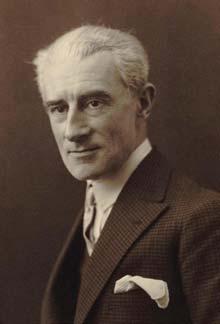
Composed: 1909–12
Premiere: June 8, 1912 in Paris, coducted by Pierre Monteux
Instrumentation: 2 flutes (incl. piccolo), piccolo, alto flute, 2 oboes, English horn, 2 clarinets, E-flat clarinet, bass clarinet, 3 bassoons, contrabassoon, 4 horns, 4 trumpets, 3 trombones, tuba, timpani, bass drum, bells, castanets, crash cymbals, military drum, side drum, snare drum, suspended cymbals, tambour, tambourine, triangle, 2 harps, celeste, strings
CSO notable performances: First: (Tour) March 1906, Toronto, Canada, Fritz Reiner conducting; (CSO Subscription) November 1925, Fritz Reiner conducting. Most Recent: September 2018, Louis Langrée conducting.
Recording: 2004 Ravel: Suite No. 2 from Daphnis & Chloe, Pavane pour une infante défunte, La valse, Ma mère l’Oye, Bolero, Paavo Järvi conducting.
Duration: approx. 18 minutes
later with The Sorcerer’s Apprentice. Dukas held important positions throughout his life as an instructor at the Conservatoire and as a critic, and he was awarded the Legion of Honor in 1906. Stern self-criticism of his compositions led him to destroy all his unpublished manuscripts before his death, however, so his small musical legacy comprises only three overtures, a symphony, an opera (Ariane et Barbe-bleue), a ballet (La Péri), a half-dozen piano works (though one is a monumental, 45-minute sonata), a short Villanelle for horn, and The Sorcerer’s Apprentice
The Sorcerer’s Apprentice is based on Goethe’s 1796 ballad Der Zauberlehrling, which in turn was derived from the dialogues of the 2nd-century Greek satirist Lucian. The tale tells of a naive apprentice to a wizard, who overhears the magic incantation used by his master to animate the household broom into a water-carrier. In the sorcerer’s absence, the neophyte tries the spell on the broom, and—to his delight— it works. The broom marches smartly between well and water basin until the latter is full, then overflowing, then flooding—the apprentice never bothered to learn the magic words to stop his wooden servant! Not knowing what to do, he axes the broom in half, only making matters worse—now there are two water-carriers instead of one. More chopping produces more brooms. Just before the novice drowns in his own mischief, the sorcerer returns and, with a sweep of his hand and a muttered word, quiets the tumult.
Dukas captured perfectly the fantastic spirit of this poem in his colorful tone poem. The quiet, mysterious strains of the beginning depict the wizard and his incantations, while the apprentice scurries about to lively phrases in the woodwinds. When the door slams behind the departing sorcerer (a loud whack on the timpani), the tyro is left in silence. A rumble in the low instruments signals the first stirring of the enchanted broom. The rumble becomes a galumphing accompaniment, over which the bassoons give out the main theme of the work. This melody, combined with a quicker version of the incantation theme and brass fanfares, is used to suggest the aquatic havoc being wrought in the wizard’s absence. At the height of the confusion, the magician bursts through the door (the mysterious music of the opening returns to indicate his presence), and he orders the flood to subside. When peace has been restored, the apprentice receives a swift boxing of the ears to end this jovial musical tale.
—Dr. Richard E. Rodda
MAURICE RAVEL
Born: March 7, 1875, Ciboure, France
Died: December 28, 1937, Paris, France
Daphnis et Chloé Suite No. 2
The Ballet Russe descended on Paris in 1909 with an impact still reverberating through the worlds of art, music and dance. Its brilliant impresario, Sergei Diaghilev, went shopping among the artistic riches of the French capital, and soon had gathered together one of the most glittering arrays of creative talent ever assembled under a single banner: Falla, Picasso, Nijinsky, Fokine, Bakst, Monteux, Stravinsky, Massine, Debussy, Matisse, Prokofiev, Pavlova, Poulenc, Milhaud. Early in 1910, Diaghilev approached Maurice Ravel with a scenario by Fokine for a ballet based on a pastoral romance derived from the writings of the 5th-century Greek sophist Longus. In his 1928 autobiographical sketch, Ravel wrote:
I was commissioned by the director of the Russian Ballet to write Daphnis et Chloé, a choreographic symphony in three movements. My

PROGRAM NOTES
72 | 2023–24 SEASON
Maurice Ravel
aim in writing it was to compose a vast musical fresco, and to be not so much careful about archaic details as loyal to my visionary Greece, which is fairly closely related to the Greece imagined and depicted by Watteau and other French painters at the end of the 18th century.
Daphnis had a lukewarm reception at its premiere at the Théâtre du Châtelet in Paris on June 8, 1912, but Ravel’s score was greeted with enthusiasm and immediately entered the repertory of the world’s orchestras.
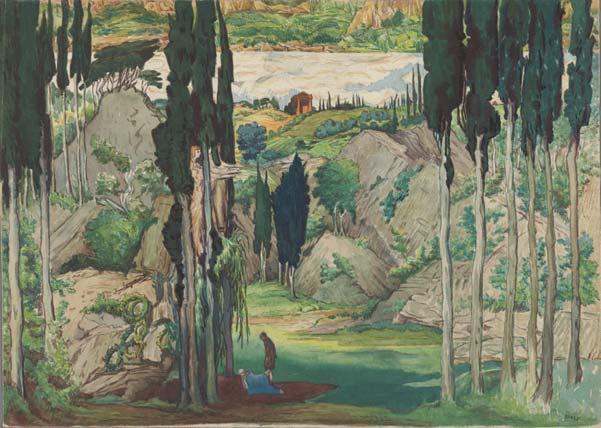
Daphnis et Chloé opens in a meadow bordering a sacred wood on the island of Lesbos. Greek youths and maidens enter with wreaths and flowers to place at the altar of the Nymphs as the shepherd Daphnis descends from the hills. His lover, Chloé, crosses the meadow to meet him. The girls are attracted to the handsome Daphnis and dance seductively around him, inciting Chloé’s jealousy. Chloé, in her turn, becomes the object of the men’s advances, particularly a crude one from the clownish goatherd Dorcon. Daphnis’ jealousy is now aroused and he challenges Dorcon to a dancing contest, the prize to be a kiss from Chloé. Dorcon performs a grotesque dance and he is jeered by the onlookers. Daphnis easily wins Chloé’s kiss with his graceful performance. The crowd leads Chloé away, leaving Daphnis alone to lapse into languid ecstasy. Daphnis’ attention is suddenly drawn to the clanging of arms and shouts of alarm from the woods. Pirates have invaded and set upon the Greeks. Daphnis rushes off to protect Chloé, but she has been captured.
In Scene Two, set on a jagged seacoast, the brigands enter their hideaway laden with booty. Chloé, hands bound, is led in. She pleads for her release. When the chief refuses, the sky grows dark and the god Pan, arm extended threateningly, appears upon the nearby mountains. The frightened pirates flee, leaving Chloé alone.
Scene Three is again set amid the hills and meadows of the ballet’s first scene. It is sunrise. Herdsmen arrive and tell Daphnis that Chloé has been rescued. She appears and throws herself into Daphnis’ arms. The old shepherd Lammon explains to them that Pan has saved Chloé in remembrance of his love for the nymph Syrinx. In gratitude, Daphnis and Chloé re-enact the ancient tale, in which Syrinx is transformed into a reed by her sisters to save her from the lustful pursuit of Pan, who then made a flute from that selfsame reed—the pipes of Pan—upon which to play away his longing. Daphnis and Chloé embrace and join the joyous dance that ends the ballet.
From the complete ballet, Ravel extracted two suites comprising some two-thirds of the work’s length. The Second Suite parallels the action of the ballet’s final Scene: Daybreak, Pantomime of the adventure of Pan and Syrinx, and the concluding General Dance.
—Dr. Richard E. Rodda

PROGRAM NOTES
Set design for Act I from Daphnis and Chloé, 1912. Harvard Theatre Collection, Houghton Library, Harvard University.
Fanfare Magazine | 73

INSTITUTIONAL SUPPORT
Local and national foundations, businesses, and government agencies are integral to the Orchestra’s vibrant performances, community engagement work, and education activities. We are proud to partner with the following funders.
ANNUAL SUPPORT
SEASON AND SERIES SPONSORS


IDEA Series
PLATINUM BATON CIRCLE ($50,000+)
ArtsWave
Charles H. Dater Foundation
The Thomas J. Emery Memorial Trust
The Fifth Third Foundation
The Carol Ann and Ralph V. Haile, Jr. Foundation
David C. Herriman Fund of Greater Cincinnati Foundation
H.B., E.W., F.R. Luther Charitable Foundation
The Mellon Foundation
Dr. John & Louise Mulford Fund for the CSO
National Endowment for the Arts
Louise Dieterle Nippert Musical Arts Fund of the Greenacres Foundation
Ohio Arts Council
PNC Bank
Margaret McWilliams Rentschler Fund of Greater Cincinnati Foundation
Nina Browne Parker Trust
Harold C. Schott Foundation / Francie and Tom Hiltz, Trustees
The Unnewehr Foundation
The Louise Taft Semple Foundation
Western & Southern Financial Group
Anonymous
GOLD BATON CIRCLE ($25,000–$49,999)
The Cincinnati Symphony Club
Louise H. and David S. Ingalls Foundation Inc.
The Jewish Foundation of Cincinnati
George and Margaret McLane Foundation
Oliver Family Foundation
The Ladislas & Vilma Segoe Family Foundation
The Lazarow Schwartz Family Fund
United Dairy Farmers & Homemade Brand Ice Cream
The Wohlgemuth Herschede Foundation
SILVER BATON CIRCLE ($15,000–$24,999)
HORAN Wealth
Johnson Investment Counsel
Peter E. Landgren and Judith Schonbach Landgren
League of American Orchestras
The Procter & Gamble Company
The Rendigs Foundation
Scott and Charla Weiss
Wodecroft Foundation
2023 ARTSWAVE PARTNERS
CONDUCTOR’S CIRCLE ($10,000–$14,999)
Bartlett Wealth Management
Chemed Corporation
Cincinnati Children’s Hospital Medical Center
The Crosset Family Fund of Greater Cincinnati Foundation
CVG Airport Authority
Entrepreneurs’ Organization
Kelly Dehan and Rick Staudigel
Graeter’s Ice Cream
Messer Construction Co.
The Daniel & Susan Pfau Foundation
Taft Stettinius & Hollister LLP
CONCERTMASTER’S CIRCLE ($5,000–$9,999)
Interact for Health
JRH Consultants
Keating Muething & Klekamp PLL
The Willard & Jean Mulford Charitable Fund
Pyro-Technical Investigations, Inc.
Queen City (OH) Chapter of The Links, Incorporated
Thompson Hine LLP
YOT Full Circle Foundation
ARTIST’S CIRCLE ($2,500–$4,999)
D’Addario Foundation
d.e. Foxx and Associates, Inc.
Richard Freshwater
L. Timothy Giglio
Charles Scott Riley III Foundation
Visit Cincy
Kyle Wynk-Sivashankar and Siva Shankar
BUSINESS & FOUNDATION PARTNERS (up to $2,499)
African American Chamber of Commerce
Albert B. Cord Charitable Foundation
Clark Schaefer Hackett
Earthward Bound Foundation
Hixson Architecture Engineering Interiors
Journey Steel
Robert A. & Marian K. Kennedy Charitable Trust
The Kroger Co.
PricewaterhouseCoopers LLP
Frances L. P. Ricketts Sullivan Memorial Fund
The Voice of Your Customer
TriHealth
Toi and Jay Wagstaff
Join this distinguished group!
Contact Sean Baker at 513.744.3363 or sbaker@cincinnatisymphony.org to learn how you can become a supporter of the CSO and Pops. This list is updated quarterly.
The Cincinnati Symphony Orchestra and Cincinnati Pops acknowledge the following partner companies, foundations and their employees who generously participate in the Annual ArtsWave Community Campaign at the $100,000+ level.
$2 million+
P&G
$1 million to $1,999,999
Fifth Third Bank and Fifth Third Foundation
$500,000 to $999,999
altafiber
GE Aerospace
$250,000 to 499,999
Cincinnati Children’s Hospital Medical Center
The Cincinnati Insurance Companies
Western & Southern Financial Group

$100,000–$299,999
Carol Ann and Ralph V. Haile, Jr. Foundation
Cincinnati Business Courier
Cincinnati Reds
Duke Energy
The E.W. Scripps Company and Scripps Howard Foundation
The Enquirer | Cincinnati.com
Great American Insurance Group
Greater Cincinnati Foundation
The H.B., E.W. and F.R. Luther Charitable Foundation, Fifth Third Bank, N.A., Trustee
The Kroger Co.
Messer Construction Co.
PNC
U.S. Bank
2023–24 FINANCIAL SUPPORT
Pops Season Lollipops Series CSO Season
74 | 2023–24 SEASON

PERMANENT ENDOWMENTS
Endowment gifts perpetuate your values and create a sustainable future for the Orchestra. We extend our deep gratitude to the donors who have provided permanent endowments in support of our programs that are important to them. For more information about endowment gifts, contact Kate Farinacci, Director of Special Campaigns & Legacy Giving, at 513.744.3202.
ENDOWED CHAIRS
Grace M. Allen Chair
Ellen A. & Richard C. Berghamer Chair
Robert E. & Fay Boeh Chair
The Marc Bohlke Chair given by Katrin & Manfred Bohlke
Trish & Rick Bryan Chair
Otto M. Budig Family Foundation Chair
Mary Alice Heekin Burke Chair
Michael L. Cioffi & Rachael Rowe— the Honorable Nathaniel R. Jones Chief Diversity & Inclusion Officer
Peter G. Courlas–
Nicholas Tsimaras Chair
Ona Hixson Dater Chair
The Anne G. & Robert W. Dorsey Chair+
Jane & David Ellis Chair
Irene & John J. Emery Chair
James M. Ewell Chair
Ashley & Barbara Ford Chair for Assistant Conductor
Ashley & Barbara Ford Chair for Assistant Conductor
Ashley & Barbara Ford Chair for Principal Tuba
Susan S. & William A. Friedlander Chair+
Charles Gausmann Chair
Susanne & Philip O. Geier, Jr. Chair+
Emma Margaret & Irving D. Goldman Chair
Clifford J. Goosmann & Andrea M. Wilson Chair
Charles Frederic Goss Chair
Jean Ten Have Chair
Dorothy & John Hermanies Chair
Lois Klein Jolson Chair
Josephine I. & David J. Joseph, Jr. Chair
Harold B. & Betty Justice Chair
Marvin Kolodzik & Linda S. Gallaher Chair+
Al Levinson Chair
Patricia Gross Linnemann Chair+
Alberta & Dr. Maurice Marsh Chair
Stephen P. McKean Chair
Laura Kimble McLellan Chair
The Henry Meyer Chair
The Louise Dieterle Nippert & Louis Nippert Chairs
Rawson Chair
The Vicky & Rick Reynolds Chair in honor of William A. Friedlander+
Ida Ringling North Chair
Donald & Margaret Robinson Chair
Dianne & J. David Rosenberg Chair+
Ruth F. Rosevear Chair
The Morleen & Jack Rouse Chair+
Emalee Schavel Chair
Karl & Roberta Schlachter Family Chair
Serge Shababian Chair
Melinda & Irwin Simon Chair+
Tom & Dee Stegman Chair+
Mary & Joseph S. Stern, Jr. Chair+
Cynthia & Frank Stewart Chair
The Jackie & Roy Sweeney Family Chair
The Sweeney Family Chair in memory of Donald C. Sweeney
Anna Sinton Taft Chair
Brenda & Ralph Taylor Chair
James P. Thornton Chair
Nicholas Tsimaras–
Peter G. Courlas Chair
Thomas Vanden Eynden Chair
Sallie Robinson Wadsworth & Randolph L. Wadsworth Jr. Chair
Jo Ann & Paul Ward Chair
Matthew & Peg Woodside Chair
Mary M. & Charles F. Yeiser Chair
ENDOWED PERFORMANCES & PROJECTS
Eleanora C. U. Alms Trust, Fifth Third Bank, Trustee
Rosemary and Frank Bloom Endowment Fund*+
Cincinnati Bell Foundation Inc.
Mr. & Mrs. Val Cook
Nancy & Steve Donovan*
Sue and Bill Friedlander Endowment Fund*+
Mrs. Charles Wm Anness*,
Mrs. Frederick D. Haffner, Mrs. Gerald Skidmore and the La Vaughn Scholl Garrison Fund
Fred L. & Katherine H. Groll Fund for Musical Excellence
Fred L. & Katherine H. Groll Fund for Great Artists
Fred L. & Katherine H. Groll Trust Pianist Fund
The Carol Ann and Ralph V. Haile, Jr. Foundation Endowment Fund
Anne Heldman Endowment Fund**
Mr. and Mrs. Lorrence T. Kellar+
Lawrence A. & Anne J. Leser*
Mr. & Mrs. Carl H. Lindner**
Janice W. & Gary R. Lubin Fund for Black Artists
PNC Financial Services Group
The Procter & Gamble Fund
Vicky & Rick Reynolds Fund for Diverse Artists+
Melody Sawyer Richardson*
Rosemary and Mark Schlachter Endowment Fund*+
The Harold C. Schott Foundation, Francie and Tom Hiltz Endowment Fund+
Peggy Selonick Fund for Great Artists
Dee and Tom Stegman Endowment Fund*+
Mr. & Mrs. Joseph S. Stern, Jr. Fund for Great Artists
U. S. Bank Foundation*
Sallie and Randolph Wadsworth Endowment Fund+
Educational Concerts
Rosemary & Frank Bloom *
Cincinnati Financial Corporation & The Cincinnati Insurance Companies
The Margaret Embshoff Educational Fund
Kate Foreman Young Peoples Fund
George & Anne Heldman+
Macy’s Foundation
Vicky & Rick Reynolds*+
William R. Schott Family**
Western-Southern Foundation, Inc.
Anonymous (3)+
GIFT OF MUSIC: January 4–February 20, 2024
OTHER NAMED FUNDS
Ruth Meacham Bell Memorial Fund
Frank & Mary Bergstein Fund for Musical Excellence+
Jean K. Bloch Music Library Fund
Cora Dow Endowment Fund
Corbett Educational Endowment**
Belmon U. Duvall Fund
Ewell Fund for Riverbend Maintenance
Linda & Harry Fath Endowment Fund
Ford Foundation Fund
Natalie Wurlitzer & William Ernest Griess Cello Fund
William Hurford and Lesley Gilbertson Family Fund for Guest Pianists
The Mary Ellyn Hutton Fund for Excellence in Music Education
Josephine I. & David J. Joseph, Jr. Scholarship Fund
Richard & Jean Jubelirer & Family Fund*
The Kosarko Family Innovation Fund
Elma Margaret Lapp Trust
Jésus López-Cobos Fund for Excellence
Mellon Foundation Fund
Nina Browne Parker Trust
Dorothy Robb Perin & Harold F. Poe Trust
Rieveschl Fund
Thomas Schippers Fund
Martha, Max & Alfred M. Stern
Ticket Fund
Mr. & Mrs. John R. Strauss
Student Ticket Fund
Anna Sinton & Charles P. Taft Fund
Lucien Wulsin Fund
Wurlitzer Season Ticket Fund
CSO Pooled Income Fund
CSO Musicians Emergency Fund
*Denotes support for Annual Music Program Fund
**Denotes support for the 2nd Century Campaign
+Denotes support for the Fund for Musical Excellence
The following people provided gifts to the Gift of Music Fund to celebrate an occasion, to mark a life of service to the Orchestra, or to commemorate a special date. Their contributions are added to the Orchestra’s endowment. For more information on how to contribute to this fund, please call 513.744.3271.
In honor of Larry Hamby
Kathryn Sullivan
In honor of
Mr. & Mrs. Robert Van Stone
Mary Moskal
In memory of Anne Heldman
Mr. Thomas Bergman
Jeff & Debbie Dalin
Stewart & Ellen Dunsker
The Greater Cincinnati Foundation
Joseph & Marilyn Hirschhorn
Brian Lofft
Dr. Douglas Magenheim, MD
Mrs. Sherri Tieger
Larry Goetz & Sherrie Rutherford
J. David & Dianne Rosenberg
Moe Rouse
Mrs. Ethel Zemsky
In memory of Lois Jolson
Dr. Richard Jolson
In memory of Betty Schulenberg
Mr. and Mrs. Wesley Rogers
In memory of Marguerite Stowe
John and Jane Mueller
FINANCIAL SUPPORT
Fanfare Magazine | 75
HONOR ROLL OF CONTRIBUTORS
The Cincinnati Symphony Orchestra and Cincinnati Pops are grateful to the following individuals that support our efforts by making a gift to the Orchestra Fund. We extend our heartfelt thanks to each and every one and pay tribute to them here. You can join our family of donors online at cincinnatisymphony.org/donate or by contacting the Philanthropy Department at 513.744.3271.
PLATINUM BATON CIRCLE
Gifts of $50,000 and above
Robert W. Dorsey §
Healey Liddle Family Foundation, Mel & Bruce Healey
George L. and Anne P. Heldman Fund* § Harold C. Schott Foundation, Francie & Tom Hiltz
Florence Koetters
Jo Anne and Joe Orndorff
Marilyn J. and Jack D. Osborn §
In Memory of Laura Gamble Thompson
Vicky and Rick Reynolds
Ann and Harry Santen §
Irwin and Melinda Simon
Tom and Dee Stegman
Jackie and Roy Sweeney Family Fund*
Mr. Randolph L. Wadsworth Jr. §
Scott and Charla Weiss
Anonymous (1)
GOLD BATON CIRCLE
Gifts of $25,000–$49,999
Dr. and Mrs. John and Suzanne Bossert §
Mr. and Mrs. Frederick E. Bryan, III §
Robert and Debra Chavez
Michael L. Cioffi & Rachael Rowe
Sheila and Christopher C. Cole
Dr. and Mrs. Carl G. Fischer
Ashley and Bobbie Ford §
Dr. Lesley Gilbertson and Dr. William Hurford
Mr. and Mrs. Paul Isaacs
Dr. and Mrs. Stephen Joffe
Mrs. Andrea Kaplan
Edyth B. Lindner
Calvin and Patricia Linnemann
Mark and Tia Luegering
Mr. and Mrs. Timothy Maloney
Susan McPartlin & Michael Galbraith
G. Franklin Miller and Carolyn Baker Miller
Dianne and J. David Rosenberg
Moe and Jack Rouse §
Mark S. and Rosemary K. Schlachter §
Mrs. Theodore Striker
Mr. and Mrs. Jonathan Ullman
Nancy C. Wagner and Patricia M. Wagner §
Anonymous (1)
SILVER BATON CIRCLE
Gifts of $15,000–$24,999
Mr. and Mrs. Larry Brueshaber
Mr. Gregory D. Buckley and Ms. Susan Berry-Buckley
Stephen J Daush
Dianne Dunkelman and Clever Crazes for Kids
CCI Design, Molly and Tom Garber
Tom and Jan Hardy §
Mr. and Mrs. Joseph W. Hirschhorn §
Marvin P. Kolodzik and Linda S. Gallaher §
Mrs. Erich Kunzel
Peter E. Landgren and Judith Schonbach Landgren
Alan Margulies and Gale Snoddy
In memory of Bettie Rehfeld
Mr. and Mrs. Robert W. McDonald
Joseph A. and Susan E. Pichler Fund*
In memory of Mary and Joseph S. Stern, Jr
Mrs. Anne Drackett Thomas
Sarah Thorburn
DeeDee and Gary West §
Mrs. James W. Wilson, Jr.
Mr. and Mrs. James M. Zimmerman §
Anonymous (1)
CONDUCTOR’S CIRCLE
Gifts of $10,000–$14,999
Mr. and Mrs. Andrew Akers
Jan and Roger Ames
Joe and Patricia Baker
Michael P Bergan and Tiffany Hanisch
Ms. Melanie M. Chavez
Mrs. Thomas E. Davidson §
Kelly Dehan and Rick Staudigel
Dr. and Mrs. Alberto Espay
Mr. and Mrs. Tom Evans
Mrs. Charles Fleischmann
John B. and Judith O. Hansen
William and Jo Ann Harvey
John and Ramsey Lanni
Whitney and Phillip Long
Holly and Louis Mazzocca
Mr. Bradford Phillips III
Melody Sawyer Richardson §
Bill and Lisa Sampson
Martha and Lee Schimberg
Mr. Lawrence Schumacher
Dr. Jean and Mrs. Anne Steichen
Ralph C. Taylor §
Mr. and Mrs. JD Vance
In Loving Memory of Diane Zent

CONCERTMASTER’S CIRCLE
Gifts of $5,000–$9,999
Dr. Charles Abbottsmith
Mr. Nicholas Apanius
Heather Apple and Mary Kay Koehler
Thomas P. Atkins
Mrs. Thomas B. Avril
Kathleen and Michael Ball
Robert and Janet Banks
Louis D. Bilionis and Ann Hubbard
Robert L. and Debbie Bogenschutz
Thomas A. Braun, III §
The Otto M. Budig Family Foundation
Sally and Rick Coomes
K.M. Davis
Bedouin and Randall Dennison
Dennis W. and Cathy Dern
Laura Doerger-Roberts & Peter Roberts
Mrs. John C. Dupree
Mrs. Diana T. Dwight
Mr. and Mrs. Richard Fencl
Mr. and Mrs. James T. Fitzgerald
Marlena and Walter Frank
Dr. and Mrs. Harry F. Fry
L. Timothy Giglio
Thomas W. Gougeon
Kathy Grote in loving memory of Robert Howes §
Mr. and Mrs. Lawrence Hamby
Ms. Delores Hargrove-Young
Dr. Donald and Laura Harrison
Mr. and Mrs. Brian E. Heekin
Dr. James and Mrs. Susan Herman
Mr. and Mrs. Stephen Hicks
Karlee L. Hilliard §
Mr. and Mrs. Geoffrey Keenan
Mrs. Barbara Kellar in honor of Mr. Lorrence T. Kellar
Holly King
Mr. and Mrs. Richard Kovarsky
Michael and Marilyn Kremzar
Richard and Susan Lauf
Will and Lee Lindner
Adele Lippert
Mrs. Robert Lippert
Elizabeth and Brian Mannion
David L. Martin
Mr. Jonathan Martin
Mandare Foundation
Barbara and Kim McCracken §
Linda and James Miller
James and Margo Minutolo
Ms. Mary Lou Motl
Mr. Arthur Norman and Mrs. Lisa Lennon Norman
The Patel-Curran Family
Poul D. and JoAnne Pedersen
Alice Perlman
David and Jenny Powell
Ellen Rieveschl §
Elizabeth and Karl Ronn §
James and Mary Russell
Dr. E. Don Nelson and Ms. Julia Sawyer-Nelson
Mr. Dennis Schoff and Ms. Nina Sorensen
Mike and Digi Schueler
Brent & Valerie Sheppard
Sue and Glenn Showers §
Rennie and David Siebenhar
Mr. and Mrs. Gerald Skidmore §
Michael and Donnalyn Smith
Brett Stover §
Mr. and Mrs. David R. Valz
Christopher and Nancy Virgulak
Mrs. Ronald F. Walker
Mrs. Paul H. Ward §
Donna A. Welsch
Cathy S. Willis
Andrea K. Wiot
Irene A. Zigoris
Anonymous (4)
ARTIST’S CIRCLE
Gifts of $3,000–$4,999
Mr. and Mrs. Richard N. Adams
Mr. and Mrs. Gérard Baillely
Ms. Marianna Bettman
Glenn and Donna Boutilier
Peter and Kate Brown
Dr. Ralph P. Brown
Janet and Bruce Byrnes
Gordon Christenson
Susan and Burton Closson
Lois Cohen §
Peter G. Courlas §
Marjorie Craft
George Deepe and Kris Orsborn
Jim and Elizabeth Dodd
Connie and Buzz Dow
Dr. and Mrs. Stewart B. Dunsker
David and Kari Ellis Fund*
Ann A. Ellison
Hardy and Barbara Eshbaugh
Ms. Amy McDiffett
Yan Fridman
Frank and Tara Gardner
Dr. and Mrs. Ralph A. Giannella
Anne E. Mulder and Rebecca M. Gibbs
Lesha and Samuel Greengus
Dr. and Mrs. Jack Hahn
Mr. and Mrs. Robert R. Heidenreich
Donald and Susan Henson
Ruth C. Holthaus
In Memory of Benjamin C. Hubbard §
Mr. and Mrs. Bradley G. Hughes
Mr. and Mrs. Michael C. Hughes
Mr. Marshall C. Hunt, Jr.
Karolyn Johnsen
Dr. Richard and Lisa Kagan
Dr. Robert W. Keith and Ms. Kathleen Thornton
Don and Kathy King
Lynn Keniston Klahm
Marie and Sam Kocoshis
Mr. Frank P. Kromer
Mr. Shannon Lawson
Richard and Nancy Layding
Mrs. Jean E. Lemon §
Merlanne Louney
Larry and Mary Geren Lutz
Mr. and Mrs. Donald Marshall
Glen and Lynn Mayfield
Allen-McCarren
Becky Miars
Ms. Sue Miller
Mrs. Patricia Misrach
Mr. and Mrs. David E. Moccia §
George and Sarah Morrison III
David and Beth Muskopf
Phyllis Myers and Danny Gray
Mark and Kim Pomeroy
Drs. Marcia Kaplan and Michael Privitera
Mr. Aftab Pureval
Michael and Katherine Rademacher
Sandra Rivers
James Rubenstein and Bernadette Unger
Mr. & Mrs. Peter A. Schmid
Rev. Dr. David V. Schwab
Sandra and David Seiwert
Mr. Rick Sherrer and Dr. Lisa D. Kelly
Elizabeth C. B. Sittenfeld §
Doug and Laura Skidmore
William A. and Jane Smith
Elizabeth A. Stone
Peggy and Steven Story
Mr. and Mrs. J. Dwight Thompson
Mr. and Mrs. Ronald Tinklenberg
Neil Tollas and Janet Moore
Dr. Barbara R. Voelkel
FINANCIAL SUPPORT
76 | 2023–24 SEASON
Donors attending the CSO Open Rehearsal on Feb. 7. Credit: Claudia Hershner
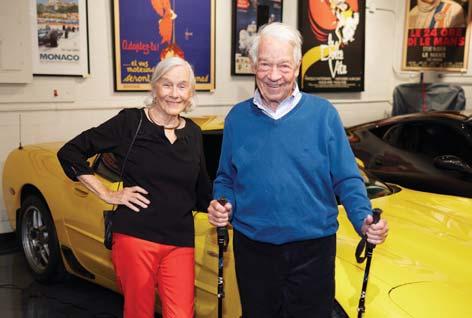
Dr. and Mrs. Galen R. Warren
Jonathan and Janet Weaver
Jim and George Ann Wesner
Jo Ann Wieghaus
In Memory of Bruce R. Smith
Ronna and James Willis
Steve and Katie Wolnitzek
Carol and Don Wuebbling
Mr. and Mrs. Robert L. Zierolf
Anonymous (4)
SYMPHONY CIRCLE
Gifts of $1,500–$2,999
Jeff and Keiko Alexander §
Lisa Allgood
Judy Aronoff and Marshall Ruchman
Dr. Diane S. Babcock §
Beth and Bob Baer
Mrs. Gail Bain
William and Barbara Banks
Glenda and Malcolm Bernstein
David and Elaine Billmire
Neil Bortz
William & Mary Bramlage
Mrs. Jo Ann C. Brown
Ms. Jaqui Brumm
Rachelle Bruno and Stephen Bondurant
Chris and Tom Buchert
Dr. Leanne Budde
Daniel A. Burr
Ms. Deborah Campbell §
Ms. Barbara Caramanian
Tom Carpenter and Lynne Lancaster
Dr. Alan Chambers
Beverly Kinney and Edward Cloughessy
Carol C. Cole §
Randy K. and Nancy R. Cooper
Andrea D. Costa, Esq.
Mr. and Mrs. Charles E. Curran, III §
Mr. Louis M. Dauner and Ms. Geraldine N. Wu
Mrs. Shirley Duff
David and Linda Dugan
Mr. and Mrs. John G. Earls §
Barry and Judy Evans
Gail F. Forberg §
Dr. Charles E. Frank and Ms. Jan Goldstein
Mr. and Mrs. Joseph Fricke
Linda P. Fulton §
Dudley Fulton
Kathleen Gibboney
Mrs. Jay N. Gibbs
Louis and Deborah Ginocchio
Donn Goebel and Cathy McLeod
Dr. and Mrs. Glenn S. Gollobin
Drew Gores and George Warrington
Jim and Jann Greenberg
Bill and Christy Griesser
John and Elizabeth Grover
Esther B. Grubbs §
Mr. and Mrs. Byron Gustin
Ham and Ellie Hamilton
Mrs. Jackie Havenstein
Mr. Tom Helmick
Mr. Fred Heyse
Melissa Huber
Mr. Bradley Hunkler
Heidi Jark and Steve Kenat
Linda Busken and Andrew M. Jergens §
Barbara M. Johnson
Mr. and Mrs. Paul H. Johnson
Ms. Sylvia Johnson
Holly H. Keeler
Arleene Keller
Mr. and Mrs. Woodrow Keown, Jr.
John and Molly Kerman
Bill and Penny Kincaid
In Memory of Jeff Knoop
Juri Kolts
Carol Louise Kruse
Everett and Barbara Landen
Evelyn and Fred Lang
Charles and Jean Lauterbach
Mary Mc and Kevin Lawson
Mr. Peter F. Levin §
Elizabeth Lilly*
Dr. and Mrs. Lynn Y. Lin
Mr. and Mrs. Clement H. Luken, Jr.
Edmund D. Lyon
Mark Mandell-Brown, MD and Ann Hanson
Mr. Gerron McKnight
John and Roberta Michelman
Mr. and Mrs. David A. Millett
Terence G. Milligan
Susan E. Noelcke
Nan L. Oscherwitz
Rick Pescovitz and Kelly Mahan
Sandy Pike §
James W. Rauth §
Beverly and Dan Reigle
Stephen and Betty Robinson
Marianne Rowe §
Nancy Ruchhoft
Mr. Joseph A. Schilling
Frederick R. Schneider
James P. Schubert
Stephanie A. Smith
Albert and Liza Smitherman
Bill and Lee Steenken
Mrs. Donald C. Stouffer
Mr. and Mrs. Richard Stradling, Jr.
Susan and John Tew
Janet Todd
Mr. William Trach
Barbie Wagner
Michael L. Walton, Esq
Ted and Mary Ann Weiss
David F. and Sara K. Weston Fund
Virginia Wilhelm
Rev. Anne Warrington Wilson
Robert and Judy Wilson
Jeff Yang
David and Sharon Youmans
Ms. Nancy Zimpher
Anonymous (7)

CONCERTO CLUB Gifts of $500–$1,499
Hiro Adachi
Christine O. Adams
Romola N. Allen §
In memory of Carol Allgood & Ester Sievers
Mr. Thomas Alloy & Dr. Evaline Alessandrini
Paul and Dolores Anderson
Mr. and Mrs. Frank Andress
Dr. Victor and Dolores Angel
Nancy J. Apfel
Lynne & Keith Apple, Honoring our Family
Ms. Laura E. Atkinson
Mr. David H. Axt and Ms. Susan L. Wilkinson
Nate and Greta Bachhuber
Mrs. Mary M. Baer
Todd and Ann Bailey
Jerry and Martha Bain
Mr. and Mrs. Carroll R. Baker
Jack and Diane Baldwin
Peggy Barrett §
Mrs. Polly M. Bassett
Ms. Glenda Bates
Michael and Amy Battoclette
Drs. Carol and Leslie Benet
Fred Berger
Dr. Allen W. Bernard
Barbara and Milton Berner
Dr. David and Cheryl Bernstein
Ms. Henryka Bialkowska-Nagy
Sharon Ann Kerns and Mike Birck
Michael Bland
Milt and Berdie Blersch
Randal and Peter Bloch
Dr. and Mrs. Jeffrey Bloomer
Ms. Sandra Bolek
Ron and Betty Bollinger
Clay and Emily Bond
Mr. and Mrs. Kenneth Borisch
Dr. and Mrs. Kevin Bove
Dr. Carol Brandon
Marilyn and John Braun
Briggs Creative Services, LLC
Robert and Joan Broersma
Marian H. Brown
Jacklyn and Gary Bryson
Bob and Angela Buechner
Jack and Marti Butz
John Byrd
Mr. and Mrs. Christopher Canarie
Mr. and Mrs. Thomas Carothers
Susan L. Carson
Dr. Julia H. Carter
Mike and Shirley Chaney
Catharine W. Chapman §
Ichun Chiao
Dee and Frank Cianciolo Fund*
James Civille
James Clasper and Cheryl Albrecht
Mr. Robert Cohen and Ms. Amy J. Katz
Dr. George I. Colombel
Fred W. Colucci
Mr. and Mrs. Philip K. Cone
Marilyn Cones
Dr. Margaret Conradi
Thomas and Barbara Conroy
Janet Conway
Jack and Janice Cook §
Robin Cotton and Cindi Fitton
Dennis and Pat Coyne
Martha Crafts
Dr. James Creech
Tim and Katie Crowley
Susan and John Cummings
Adrian and Takiyah Cunningham
Jacqueline Cutshall
Mr. and Mrs. Henry F. Dabek, Jr.
Mr. Joseph and Mrs. Lori Dattilo
Mr. and Mrs. Jerry E. Davis
Loren and Polly DeFilippo
Stephen and Cynthia DeHoff
Rozelia Park and Christopher Dendy
Robert B. Dick, Ph.D.
Ms. Rhonda Dickerscheid
Jean and Rick Donaldson
George Dostie
Mrs. John Doviak
David and Kelley Downing
Meredith and Chuck Downton
Ms. Andrea Dubroff
Tom and Leslie Ducey
Tom and Dale Due
Amy Dunlea and Lois Mannon
Mr. Corwin R. Dunn
Michael D. and Carolyn Camillo Eagen
Mr. Daniel Epstein
Barbara Esposito-Ilacqua
Mr. Edward Ettin
Sally Eversole
Ms. Kate Farinacci
Dr. and Mrs. William J. Faulkner
Ms. Jean Feinberg
Ms. Barbara A. Feldmann
Richard and Elizabeth Findlay
Ilya Finkelshteyn and Evin Blomberg
Dr. and Mrs. Thomas Fischer
Anne and Alan Fleischer
Ms. Nancy B. Forbriger
Janice and Dr. Tom Forte
Mr. and Ms. Bernard Foster
Susan L. Fremont
Mr. Gregrick A. Frey
In memory of Eugene and Cavell Frey
Lynne Friedlander and Jay Crawford
Michael and Katherine Frisco
Mr. and Mrs. James Fryman
Marjorie Fryxell
Ms. Bianca Gallagher
Christophe Galopin
Melanie Garner and Michael Berry
Ms. Jane Garvey
Ms. Christina Gearhart
Drs. Michael and Janelle J. Gelfand
Mr. Henry Genther
Dr. and Mrs. Freidoon Ghazi
Ms. Kathryn Gibbons
FINANCIAL SUPPORT
Ann and Harry Santen at a Board of Directors event honoring Louis Langrée on NOV 8. Credit: Claudia Hershner
Fanfare Magazine | 77
Guest artist Audra McDonald with Board member Adrian Cunningham and family. Credit: CSO Staff
David J. Gilner
Mr. and Mrs. James Gingrich
Dr. Jerome Glinka and Ms. Kathleen Blieszner
Dr. and Mrs. Charles J. Glueck
Dan Goetz
Dr. and Mrs. Richard Goetz
Mr. Ken Goldhoff
Mr. and Mrs. Jim Goldschmidt
Ms. Arlene Golembiewski
Robert and Cynthia Gray
Carl and Joyce Greber
Mary Grooms
Dr. Anthony and Ann Guanciale
Janet C. Haartz and Kenneth V. Smith
Alison and Charles Haas
Ms. Sarah Habib
Mary and Phil Hagner
Peter Hames
Walter and Karen Hand
In memory of Dr. Stuart Handwerger
Catherine K. Hart
Mariana Belvedere and Samer Hasan
Mr. John A. Headley
Amy and Dennis Healy
Kenneth and Rachel Heberling
Mrs. Betty H. Heldman §
Howard D. and Mary W. Helms
Mrs. E. J. Hengelbrok, Jr.
Mr. Jeff Herbert
Michelle and Don Hershey
Janet & Craig Higgins
Mr. and Mrs. Russell W. Hill
Mr. and Mrs. William A. Hillebrand
Kyle and Robert Hodgkins
Benjamin & Naomi Hoffman
Ms. Leslie M. Hoggatt
Tim and Connie Holmen
Richard and Marcia Holmes
Bob and Dolly Holzwarth
Stanley A. Hooker, III
Mr. Joe Hoskins
Sean and Katie Hubbard
Karen and David Huelsman
Mrs. Carol H. Huether
Dr. G. Edward & Sarah Hughes
Ms. Idit Isaacsohn
Dr. Maralyn M. Itzkowitz
Mrs. Charles H. Jackson, Jr.
Mr. and Mrs. Fred Jebens
Marcia Jelus
David & Penny Jester
Mrs. Marilyn P. Johnston
In Honor of Lois Jolson
Elizabeth A. Jones
Mrs. Martha Jones
Scott and Patricia Joseph
Jay and Shirley Joyce
Mr. and Mrs. Robert Judd
Ms. Mary Judge
Dr. James Kaya and Debra Grauel
Dr. and Mrs. Richard Kerstine
Mr. and Mrs. Dave Kitzmiller
Jack & Sharon Knapp
Pamela Koester-Hackman
Carol and Scott Kosarko
Mr. and Mrs. Robert H. Kraimer
Mr. and Mrs. Jonathan Kregor
Mr. and Mrs. Bruce A. Krone
Kathleen B. and Michael C. Krug Fund*
Pat and Randy Krumm §
Mark & Elisabeth Kuhlman
Mrs. John H. Kuhn §
Jo Ann and George Kurz
Pinky Laffoon & Family
Patricia Lambeck
Asher Lanier
Karen Larsen
Ms. Sally L. Larson
Mrs. Julie Laskey
Joe Law and Phil Wise
Mrs. Judith A. Leege in memory of Philip B. Leege
Dr. Carol P. Leslie
Mr. and Mrs. Lance A. Lewis
Mrs. Maxine F. Lewis
Mr. Arthur Lindsay
Paula and Nick Link

Mrs. Marianne Locke
Mr. Ajene Lomax
Steven Kent Loveless
Luke and Nita Lovell
David and Katja Lundgren
Mrs. Mary Reed Lyon
Marshall and Nancy Macks
Mr. and Mrs. Julian A. Magnus
Jenea Malarik
Ms. Cheryl Manning
Andrew and Jean Martin
Mr. and Mrs. Warren L. Mason
Mr. and Mrs. Dean Matz
Ms. Mary Jane Mayer
Dr. Janet P. McDaniel
Tim and Trish McDonald
Robert and Heather McGrath
Mark McKillip and Amira Beer
Art and Stephanie McMahon
Stephanie McNeill
Charles and JoAnn Mead
Ms. Nancy Menne
Ms. Mary Ann Meyer
Michael V. Middleton
Laura Milburn
Sonia R. Milrod
Dr. Stanley R. Milstein §
Ms. Laura Mitchell
Mr. Steven Monder
Eileen W. and James R. Moon
Regeana and Al Morgan
Mr. William J. Morgan
Mr. Scott Muhlhauser
Alan Flaherty and Patti Myers §
Mr. and Mrs. Norman Neal
Mr. Scott Nelson and Dr. Susan Kindel
Mr. Ted Nelson and Ms. Ixi Chen
Ms. Helen Neumann
Mr. and Mrs. Christopher Newcomer
Amy Paul and Jerry Newfarmer
Mrs. Alfred K. Nippert
Jane Oberschmidt §
Ms. Sylvia Osterday
Phyllis Overmann
John A. Pape
The Pavelka Family
Carol and Jim Pearce
Ann and Marty Pinales
Dr. Robert and Jackie Prichard
Mrs. Stewart Proctor
Dr. Aik Khai Pung
Marjorie and Louis Rauh
Ms. Mary Redington
Dr. and Mrs. Robert Reed
Dr. Robert Rhoad and Kitsa Tassian Rhoad
Stephanie Richardson
Mr. David Robertson
Laurie and Dan Roche
Mr. and Mrs. Ian Rodway
Dr. Anna Roetker
Ms. Jeanne C. Rolfes
Catherine Calko
Dr. and Mrs. Gary Roselle
Amy and John Rosenberg
Ellen and Louis Ross
Mr. and Mrs. G. Roger Ross
Dr. Deborah K. Rufner
J. Gregory and Judith B. Rust
Elizabeth and Kazuya
David and Judy Savage
Mr. Christian J. Schaefer
Cindy Scheets
Ms. Carol Schleker
Mr. and Mrs. Patrick Schleker
Jane and Wayne Schleutker
Dr. and Mrs. Michael Schmerler
Mrs. Donna Schnicke
George Palmer Schober
Tim and Jeannie Schoonover
Glenda C. Schorr Fund*
Carol J. Schroeder §
Mary D. Schweitzer
Dr. Joseph Segal and Ms. Debbie Friedman
Elaine Semancik
Ms. Joycee Simendinger
Kristin and David Skidmore
In Honor of Kenneth Skirtz
Ms. Martha Slager
Susan and David Smith
Ms. Margaret Smith
Mark M. Smith (In memory of Terri C. Smith)
Stephen and Lyle Smith
Phillip and Karen Sparkes
Paula Spitzmiller
In Honor of Melody Sawyer Richardson
Marian P. Stapleton
Mr. and Mrs. Timothy Stautberg
Ms. Ruth M. Stechschulte
Mark and Anne Stepaniak
Susan M. and Joseph Eric Stevens
Mr. Jason V. Stitt
Stephanie and Joseph Stitt
Nancy and Gary Strassel
Ms. Susan R. Strick
Mr. George Stricker, Jr.
Mr. Mark Stroud
Patricia Strunk §
Kathryn Sullivan
Dr. Alan and Shelley Tarshis
Maureen Taylor
Mr. Fred Tegarden
Carlos and Roberta Teran
Rich and Nancy Tereba
Linda and Nate Tetrick
Joyce and Howard Thompson
Mr. Stuart Tobin
Marcia and Bob Togneri
Torey and Tom Torre
Mrs. Esthela Urriquia
Dr. Ilse M. van der Bent
Mr. D. R. Van Lokeren
Dr. Judith Vermillion
Jim and Rachel Votaw §
Ms. Barbara Wagner
Mr. and Mrs. James L. Wainscott
Jane A. Walker
Sarella Walton
Herman & Margaret Wasserman
Music Fund*
Mrs. Louise Watts
Maryhelen West
Ms. Bonnie White
Mr. Donald White
Ms. Elizabeth White
Ms. Diana Willen
Marsha Williams
Mr. Dean Windgassen and Ms. Susan Stanton Windgassen §
Don and Karen Wolnik
Rebecca Seeman and David Wood
Mr. and Mrs. Robert Wylly III
Mr. John M. Yacher
Mrs. Darleen Young
Judy and Martin Young
Mr. David Youngblood and Ms. Ellen Rosenman
Cheryl Zalzal
Dr. and Mrs. Daryl Zeigler
Ms. Joan Zellner
Moritz and Barbara Ziegler
Mr. Richard K. Zinicola and Ms. Linda R. Holthaus
Anonymous (25)
List as of February 1, 2024
GIFTS IN-KIND
Mr. Michael Culligan
Graeter’s Ice Cream
Jones Day
The Voice of Your Customer
List as of February 21, 2024
* Denotes a fund of The Greater Cincinnati Foundation.
§ Denotes members of The Thomas Schippers Legacy Society. Individuals who have made a planned gift to the Cincinnati Symphony Orchestra

Mick and Nancy Shaughnessy
Jerry and Donna Shell
The Shepherd Chemical Company
Alfred and Carol Shikany
Jacqueline M. Mack and Dr. Edward B. Silberstein

FINANCIAL SUPPORT
Your story beautifully told BOOK PUBLISHERS SINCE 1987 937.382.3196 orangefrazer.com Writing • Design Printing • Distribution 78 | 2023–24 SEASON
THE THOMAS SCHIPPERS LEGACY SOCIETY

Mr. & Mrs. James R. Adams
Jeff & Keiko Alexander
Mrs. Robert H. Allen
Dr. Toni Alterman
Paul R. Anderson
Carole J. Arend
Donald C. Auberger, Jr.
Thomas Schippers was Music Director from 1970 to 1977. He left not only wonderful musical memories, but also a financial legacy with a personal bequest to the Orchestra. The Thomas Schippers Legacy Society recognizes those who contribute to the Orchestra with a planned gift. We thank these members for their foresight and generosity. For more information on leaving your own legacy, contact Kate Farinacci at 513.744.3202.
Mary J. Healy
Frank G. Heitker
Anne P. Heldman
Betty & John* Heldman
Ms. Roberta Hermesch*
Karlee L. Hilliard
Michael H. Hirsch
Mr. & Mrs. Joseph W. Hirschhorn
Daniel J. Hoffheimer
Kenneth L. Holford
Mr. George R. Hood
Dr. Diane Schwemlein Babcock
Henrietta Barlag
Peggy Barrett
Jane* & Ed Bavaria
David & Elaine Billmire
Walter Blair
Lucille* & Dutro Blocksom
Rosemary & Frank Bloom*
Dr. John & Suzanne Bossert
Dr. Mollie H. Bowers-Hollon
Ronald Bozicevich
Thomas A. Braun, III
Joseph Brinkmeyer
Mr. & Mrs. Frederick Bryan, III
Harold & Dorothy Byers
Deborah Campbell & Eunice M. Wolf
Myra Chabut*
Catharine W. Chapman
Michael L. Cioffi & Rachael Rowe
Mrs. Jackson L. Clagett III
Lois & Phil* Cohen
Leland M.* & Carol C. Cole
Grace A. Cook
Jack & Janice Cook
Mr. & Mrs. Charles Cordes
Andrea Costa
Peter G. Courlas & Nick Tsimaras*
Mr. & Mrs. Charles E. Curran III
Amy & Scott Darrah, Meredith & Will Darrah, & children
Caroline H. Davidson
Harrison R.T. Davis
Ms. Kelly M. Dehan
Amy & Trey Devey
Robert W. Dorsey
Jon & Susan Doucleff
Ms. Judith A. Doyle
Mr. & Mrs. John Earls
Barry & Judy Evans
Linda & Harry Fath
Alan Flaherty
Mrs. Richard A. Forberg*
Ashley & Barbara Ford
Guy & Marilyn Frederick
Rich Freshwater & Family
Susan Friedlander*
Mr. Nicholas L. Fry
Linda P. Fulton
H. Jane Gavin
Edward J. & Barbara C.* Givens
Kenneth A. Goode
Clifford J. Goosmann & Andrea M. Wilson
Mrs. Madeleine H. Gordon
J. Frederick & Cynthia Gossman
Kathy Grote
Esther B. Grubbs, Marci Bein & Mindi Hamby
William Hackman
Vincent C. Hand & Ann E. Hagerman
Tom & Jan Hardy
William L. Harmon
Mrs. Morton L. Harshman*
Mr. & Mrs. Terence L. Horan
Mrs. Benjamin C. Hubbard
Susan & Tom Hughes
Carolyn R. Hunt*
Dr. William Hurford & Dr. Lesley Gilbertson
Mr. & Mrs. Paul Isaacs
Julia M. F. B. Jackson
Michael & Kathleen Janson
Andrew MacAoidh Jergens
Jean C. Jett
Margaret H. Jung
Mace C. Justice
Karen Kapella
Dr. & Mrs.* Steven Katkin
Rachel Kirley & Joseph Jaquette
Carolyn Koehl
Marvin Kolodzik & Linda Gallaher
Carol & Scott Kosarko
Michael & Marilyn Kremzar
Randolph & Patricia Krumm
Theresa M. Kuhn
Warren & Patricia Lambeck
Peter E. Landgren & Judith Schonbach Landgren
Owen & Cici Lee
Steve Lee
M. Drue Lehmann*
Mrs. Jean E. Lemon
Mr. Peter F. Levin
George & Barbara Lott
Janice* & Gary Lubin
Mr.* & Mrs. Ronald Lyons
Marilyn J. Maag
Margot Marples
David L. Martin
Allen* & Judy Martin
David Mason
Mrs. Barbara Witte McCracken
Laura Kimble McLellan
Dr. Stanley R. Milstein
Mrs. William K. Minor
Mr. & Mrs. D. E. Moccia
Kristin & Stephen Mullin
Christopher & Susan Muth
Patti Myers
Susan & Kenneth Newmark
Dr. & Mrs. Theodore Nicholas
Jane Oberschmidt
Marja-Liisa Ogden
Julie & Dick* Okenfuss
Jack & Marilyn Osborn*
Dr. & Mrs. Richard E. Park, MD
Mr. & Mrs. Charles Pease
Poul D. & JoAnne Pedersen
Sandy & Larry* Pike
Mrs. Harold F. Poe
Anne M. Pohl
Irene & Daniel Randolph
James W. Rauth
Barbara S. Reckseit
Melody Sawyer Richardson
Ellen Rieveschl
Elizabeth & Karl Ronn
Moe & Jack Rouse
Marianne Rowe
Ann & Harry Santen
Rosemary & Mark Schlachter
Carol J. Schroeder
Mrs. William R. Seaman
Dr. Brian Sebastian
Mrs. Mildred J. Selonick*
Mrs. Robert B. Shott
Sue & Glenn Showers
Irwin & Melinda Simon
Betsy & Paul* Sittenfeld
Sarah Garrison Skidmore
Adrienne A. Smith
David & Sonja* Snyder
Marie Speziale
Mr. & Mrs. Christopher L. Sprenkle
Barry & Sharlyn Stare
Bill & Lee Steenken
Tom & Dee Stegman
Barry Steinberg
Nancy M. Steman
John & Helen Stevenson
Mary* & Bob Stewart
Brett Stover
Dr. Robert & Jill Strub
Patricia M. Strunk
Ralph & Brenda* Taylor
Conrad F. Thiede
Minda F. Thompson
Carrie & Peter Throm
Dr. & Mrs. Thomas Todd
Nydia Tranter
Dick & Jane Tuten
Thomas Vanden Eynden & Judith Beiting
Mr. & Mrs. Robert Varley
Mr. & Mrs. James K. Votaw
Mr. & Mrs.* Randolph L. Wadsworth Jr.
Jack K. & Mary V. Wagner*
Nancy C. Wagner
Patricia M. Wagner
Mr.* & Mrs. Paul Ward
Jo Anne & Fred Warren
Mr. Scott Weiss & Dr. Charla Weiss
Anne M. Werner
Gary & Diane West
Charles A. Wilkinson
Ms. Diana Willen
Susan Stanton Windgassen
Mrs. Joan R. Wood
Alison & Jim Zimmerman
* Deceased
New Schippers members are in bold


FINANCIAL SUPPORT
Fanfare Magazine | 79
ADMINISTRATION
SHARED SERVICES & SUBSIDIARIES. The Cincinnati Symphony Orchestra’s business model is unique within the orchestral industry because it provides administrative services for other nonprofits and operates two subsidiary companies—Music & Event Management, Inc. and EVT Management LLC. With the consolidation of resources and expertise, sharing administrative services allows for all organizations within the model to thrive. Under this arrangement, the CSO produces hundreds of events in the Greater Cincinnati and Dayton regions and employs hundreds of people annually.
SENIOR MANAGEMENT TEAM
Jonathan Martin President & CEO
Harold Brown
The Honorable Nathaniel R. Jones Chief Diversity & Inclusion Officer
John Clapp Vice President of Orchestra & Production
Rich Freshwater Vice President & Chief Financial Officer
Michael Frisco
Vice President of Marketing
Felecia Tchen Kanney Vice President of Communications & Digital Media
Mary McFadden Lawson Chief Philanthropy Officer
Robert McGrath Chief Operating Officer
Anthony Paggett Acting Vice President of Artistic Planning
Kyle Wynk-Sivashankar Vice President of Human Resources
EXECUTIVE OFFICE
Jonathan Martin President & CEO
Laura Ruple Executive Assistant to the President & CEO
Robert McGrath
Chief Operating Officer
Shannon Faith Assistant to the Chief Operating Officer
ARTISTIC PLANNING
Anthony Paggett
Acting Vice President of Artistic Planning
Grace Kim Artistic Planning Intern
Theresa Lansberry
Artist Liaison
Shuta Maeno Assistant to the Music Director & Artistic Planning
Sam Strater
Senior Advisor for Cincinnati Pops Planning
COMMUNICATIONS & DIGITAL MEDIA
Felecia Tchen Kanney
Vice President of Communications & Digital Media
Charlie Balcom
Social Media Manager
KC Commander Director of Digital Content & Innovation
Maria Cordes Digital Media Coordinator
Kaitlyn Driesen Media & Label Services Manager
Kit Gladieux Communications Intern
Lauren Hall Digital Content Intern
Tyler Secor Director of Publications & Content Development
Lee Snow Digital Content Technology Manager
COMMUNITY ENGAGEMENT, DIVERSITY, EQUITY & INCLUSION
Harold Brown
The Honorable Nathaniel R. Jones Chief Diversity & Inclusion Officer
Key Crooms Director of Community Engagement
Vee Gibson Classical Roots Coordinator
Pamela Jayne Volunteer & Community Engagement Manager
Molly Rains Community Engagement Events Manager
FINANCE, IT & DATA SERVICES
Rich Freshwater Vice President & Chief Financial Officer
Deborah Benjamin Accounting Clerk
Julian Cann Accounting Clerk
Kathleen Curry Data Entry Clerk
Elizabeth Engwall Accounting Manager
Matt Grady Accounting Manager
Sharon Grayton Data Services Manager
Marijane Klug Accounting Manager
Shannon May Accounting Clerk
Kristina Pfeiffer Director of Finance
Elizabeth Salmons Accounting Clerk
Judy Simpson Director of Finance
Tara Williams Data Services Manager
HUMAN RESOURCES & PAYROLL
Kyle Wynk-Sivashankar Vice President of Human Resources
Megan Inderbitzin-Tsai Director of Payroll Services
Natalia Lerzundi Human Resources & Payroll Coordinator
Jenny Ryan Human Resources Manager
LEARNING
Carol Dary Dunevant Director of Learning
Hollie Greenwood Learning Coordinator
Kyle Lamb Learning Programs Manager
Maria Serrano CCM Arts Administration Graduate Assistant
Mason Stewart Education Programs Intern
MARKETING
Michael Frisco Vice President of Marketing
Leon Barton Website Manager
Jon Dellinger Copywriter & Marketing Manager
Carmen Granger Subscriptions & Loyalty Marketing Manager
Elaine Hudson Assistant Box Office Manager
Hannah Kaiser Assistant Box Office Manager
Abigail Karr Audience Engagement Manager
Stephanie Lazorchak Graphic Designer
Michelle Lewandowski Director of Marketing
Tina Marshall Director of Ticketing & Audience Services
Wendy Marshall
Group Sales Manager
Madelyn McArthur Marketing Intern
Amber Ostaszewski
Director of Audience Engagement
Alexis Shambley Email & Insight Marketing Manager
Patron Services Representatives
Ellison Blair, Lead
Drew Dolan, Lead
Lucas Maurer, Lead
Erik Nordstrom, Lead
Hannah Blanchette
Craig Doolin
Mary Duplantier
Ebony Jackson
Monica Lange
Talor Marren
Marian Mayen
Gregory Patterson
Matthew Wallenhorst
PHILANTHROPY
Mary McFadden Lawson Chief Philanthropy Officer
Laura Aldana Philanthropy Intern
Sean Baker Director of Institutional Giving
Bhavya Nayna Channan Corporate Giving Manager
Ashley Coffey Foundation & Grants Manager
Kate Farinacci Director of Special Campaigns & Legacy Giving
Penny Hamilton Philanthropy Assistant
Catherine Hann Assistant Director of Individual Giving
Rachel Hellebusch Institutional Giving Coordinator
Leslie Hoggatt Director of Individual Giving & Donor Services
Quinton Jefferson Research & Grants Administrator
D’Anté McNeal Special Projects Coordinator
Jenna Montes Individual Giving Manager
Emma Steward Donor Engagement Coordinator
PRODUCTION
John Clapp Vice President of Orchestra & Production
Laura Bordner Adams Director of Operations
Carlos Javier Production Manager
Alex Magg Production Manager
Isabella Prater Production Intern
Brenda Tullos Director of Orchestra Personnel
80 | 2023–24 SEASON


A NEW RECORDING BY LOUIS LANGRÉE CINCINNATI SYMPHONY ORCHESTRA
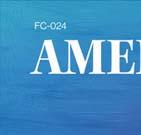







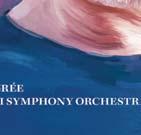


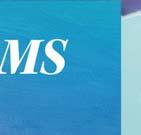
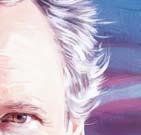







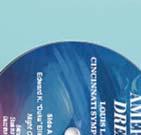
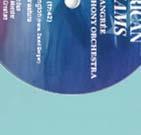





A limited run of vinyl will be sold exclusively at the following concerts:
MAY 3 & 4: Beethoven 7 & Dessner Premieres
MAY 3: CSO Proof: Wires
MAY 10-12: Louis’ Grand Finale
STREAMING ON ALL PLATFORMS MAY 3





FANFARE
Dreams was generously supported by Paul and Anna Isaacs.
or
Hall during the concerts
CINCINNATI American
Vinyl will not be sold via phone, email
mail. Vinyl will only be sold at Music
listed above.
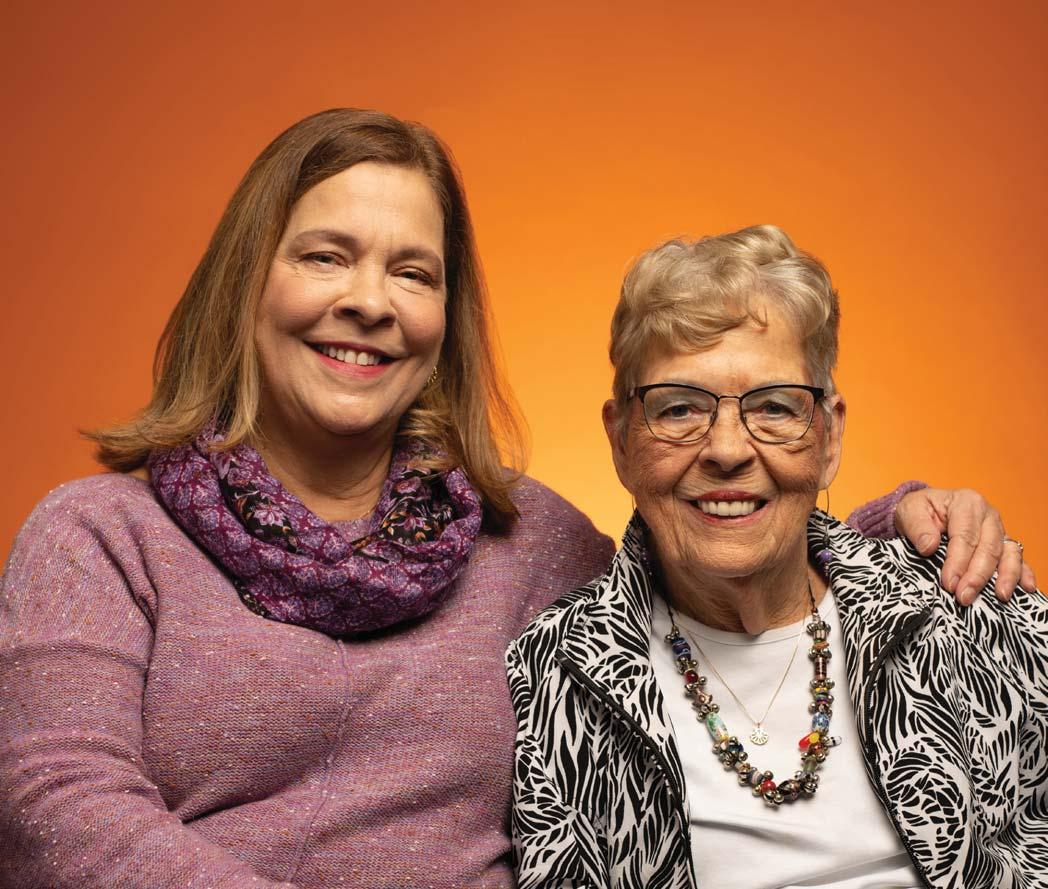




























































 Jonathan Martin
Jonathan Martin















 by KEN SMITH
by KEN SMITH




















































 Conductor John Morris Russell leads the Cincinnati Symphony Orchestra at the 2023 Evanston/E. Walnut Hills Block Party in July 2023. Credit: JP Leong
Conductor John Morris Russell leads the Cincinnati Symphony Orchestra at the 2023 Evanston/E. Walnut Hills Block Party in July 2023. Credit: JP Leong






















































































 The Lazarow Schwartz Family Fund JRH Consultants
The Lazarow Schwartz Family Fund JRH Consultants



































 Schoenberg
Schoenberg















 Antonín Dvořák
Antonín Dvořák

























































































